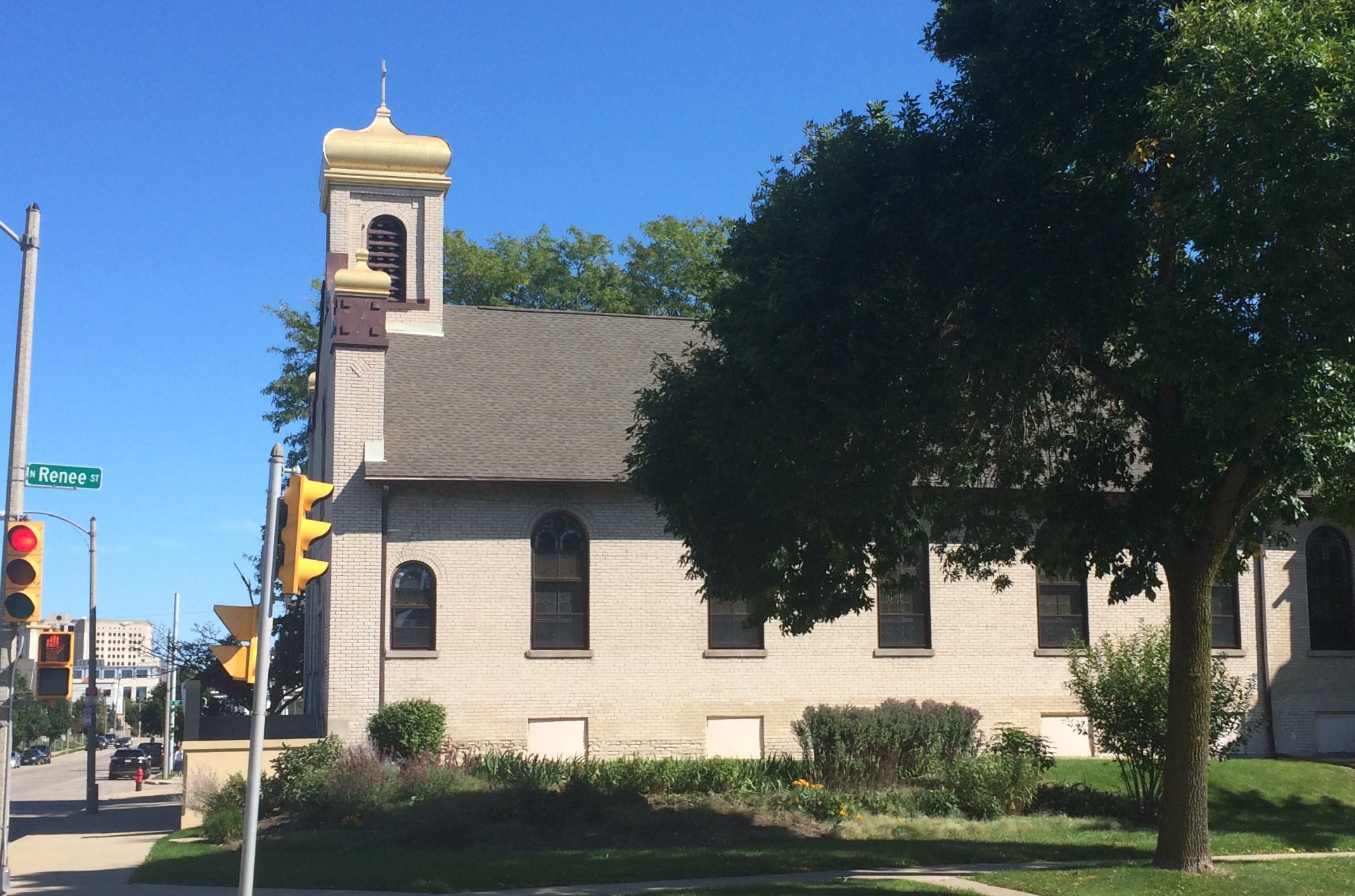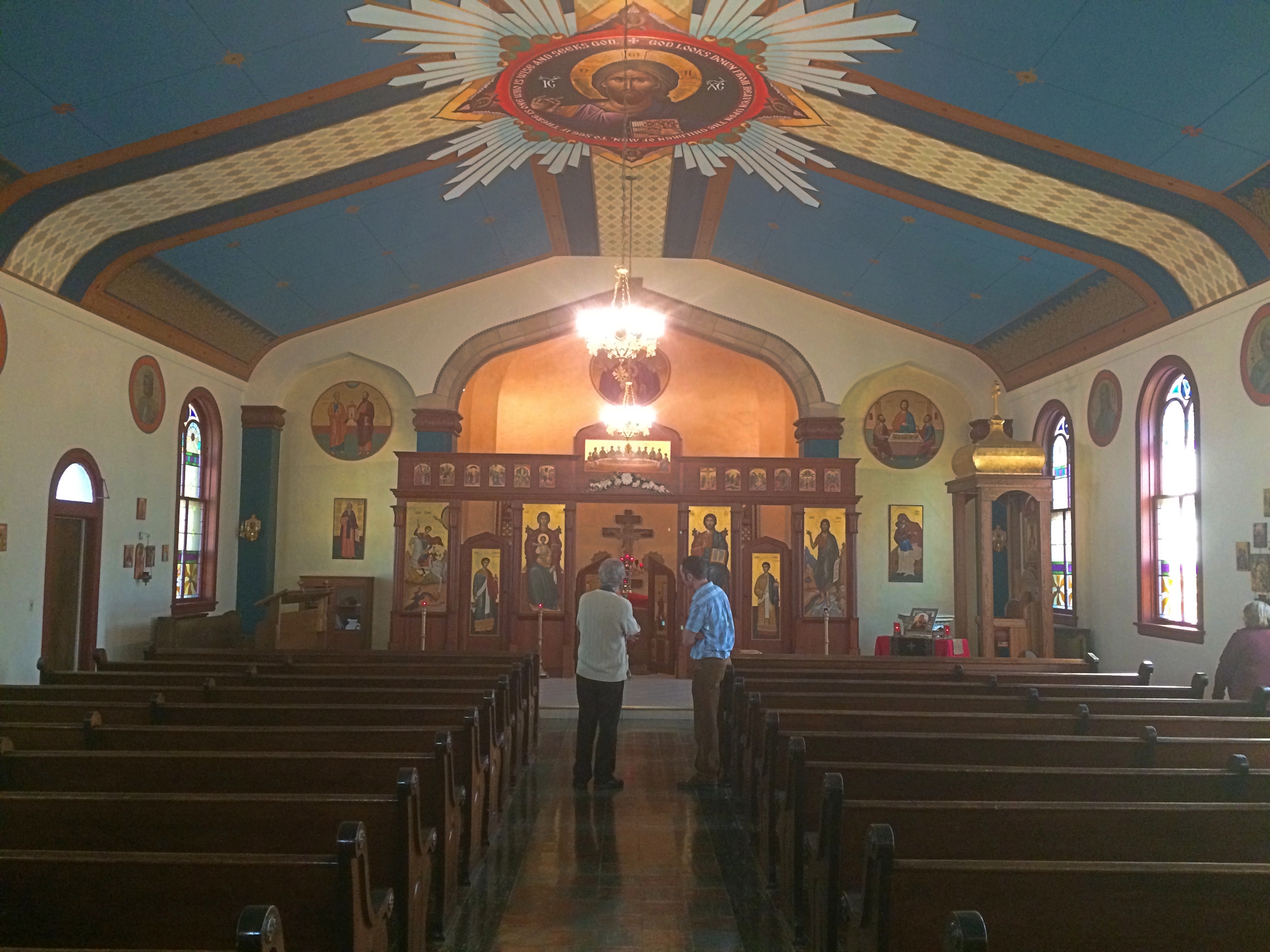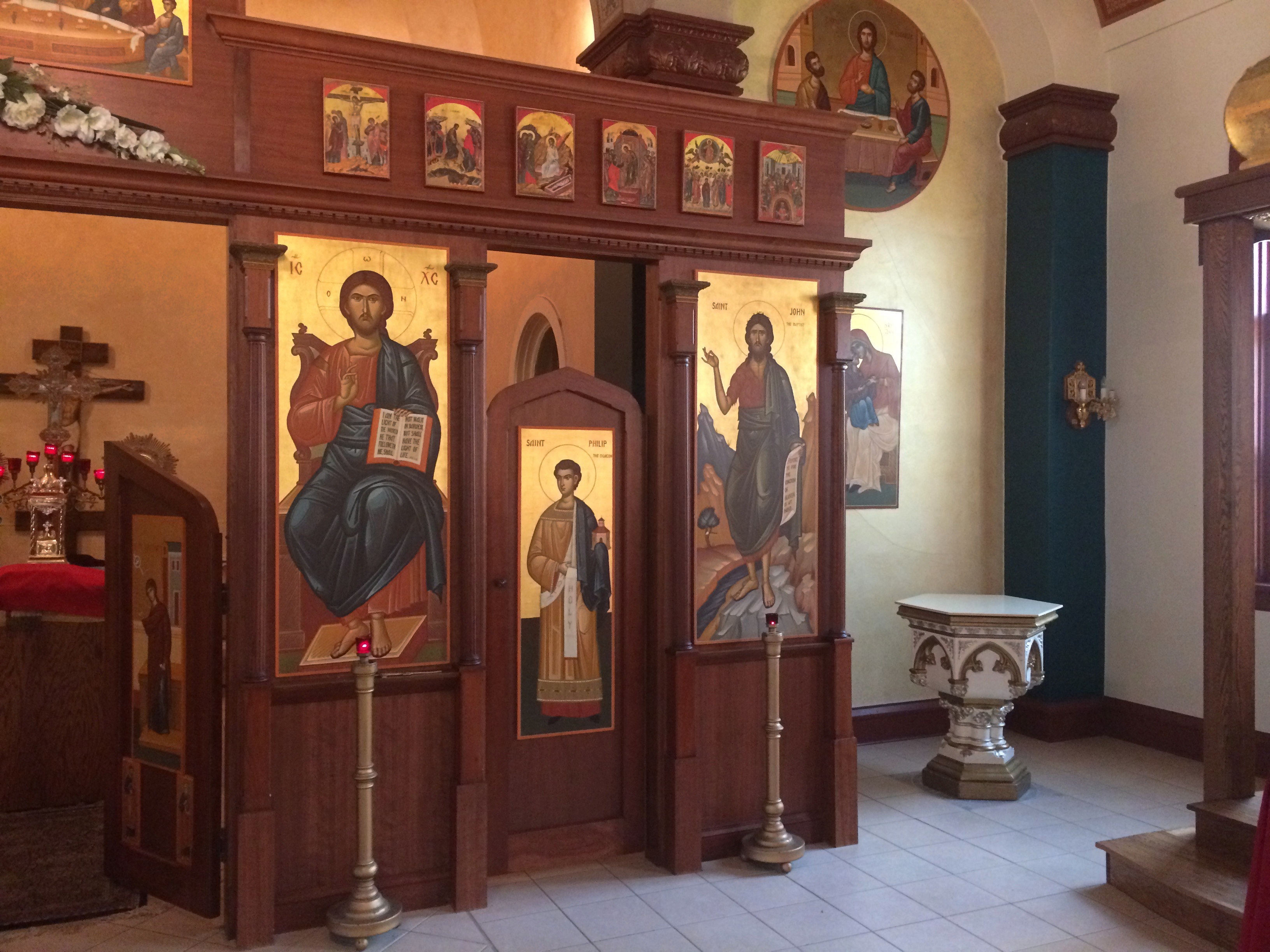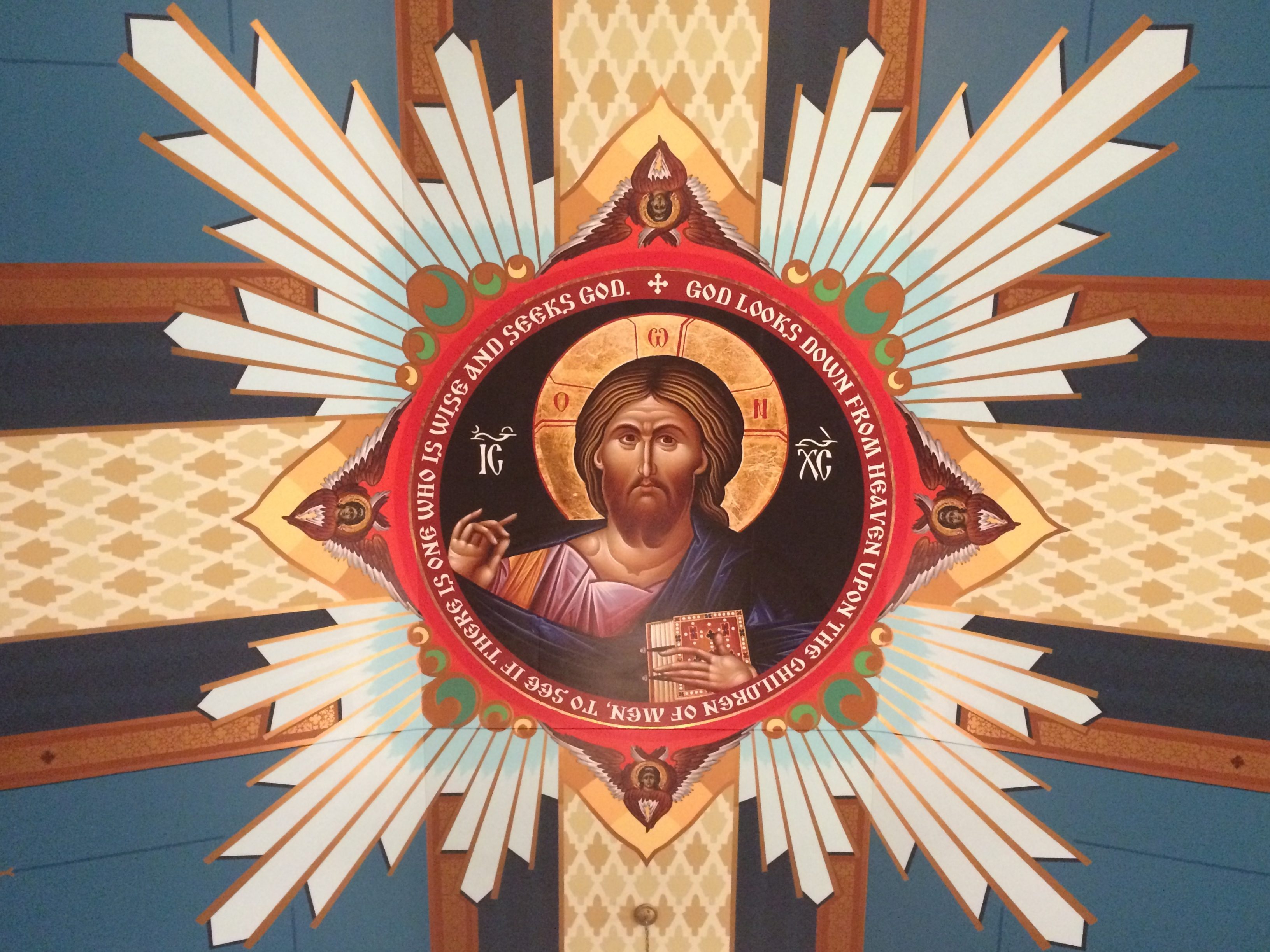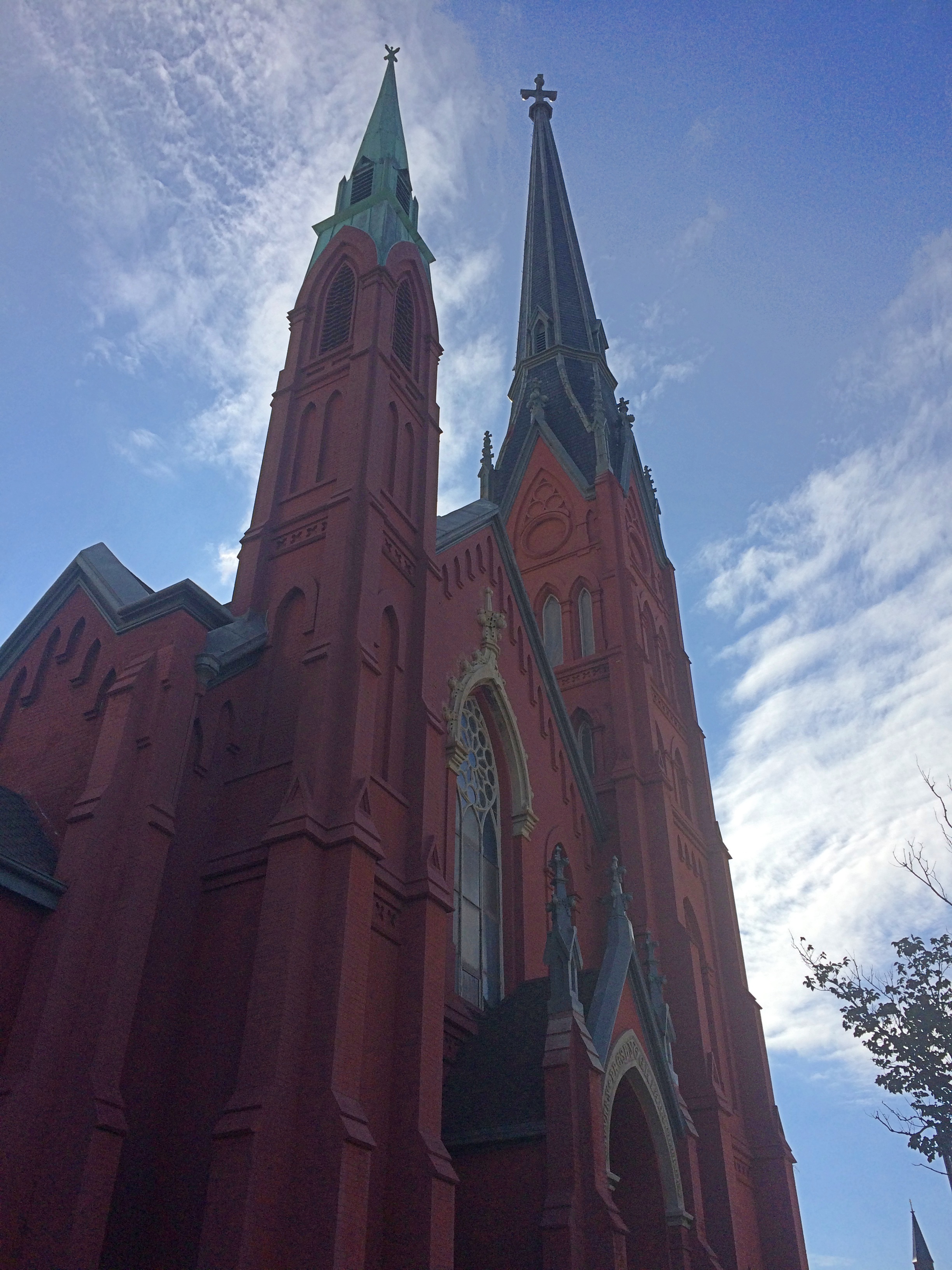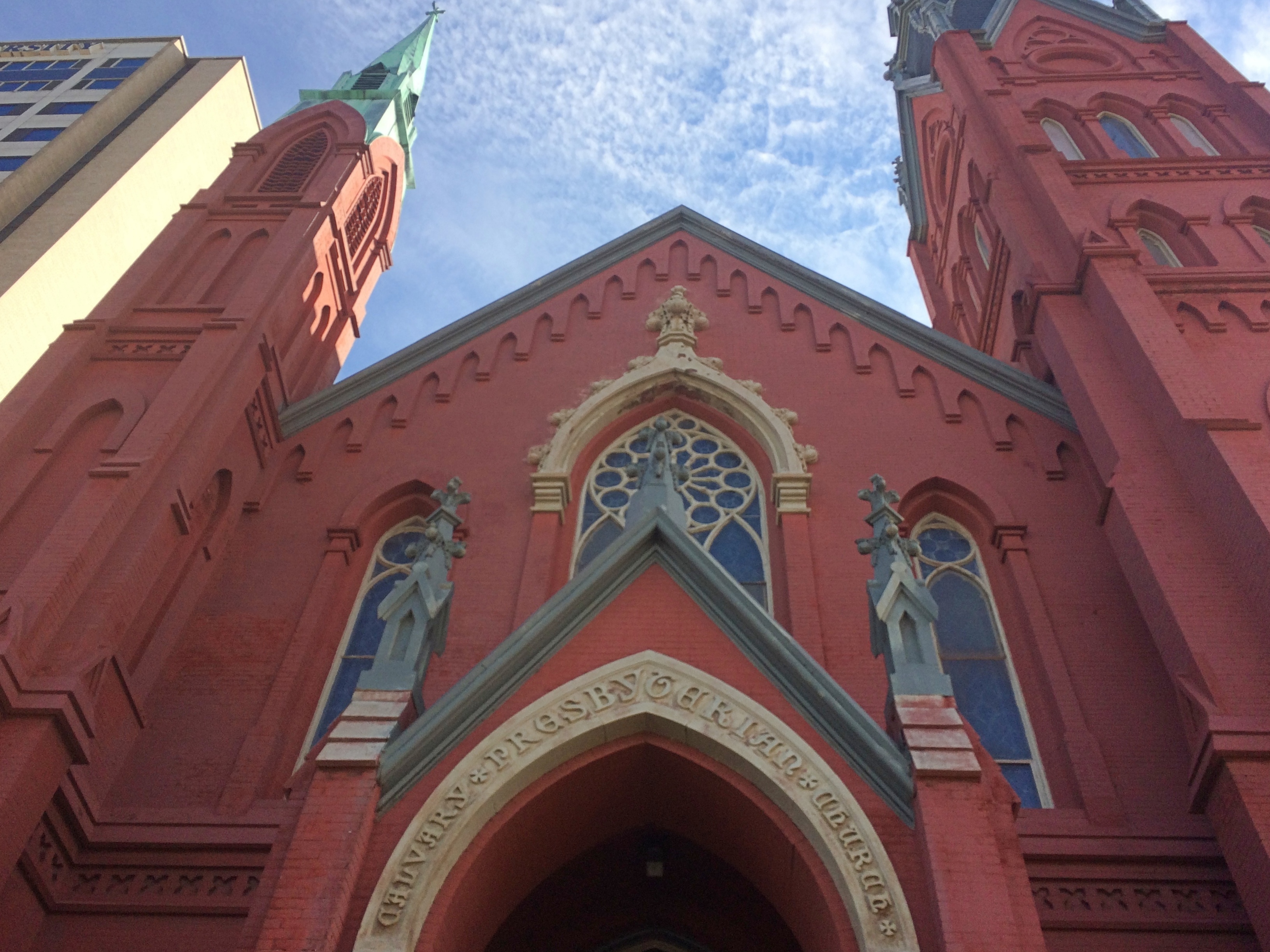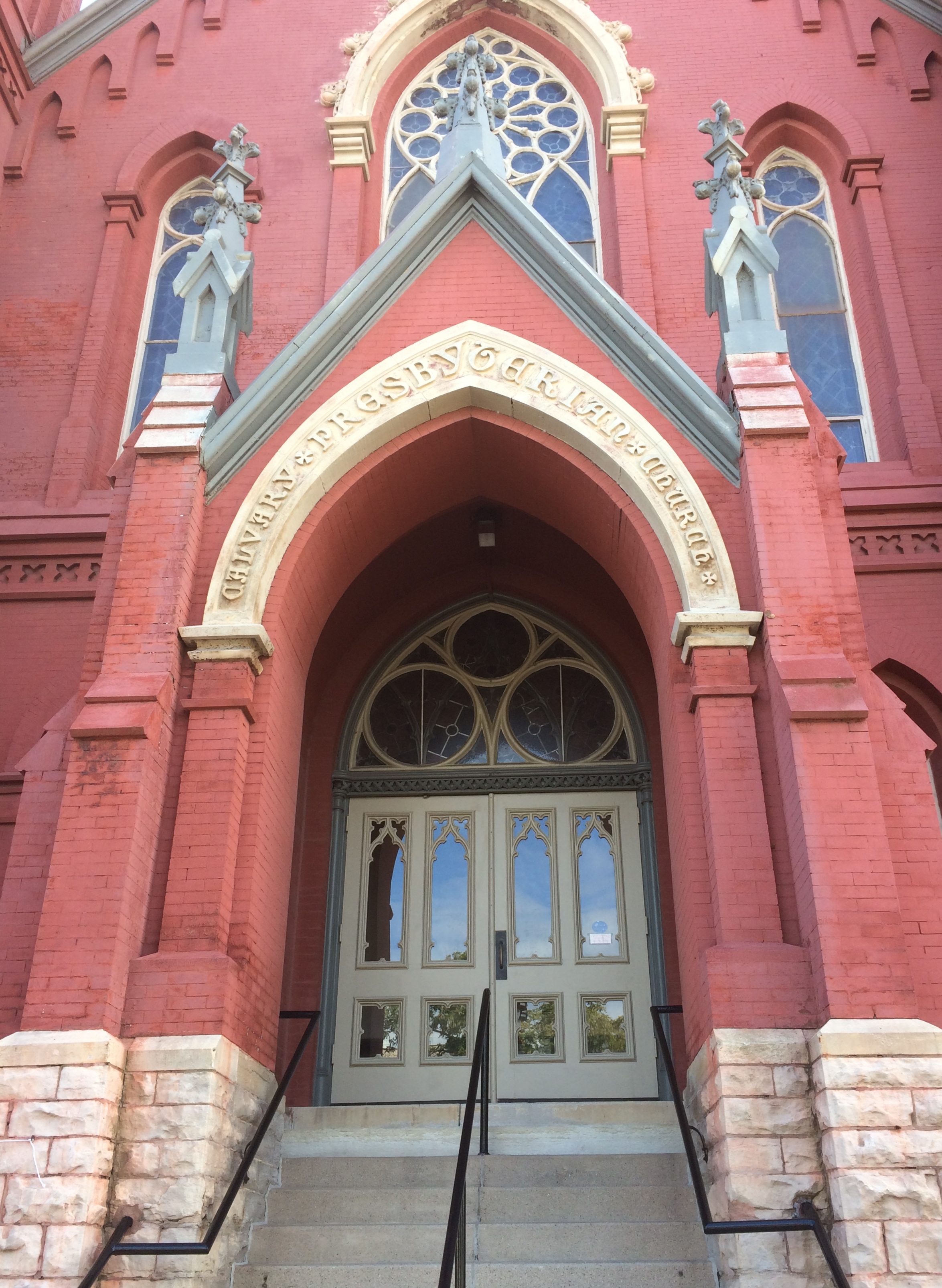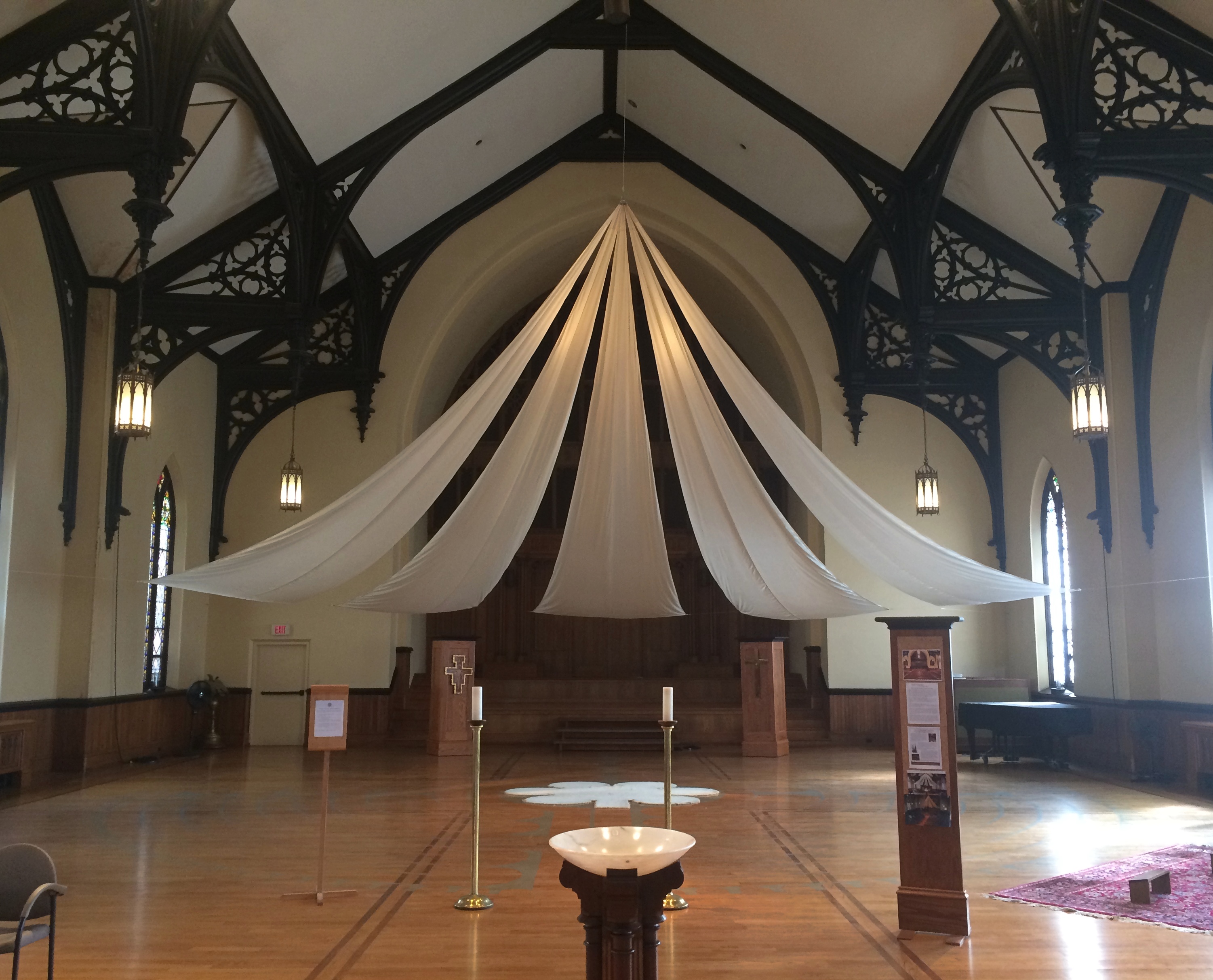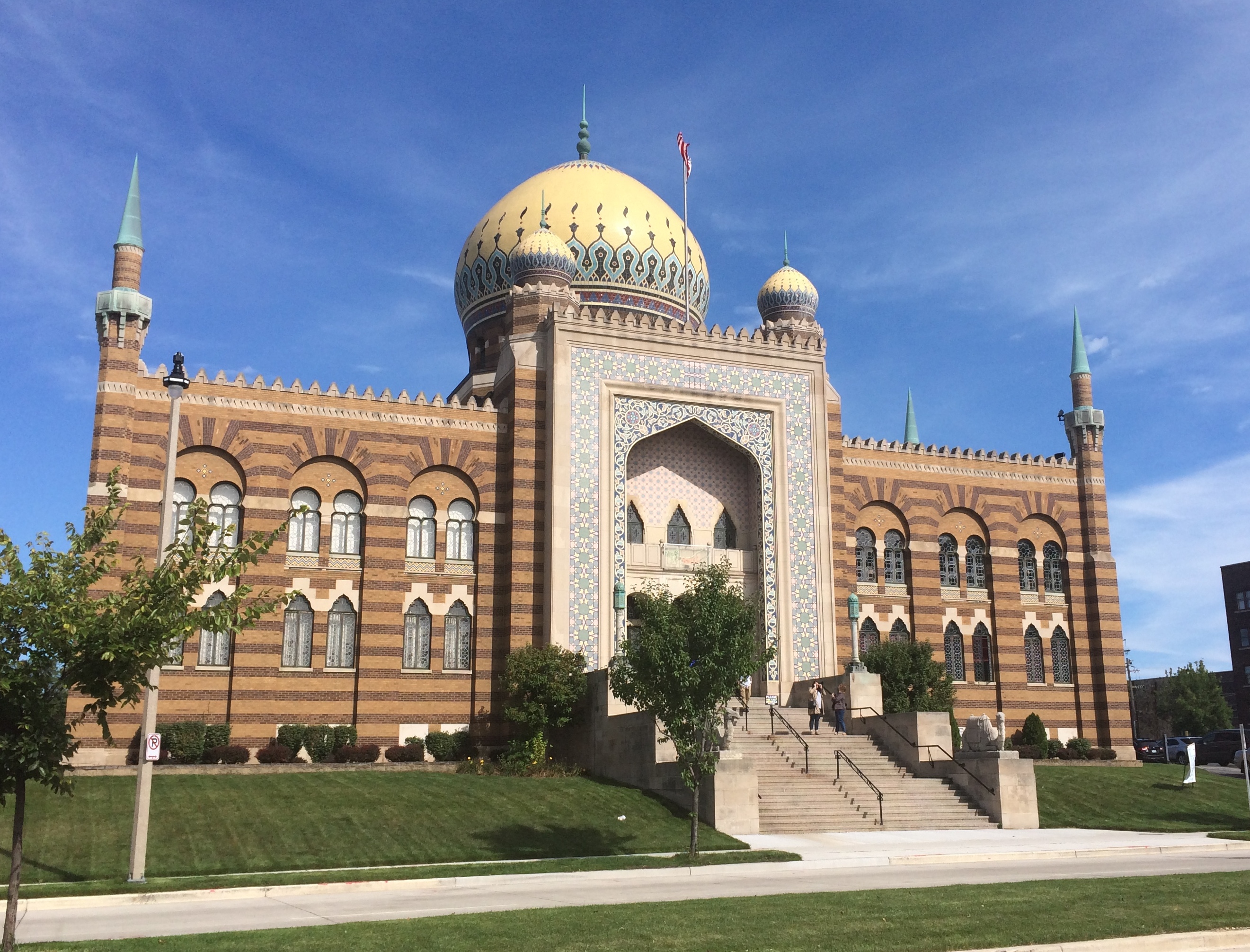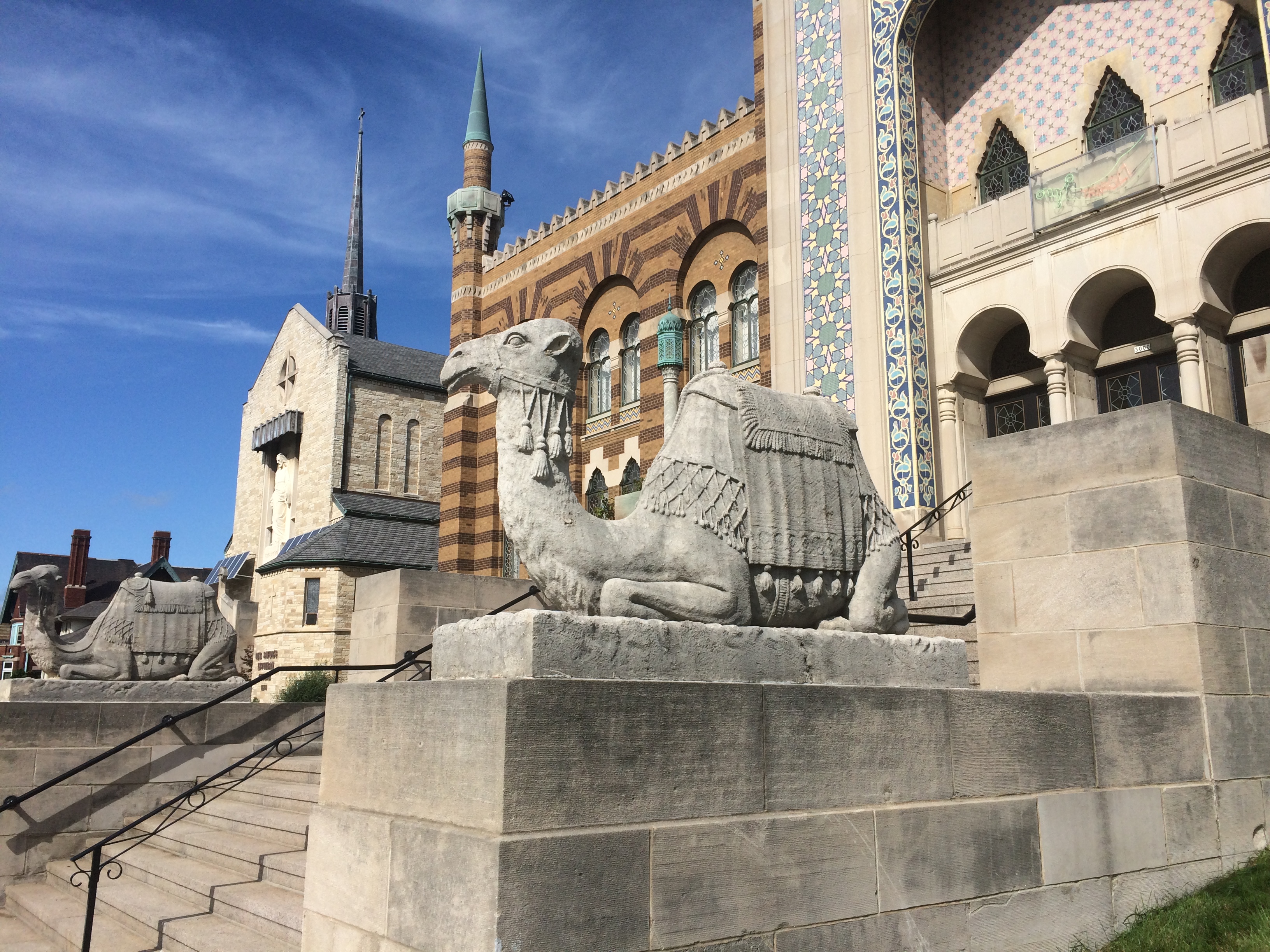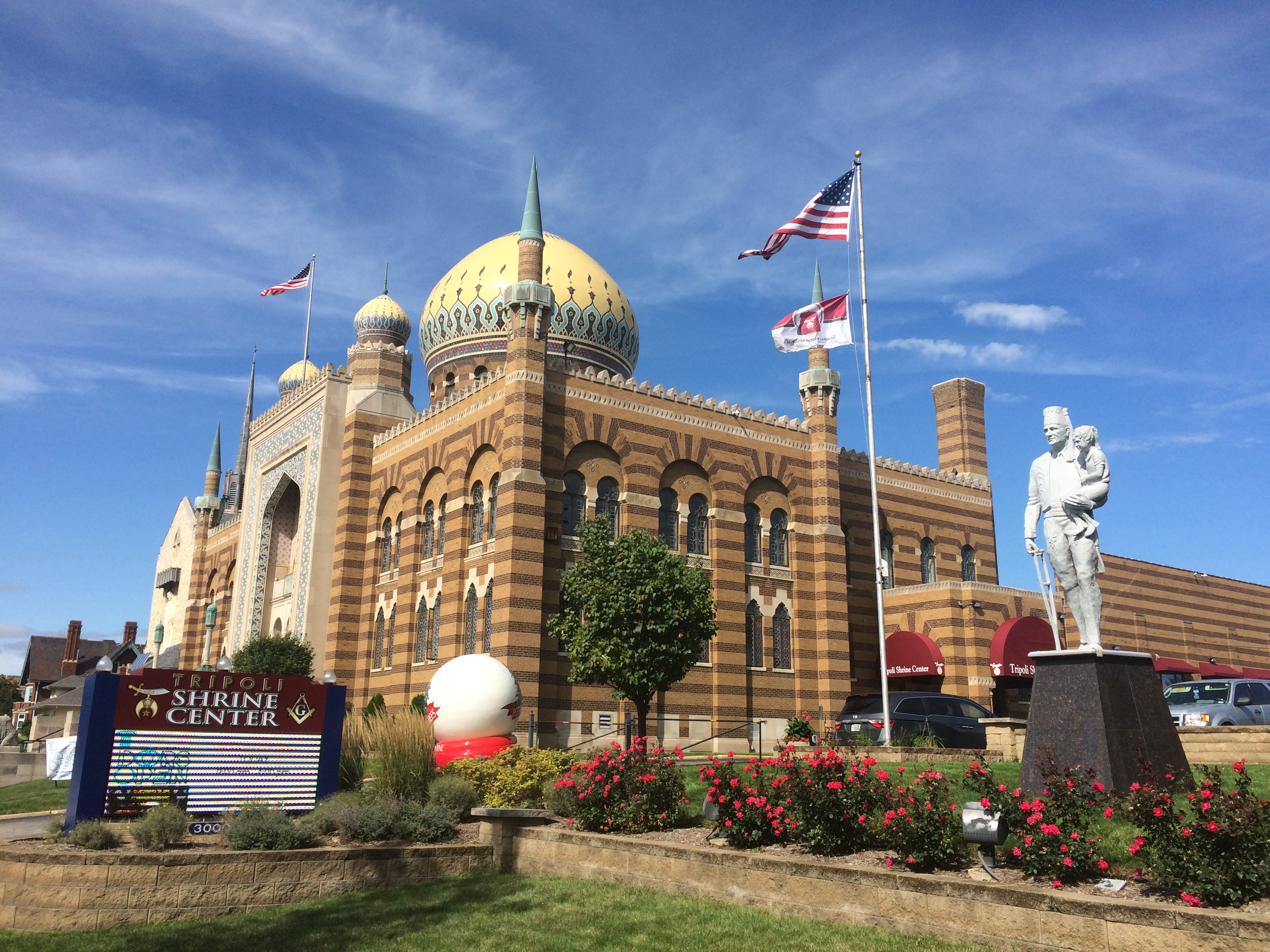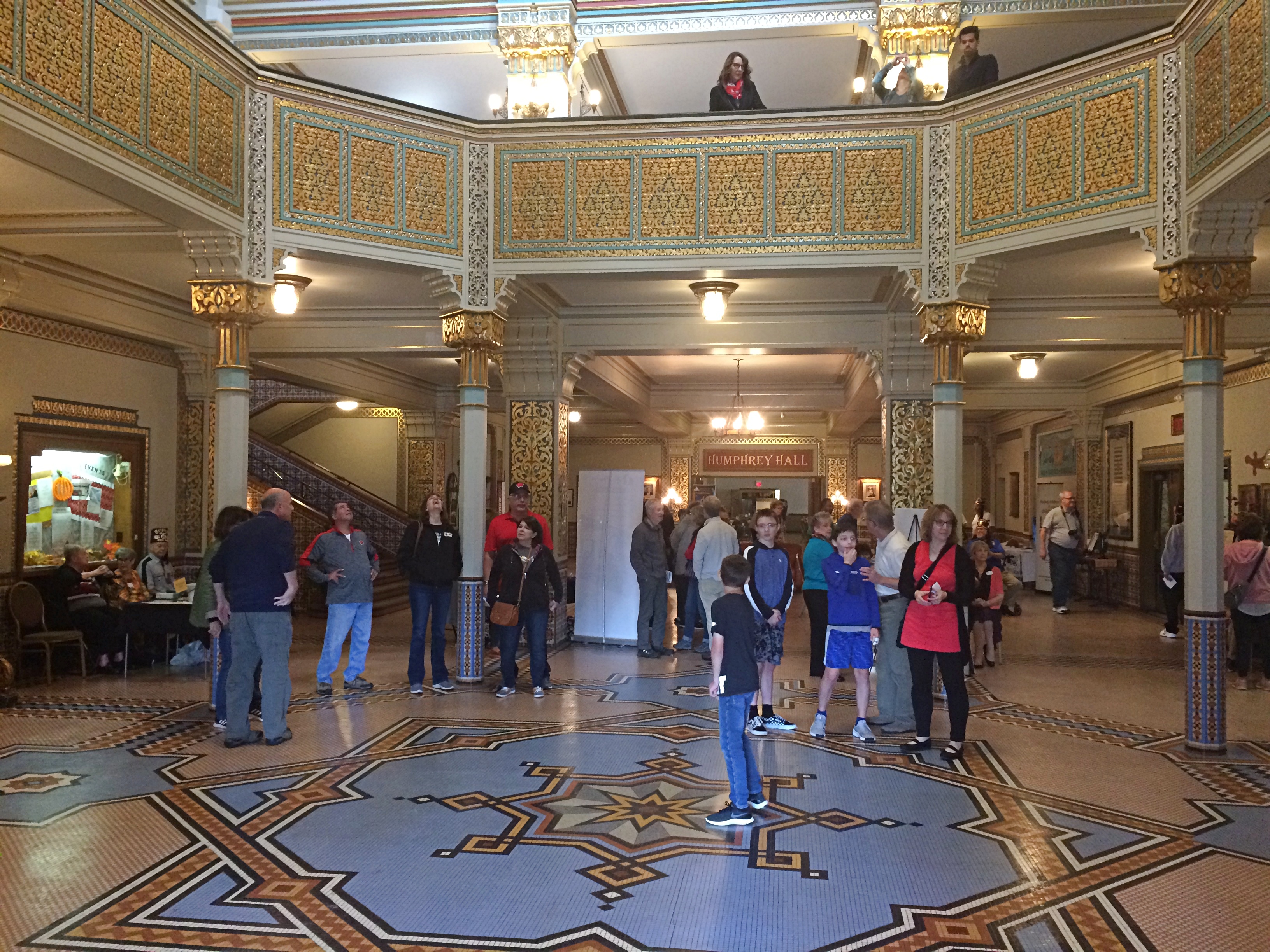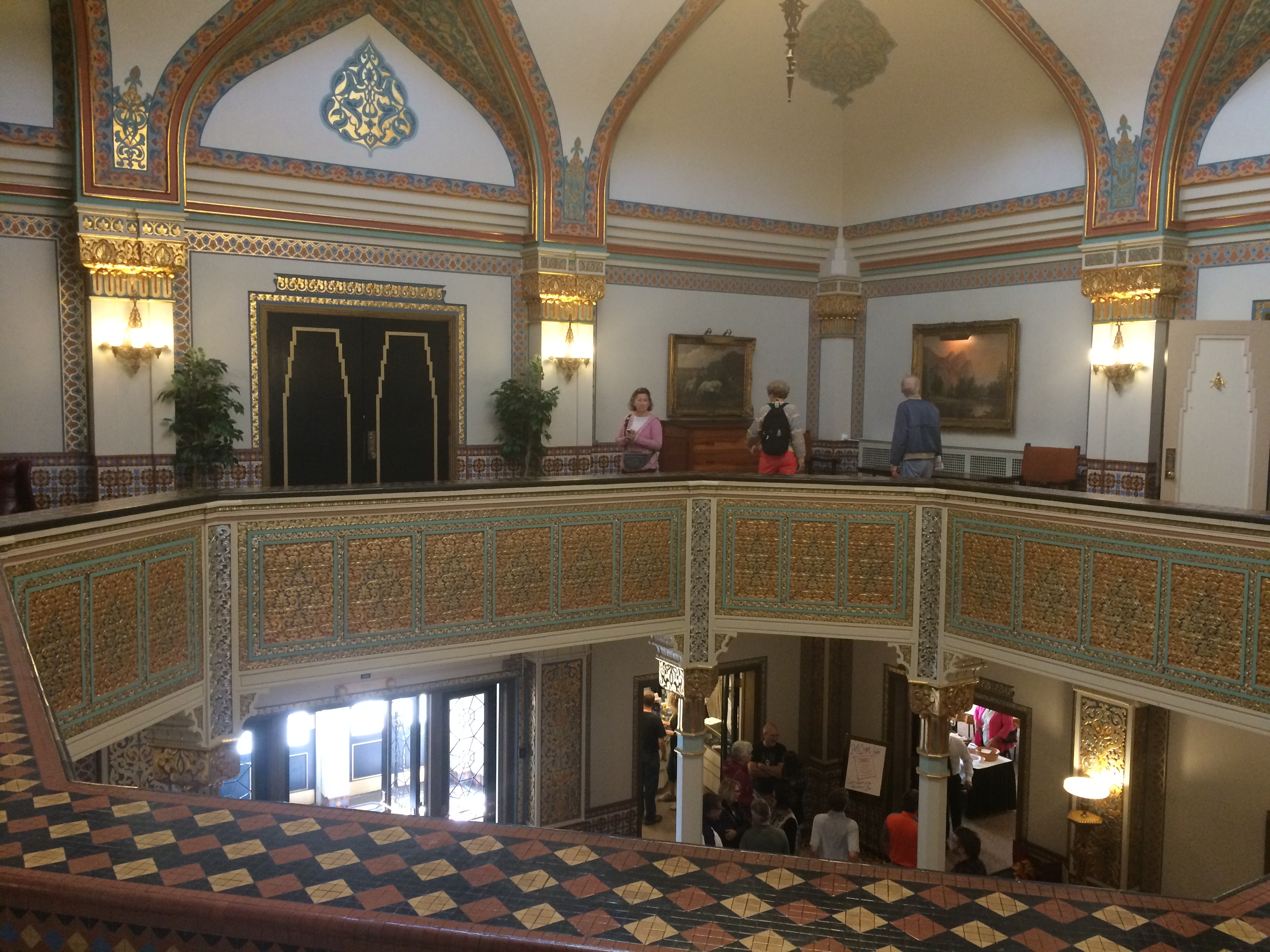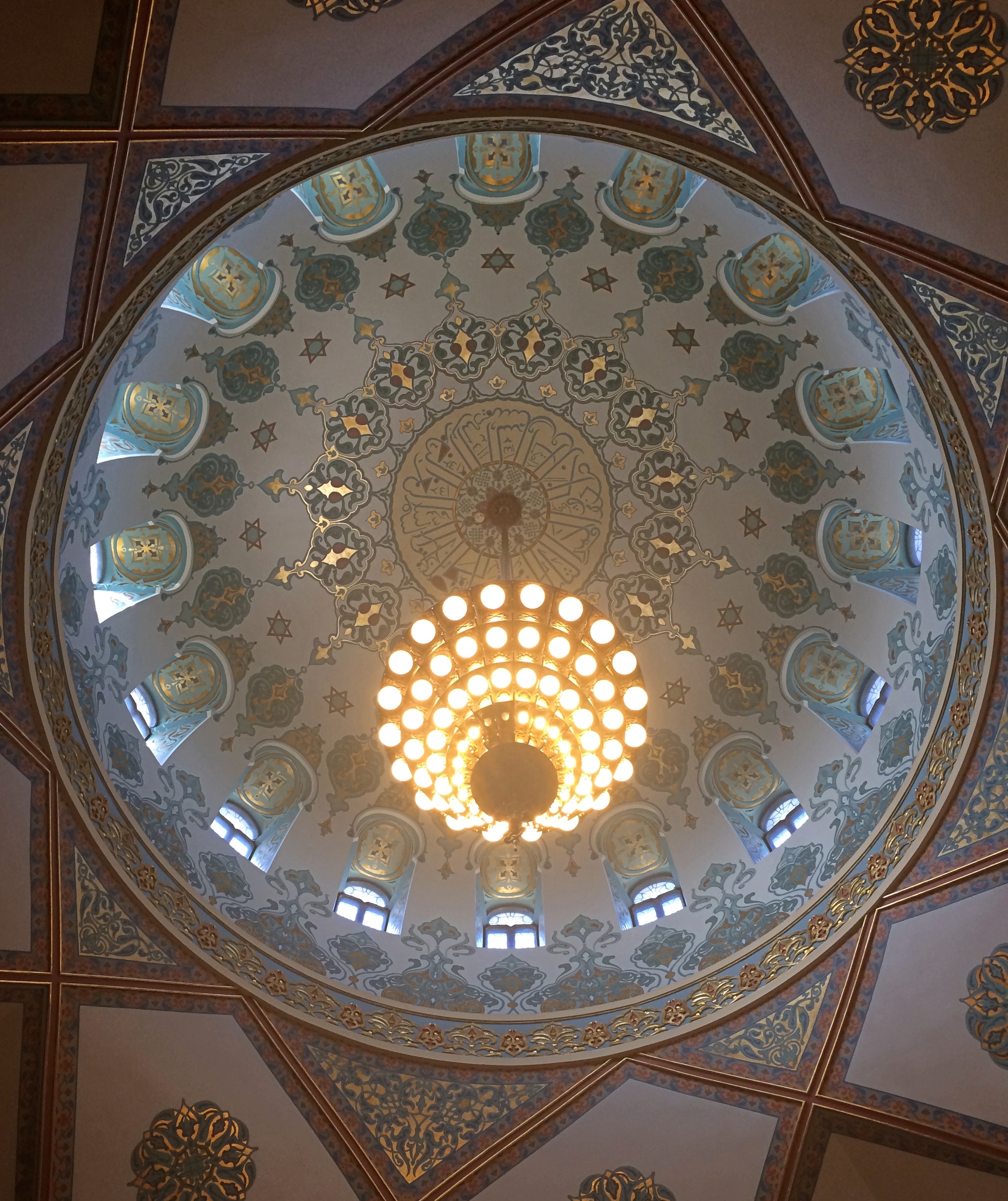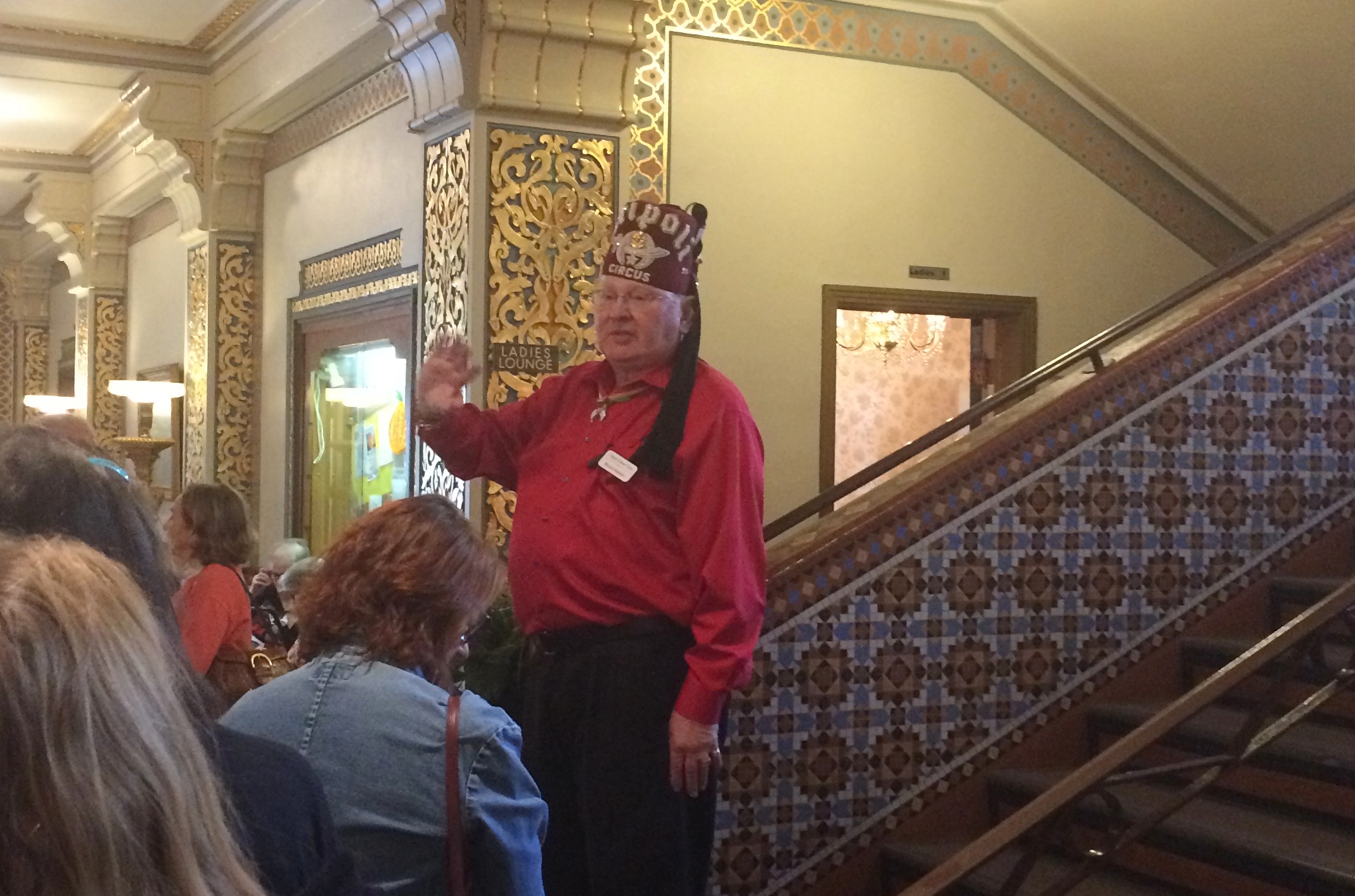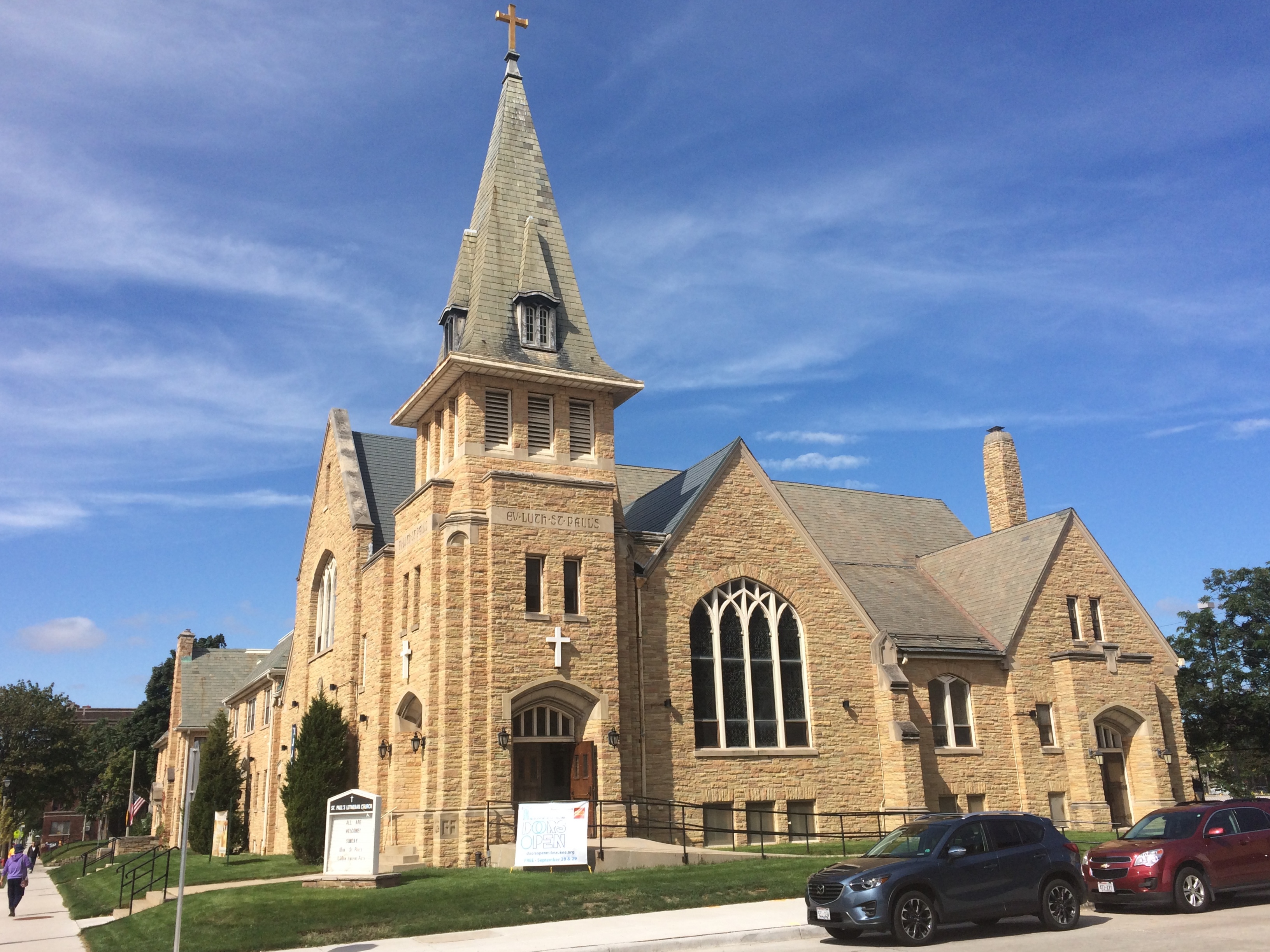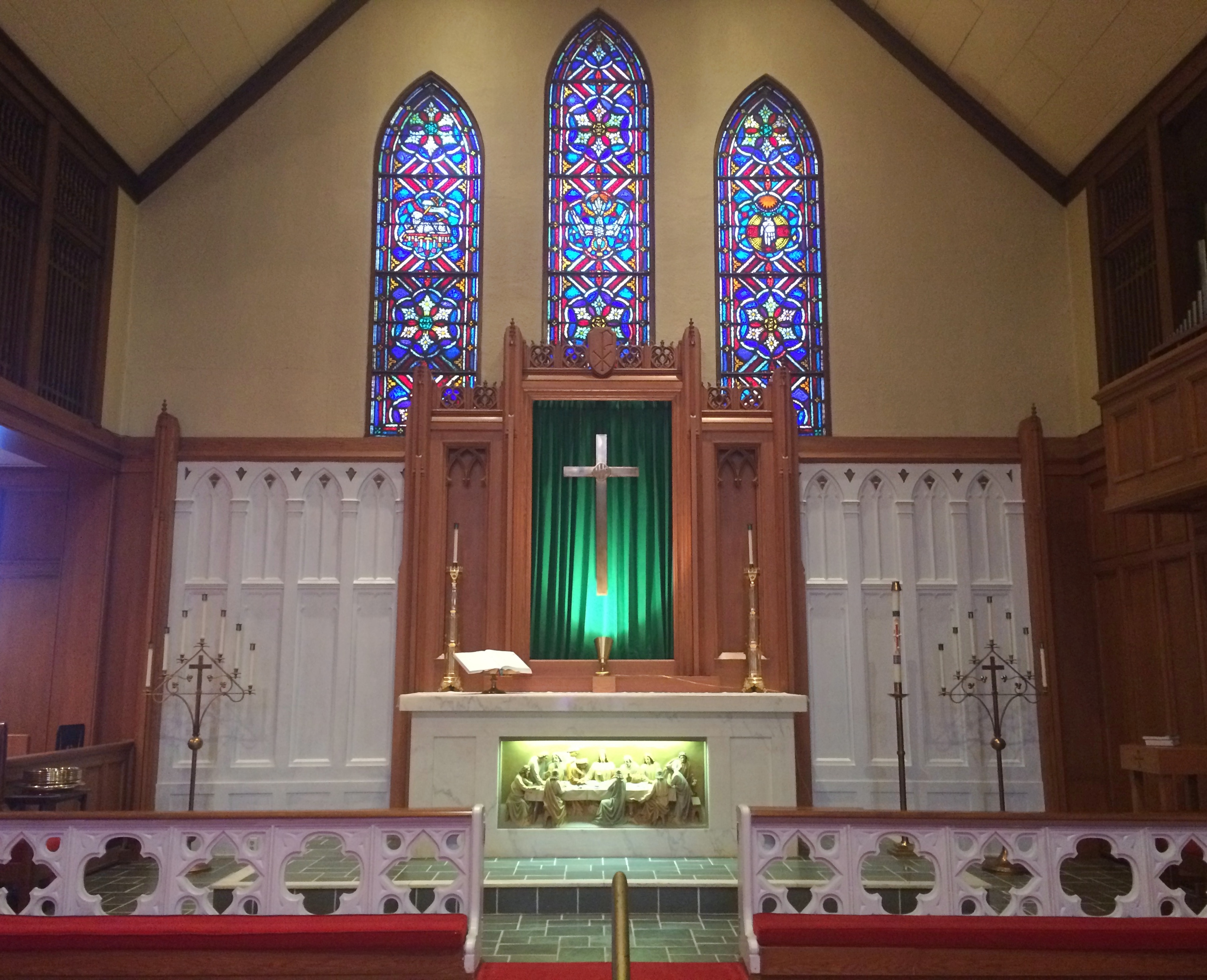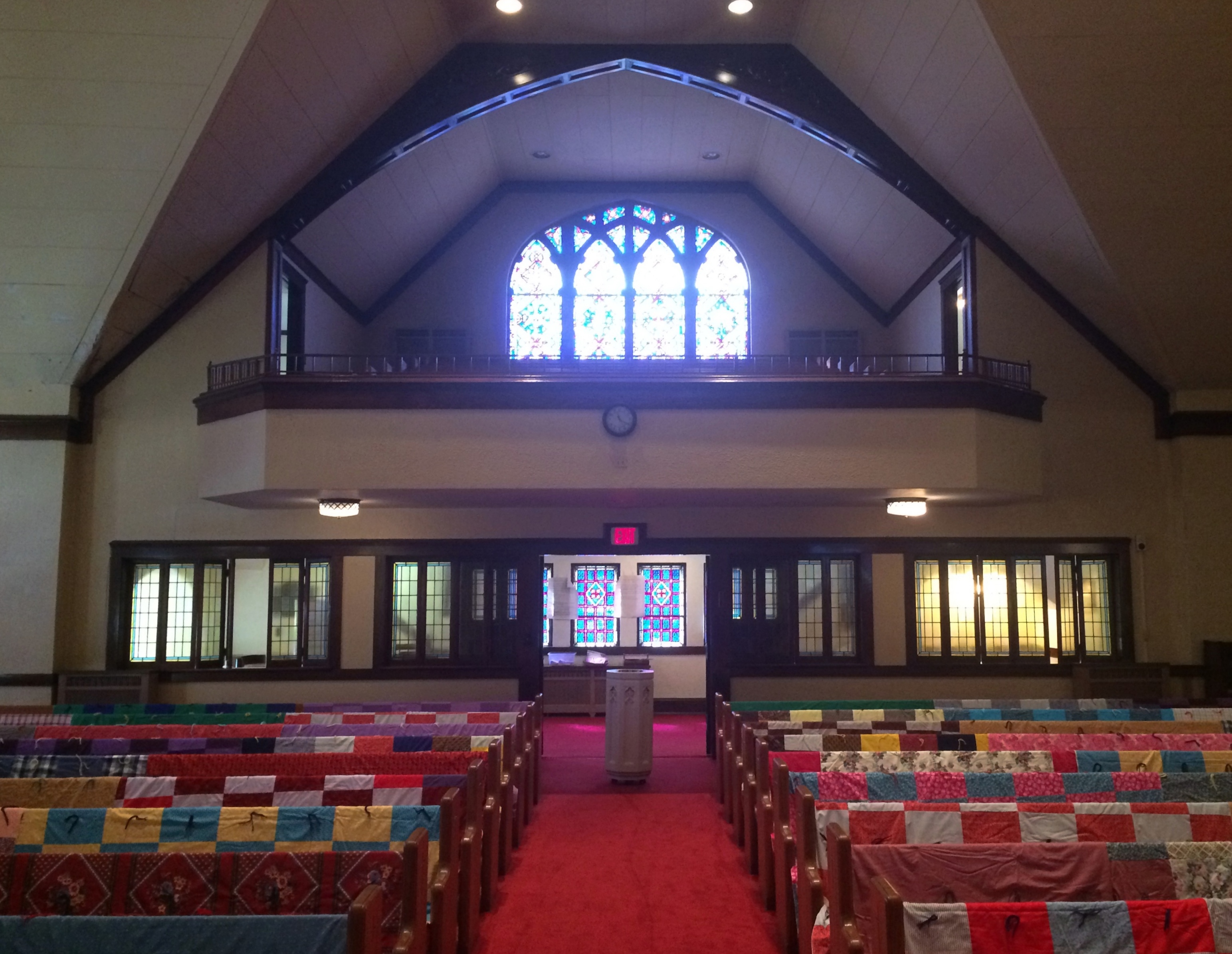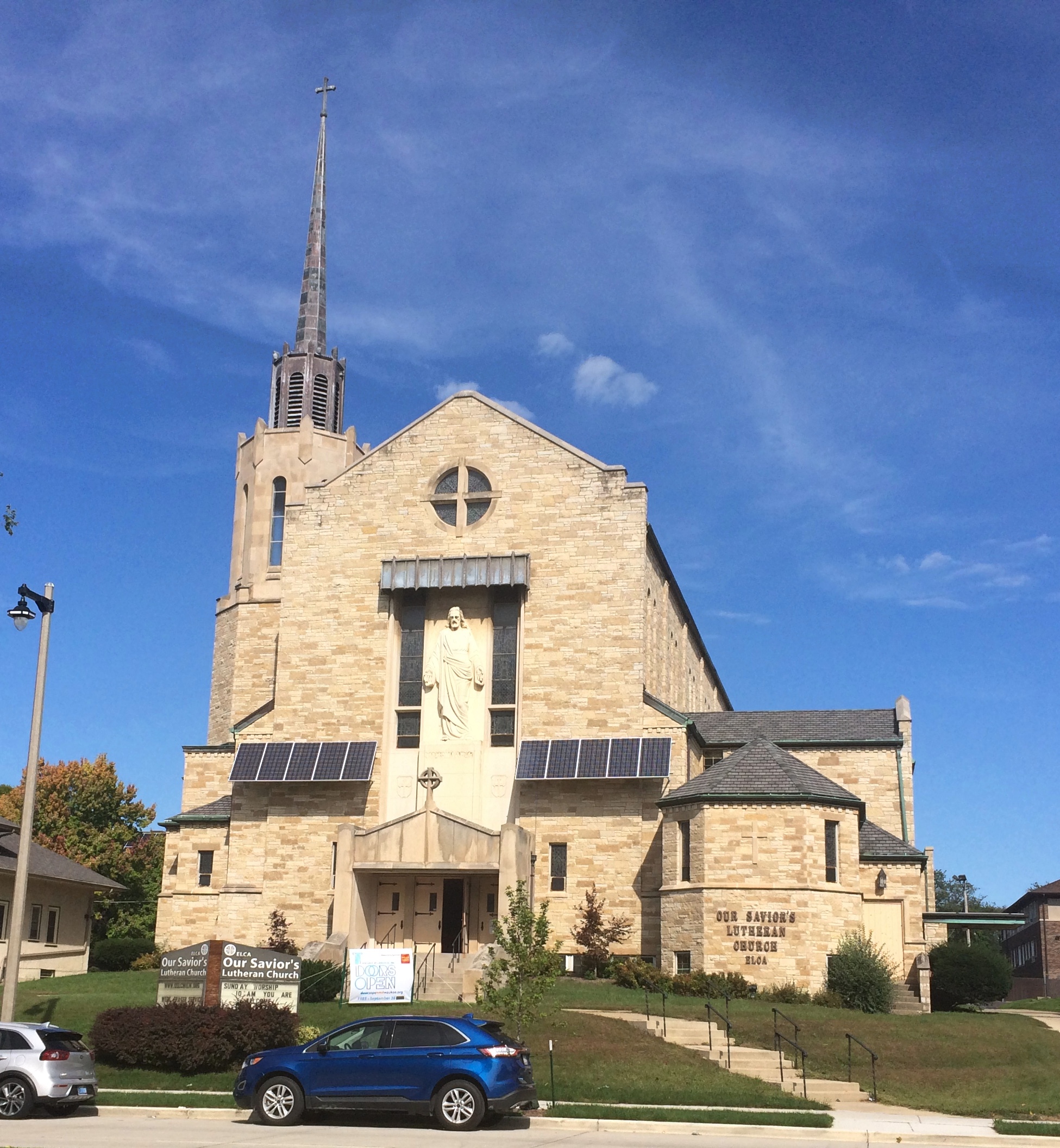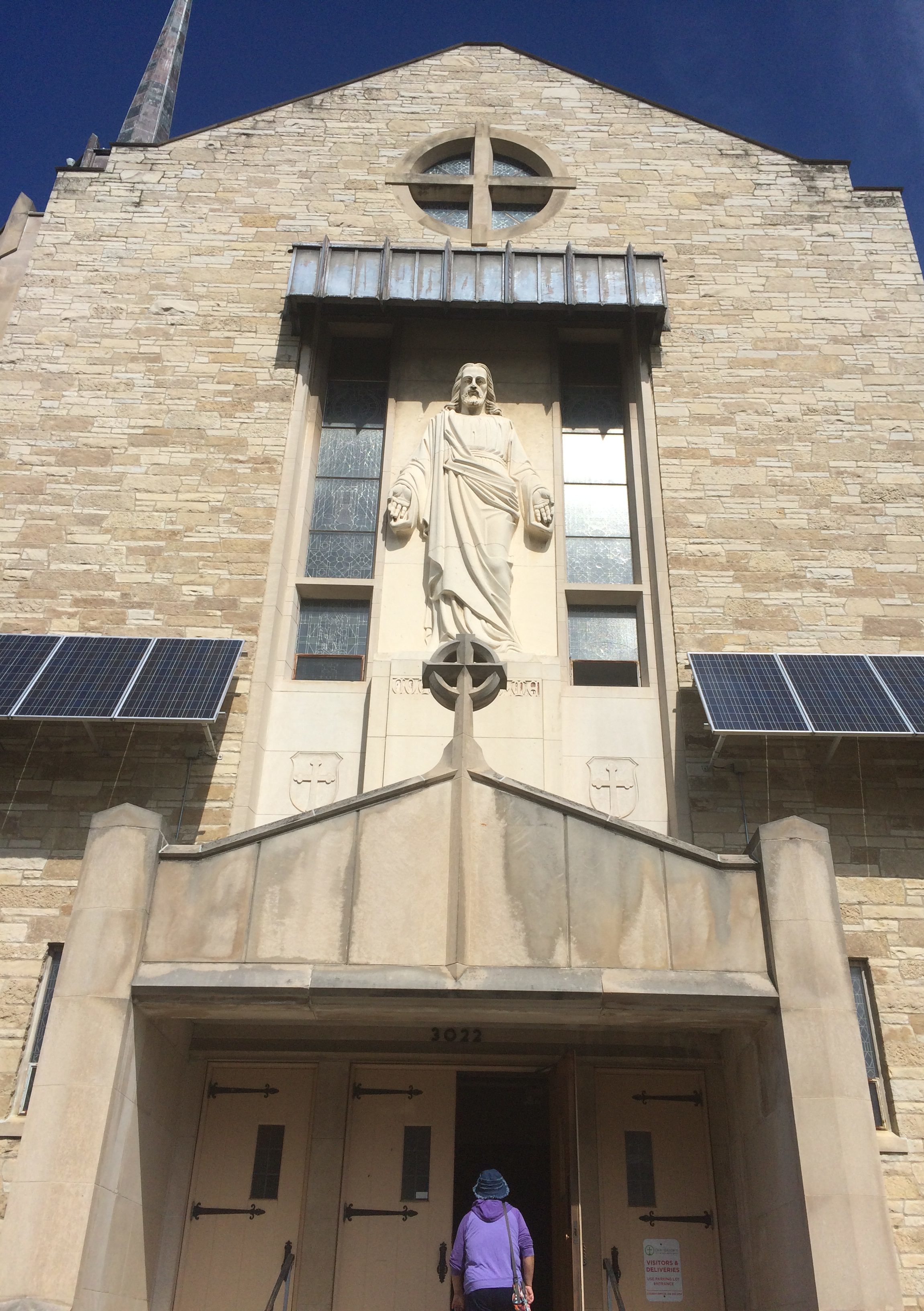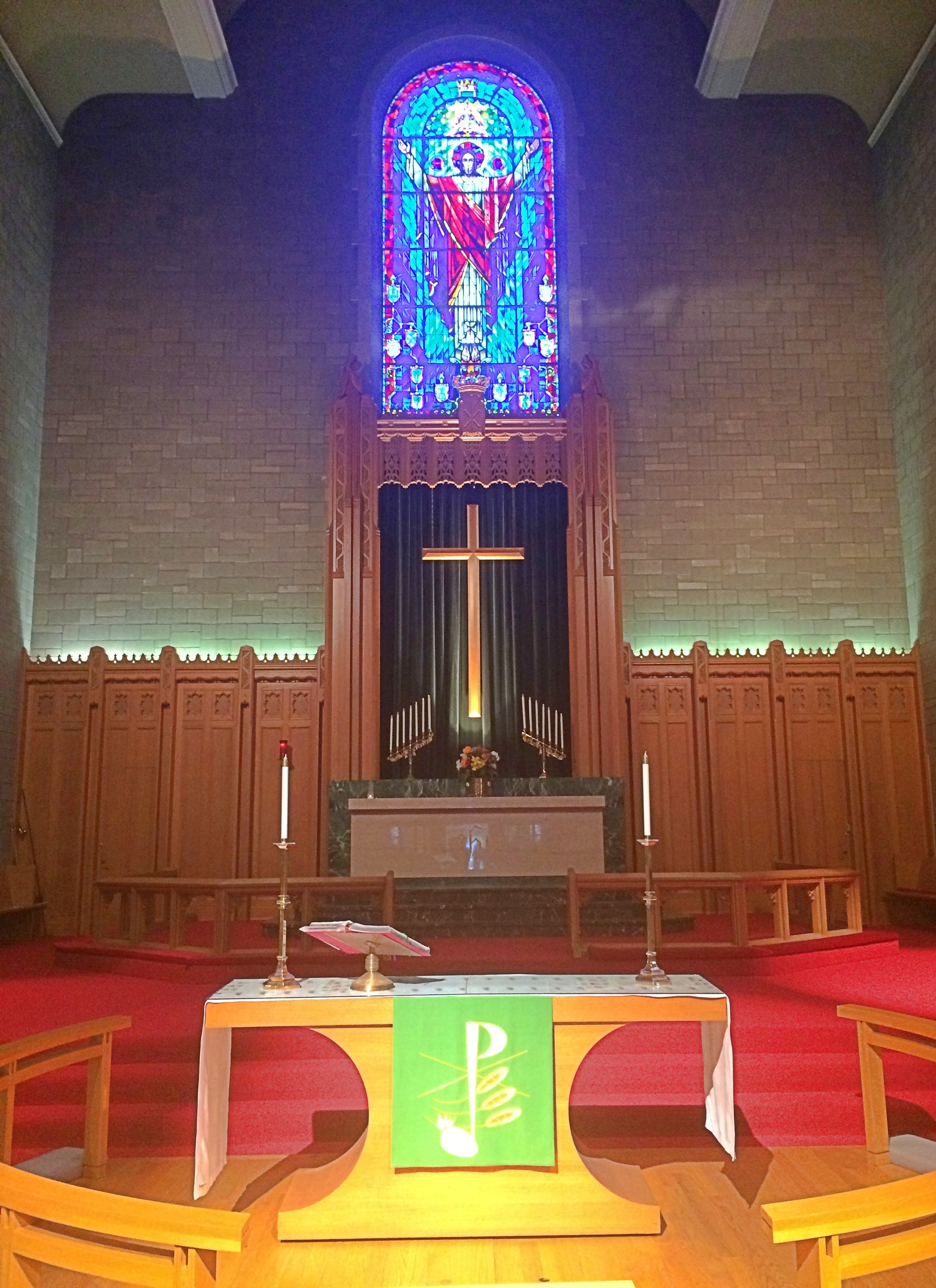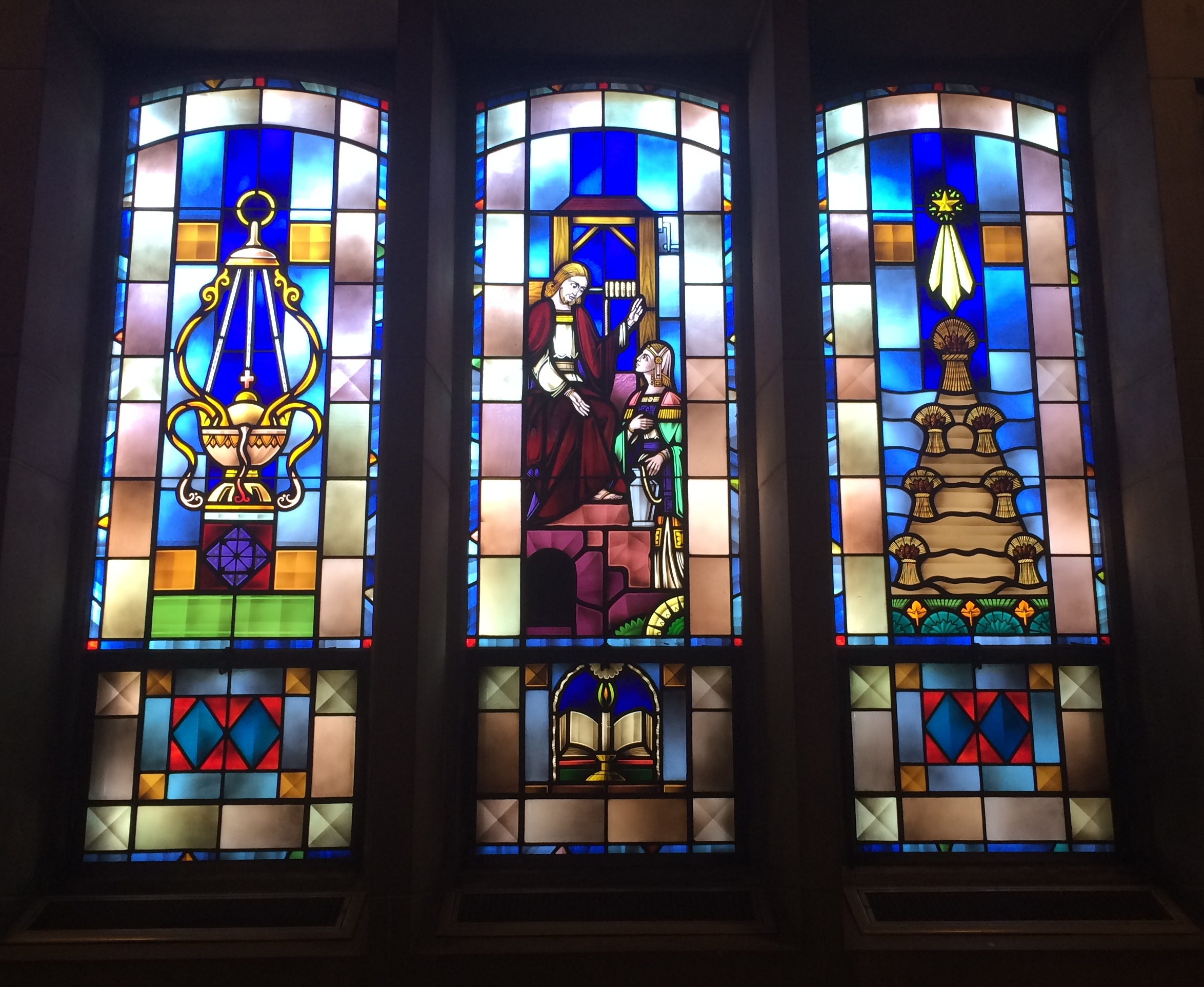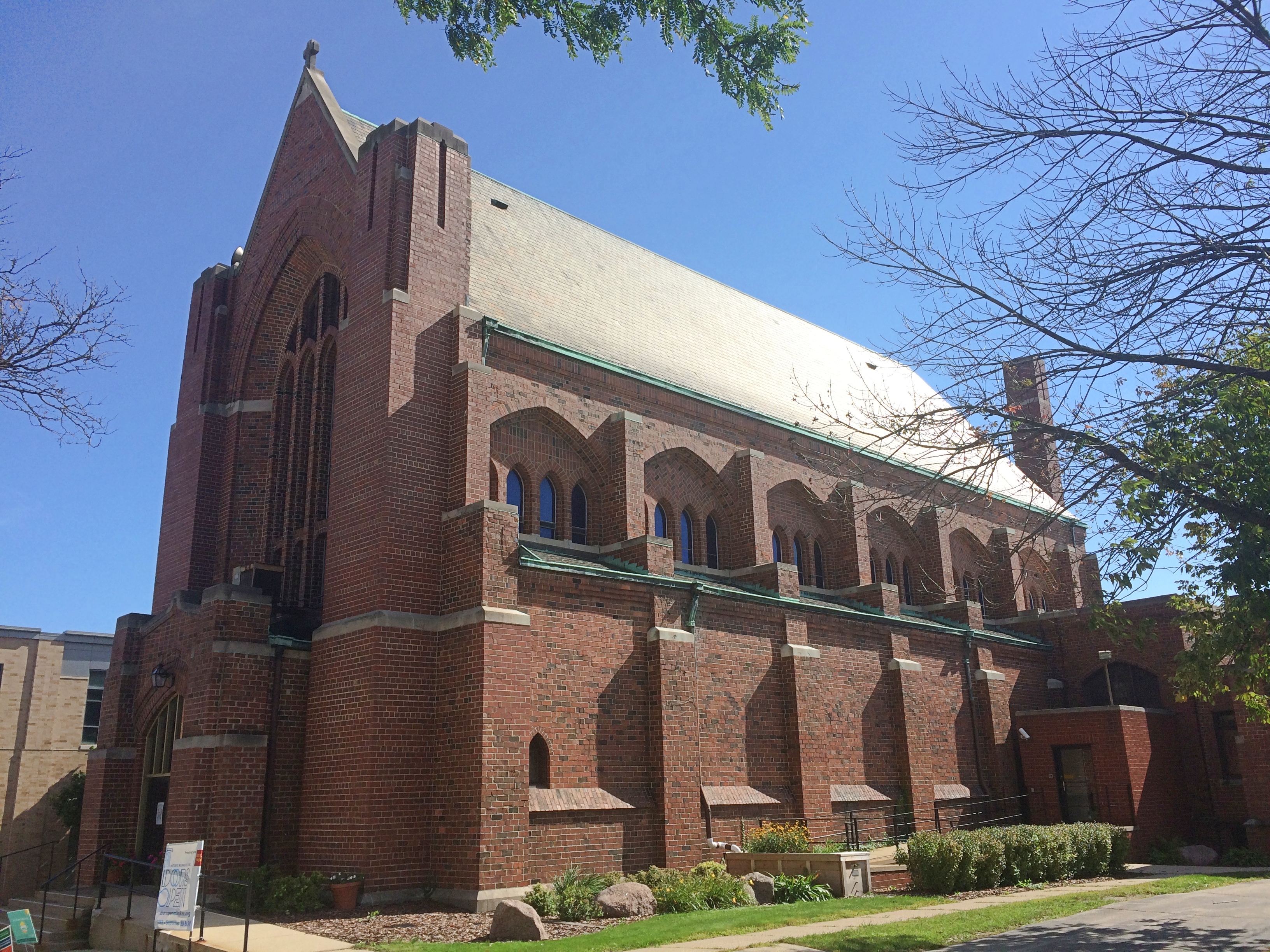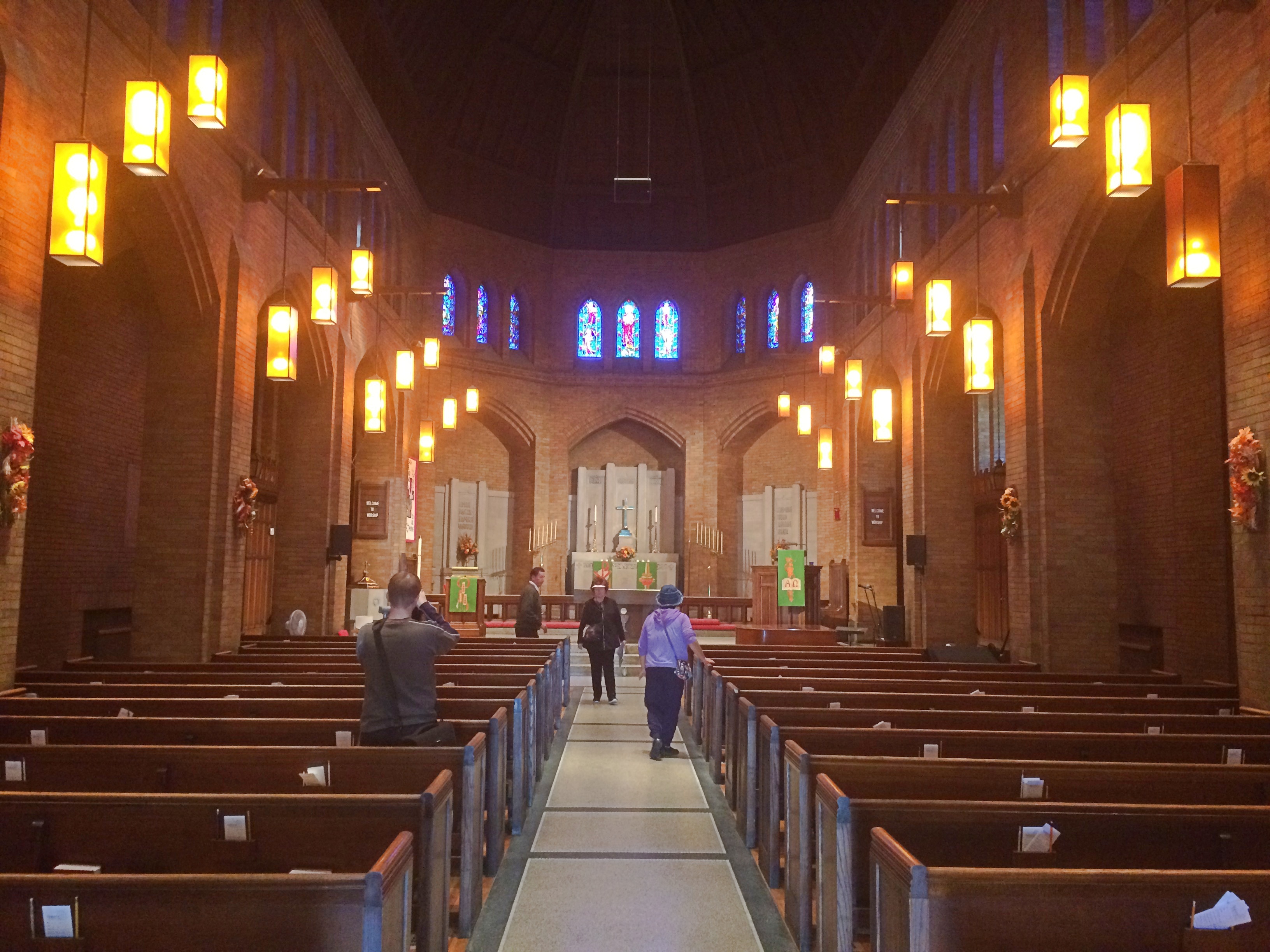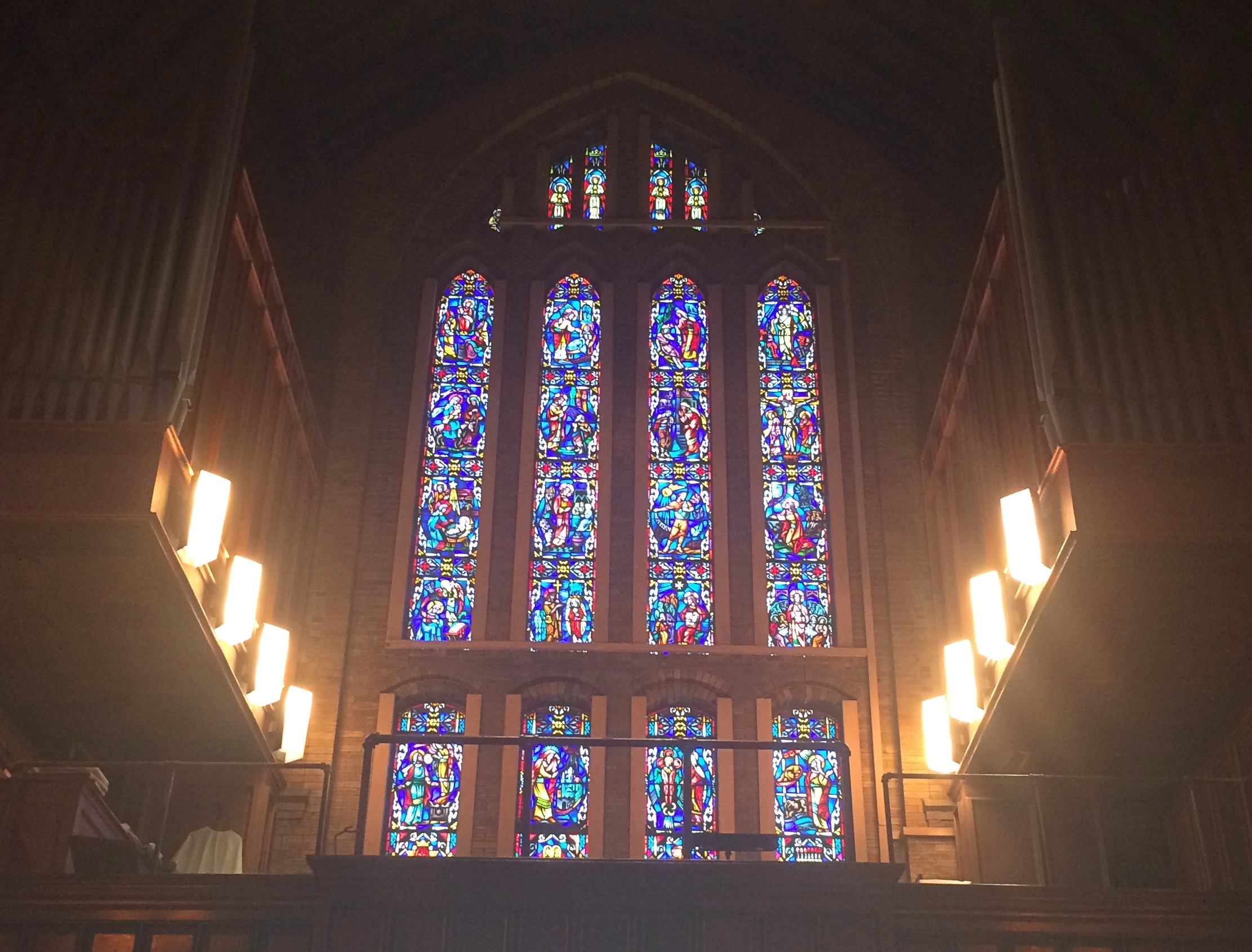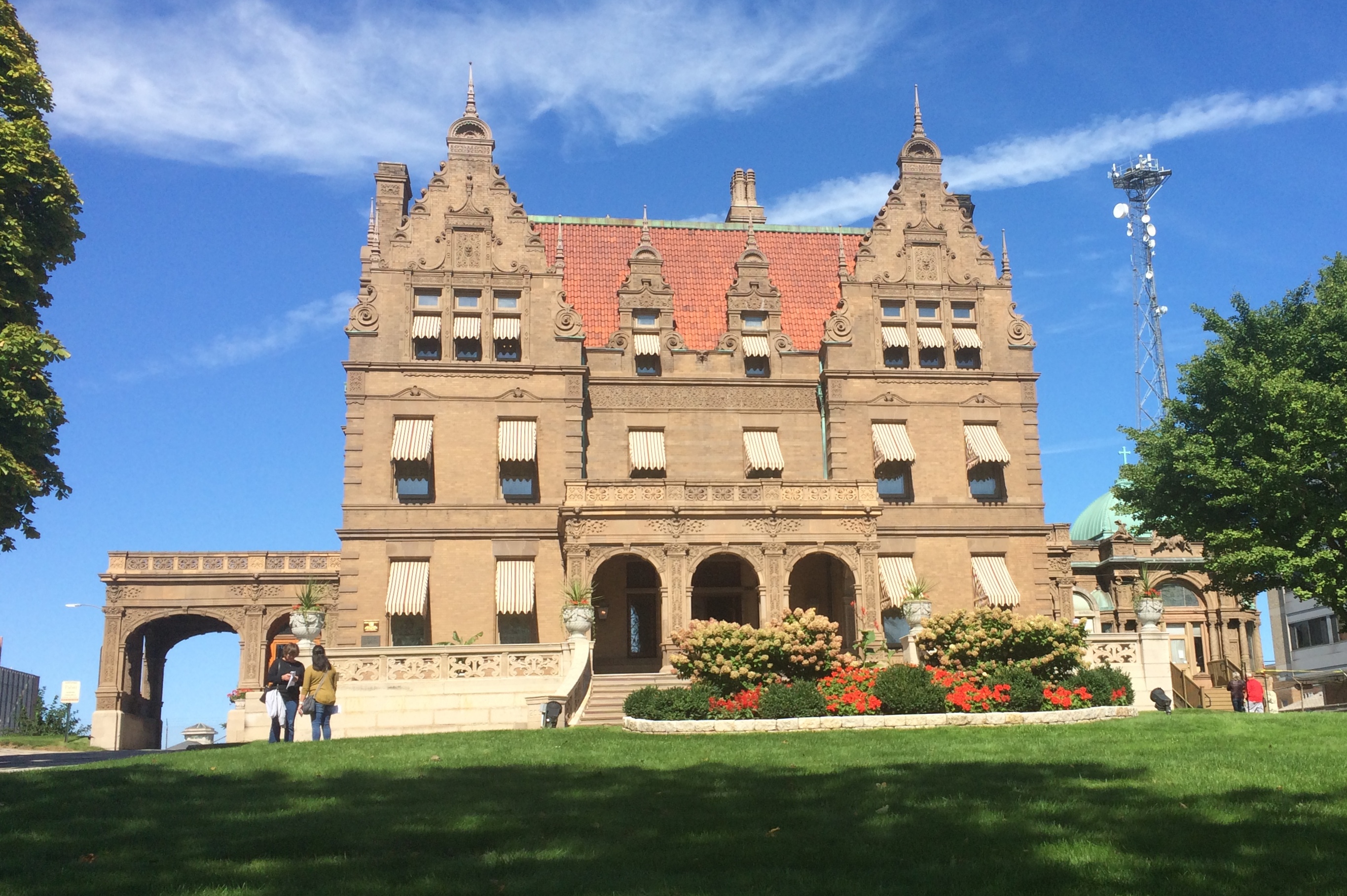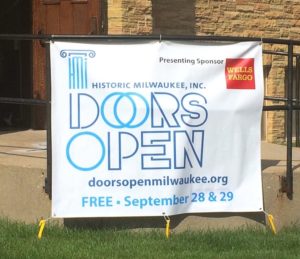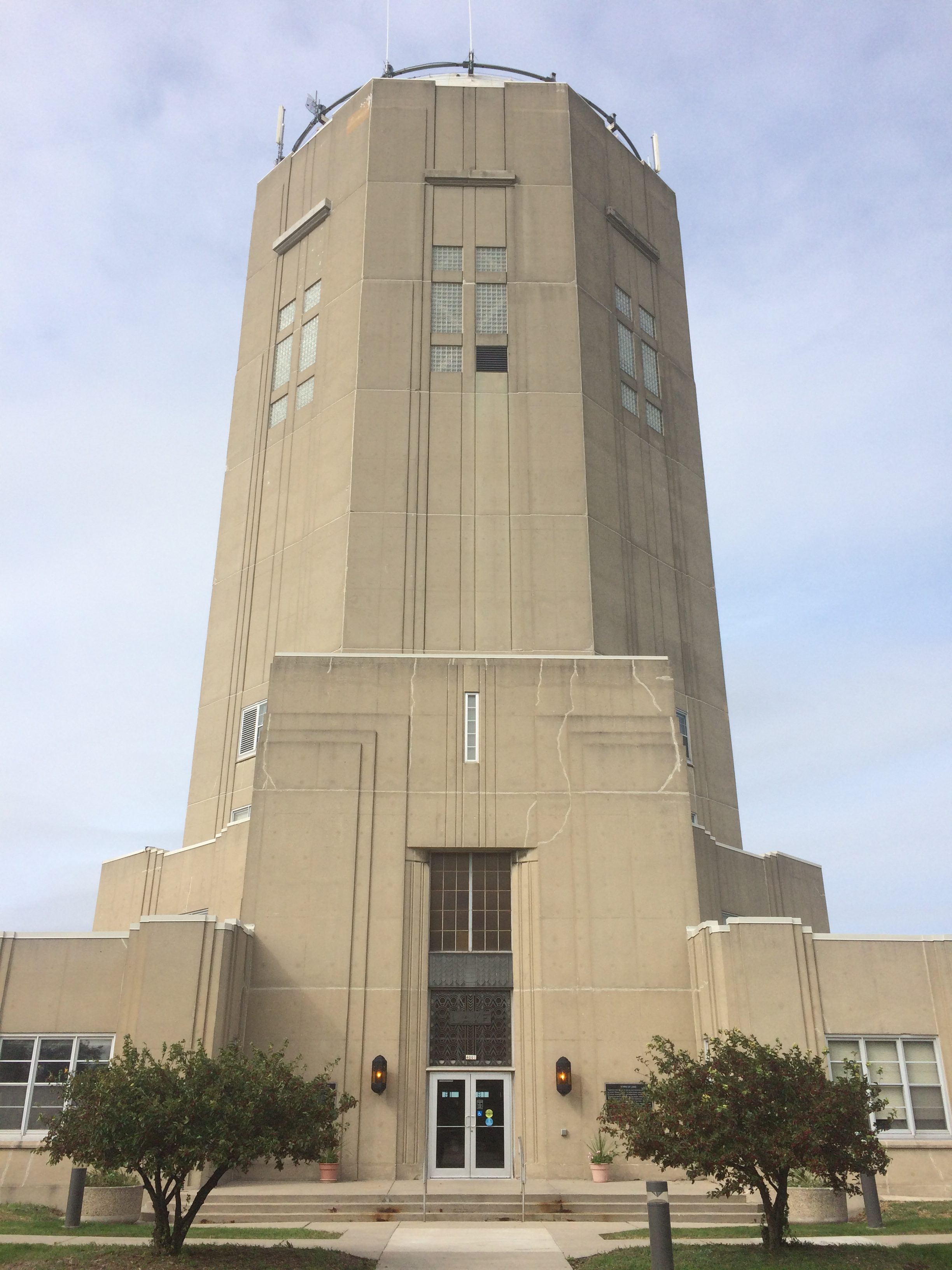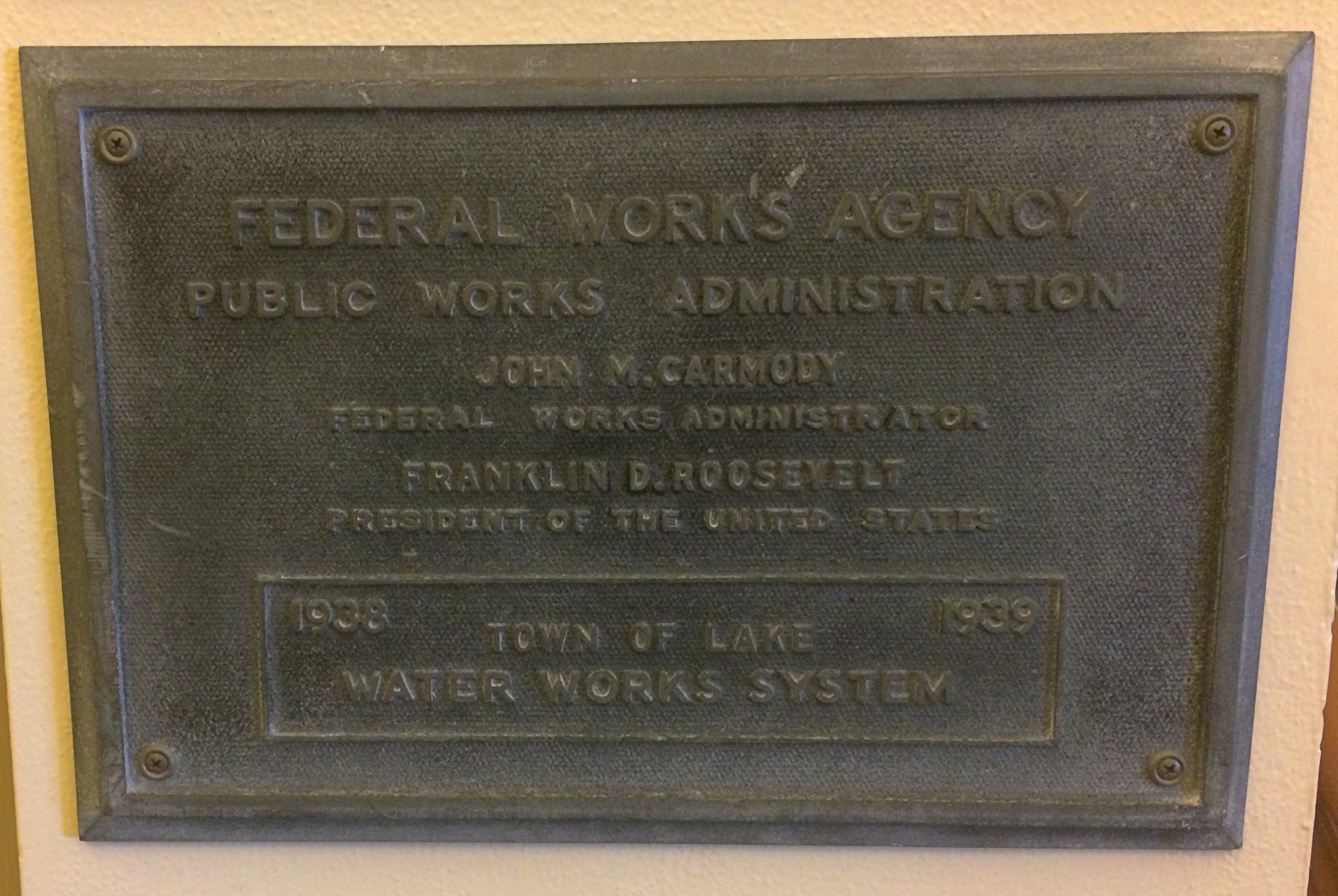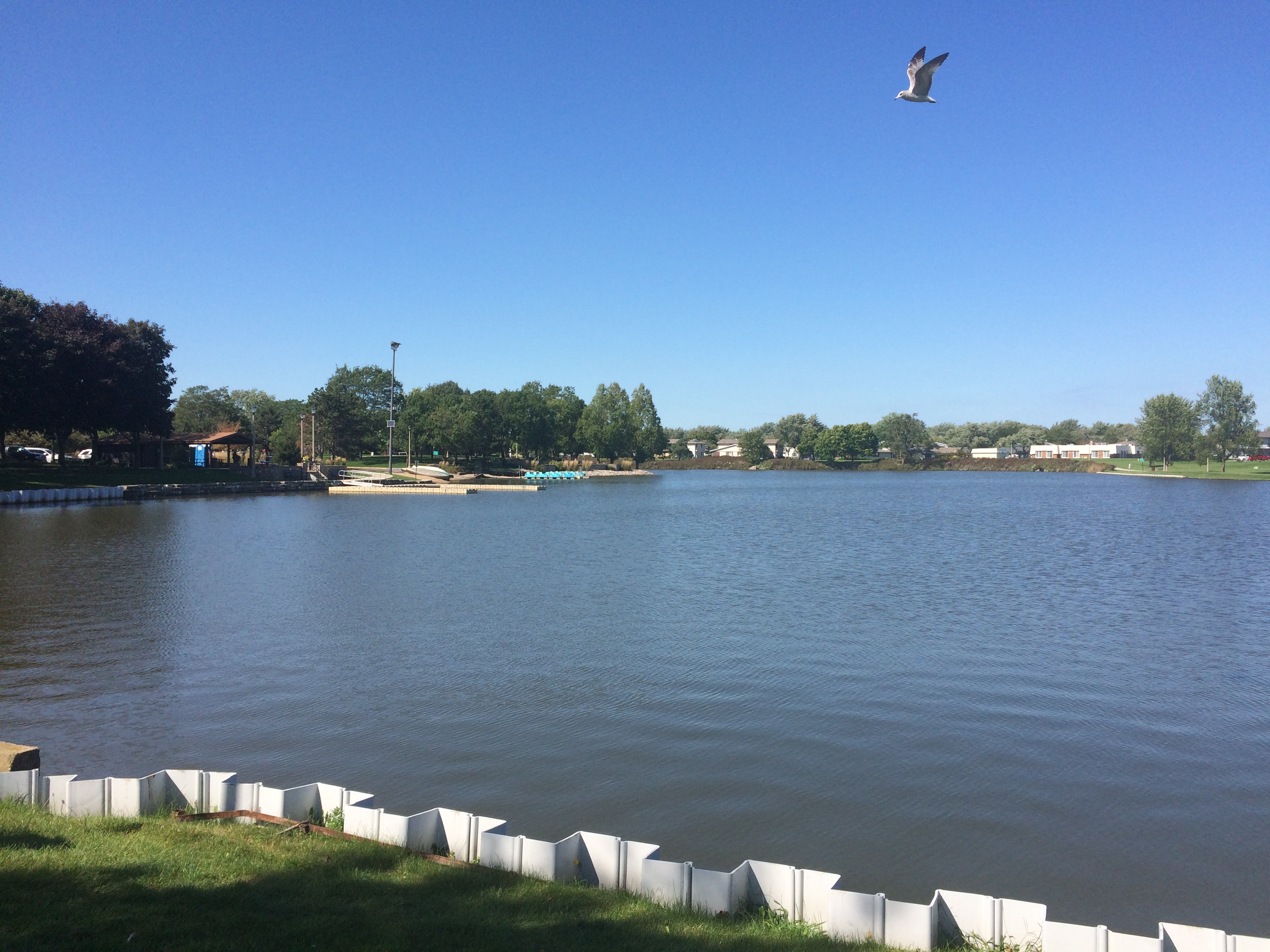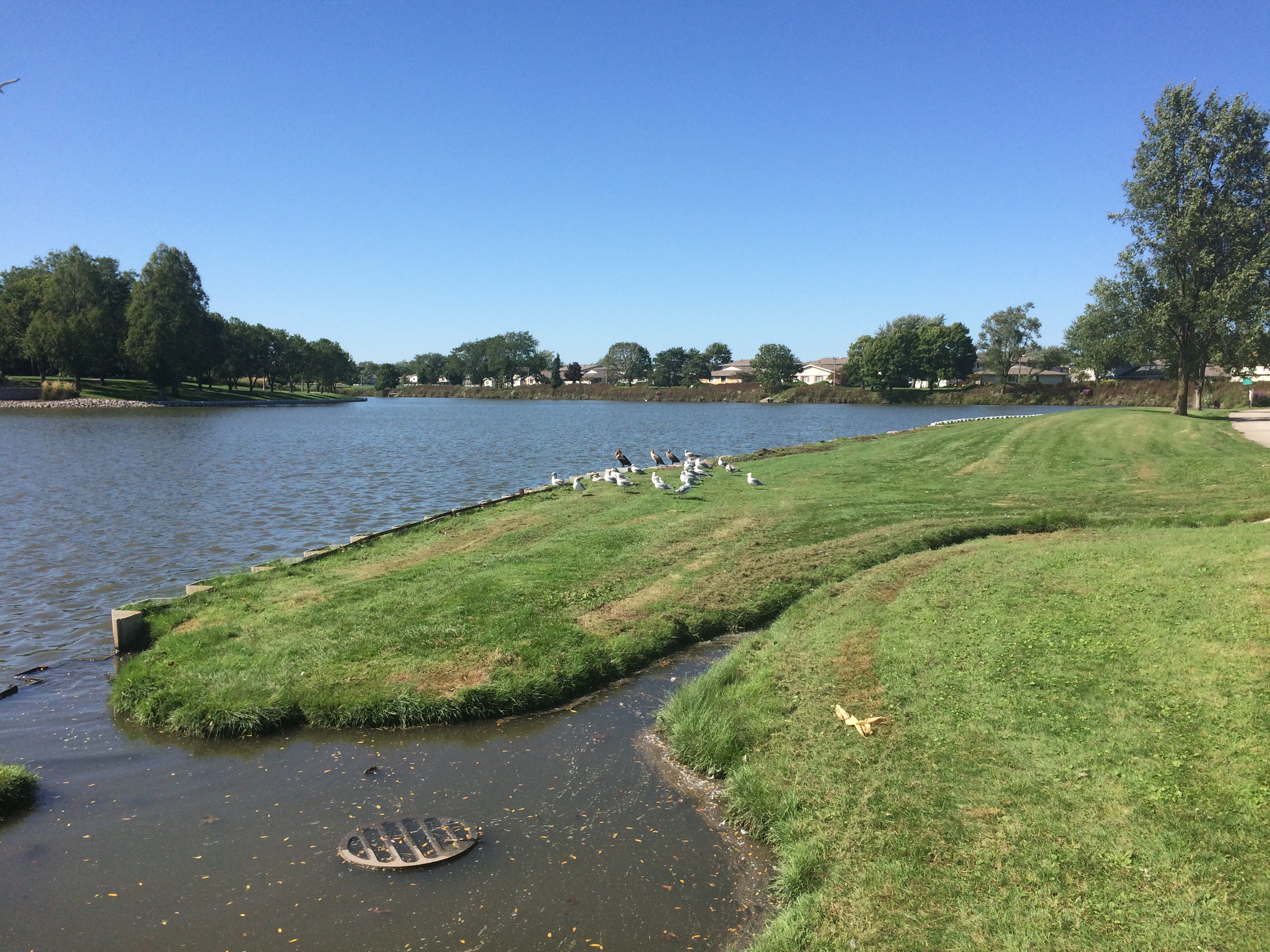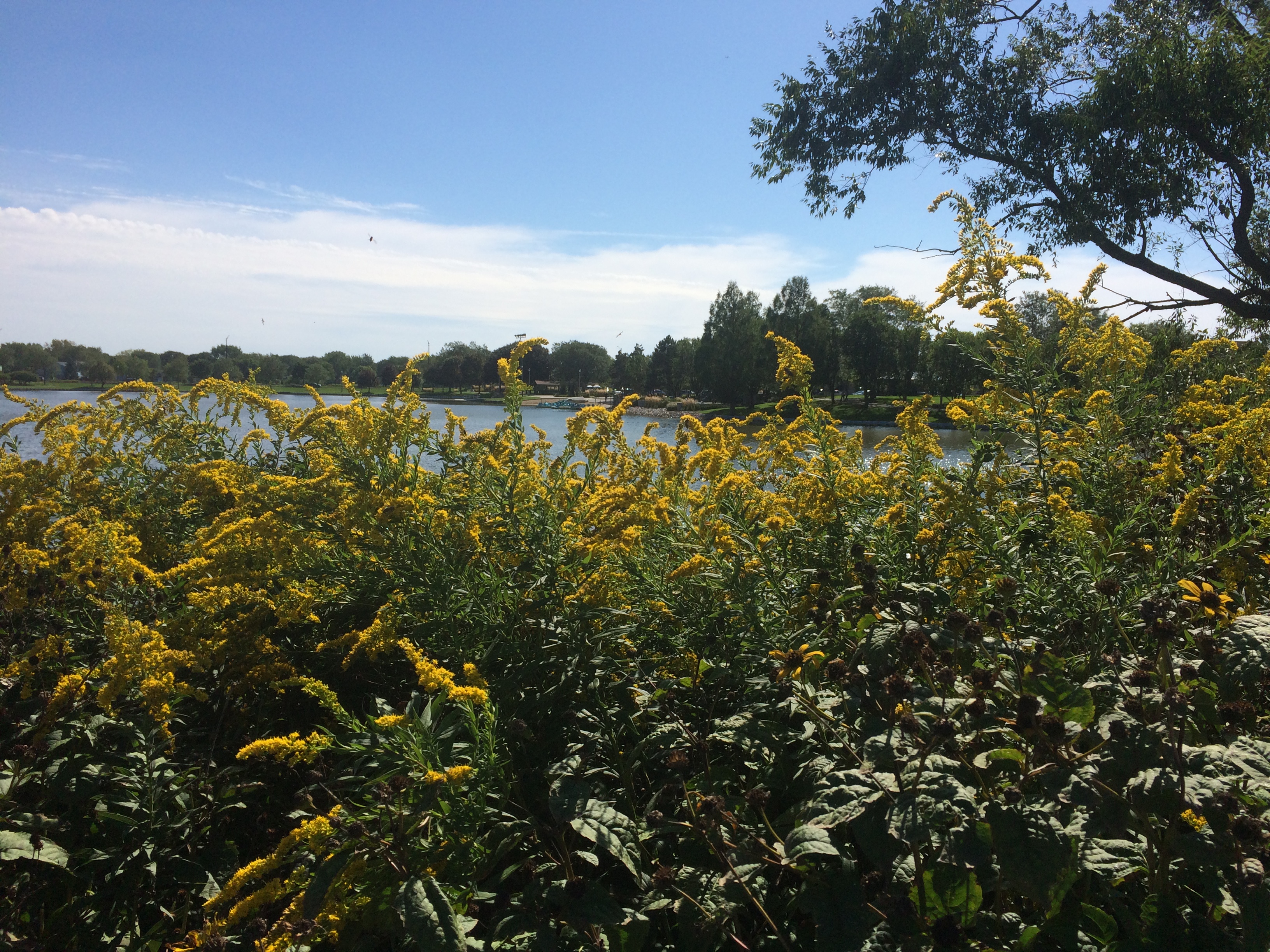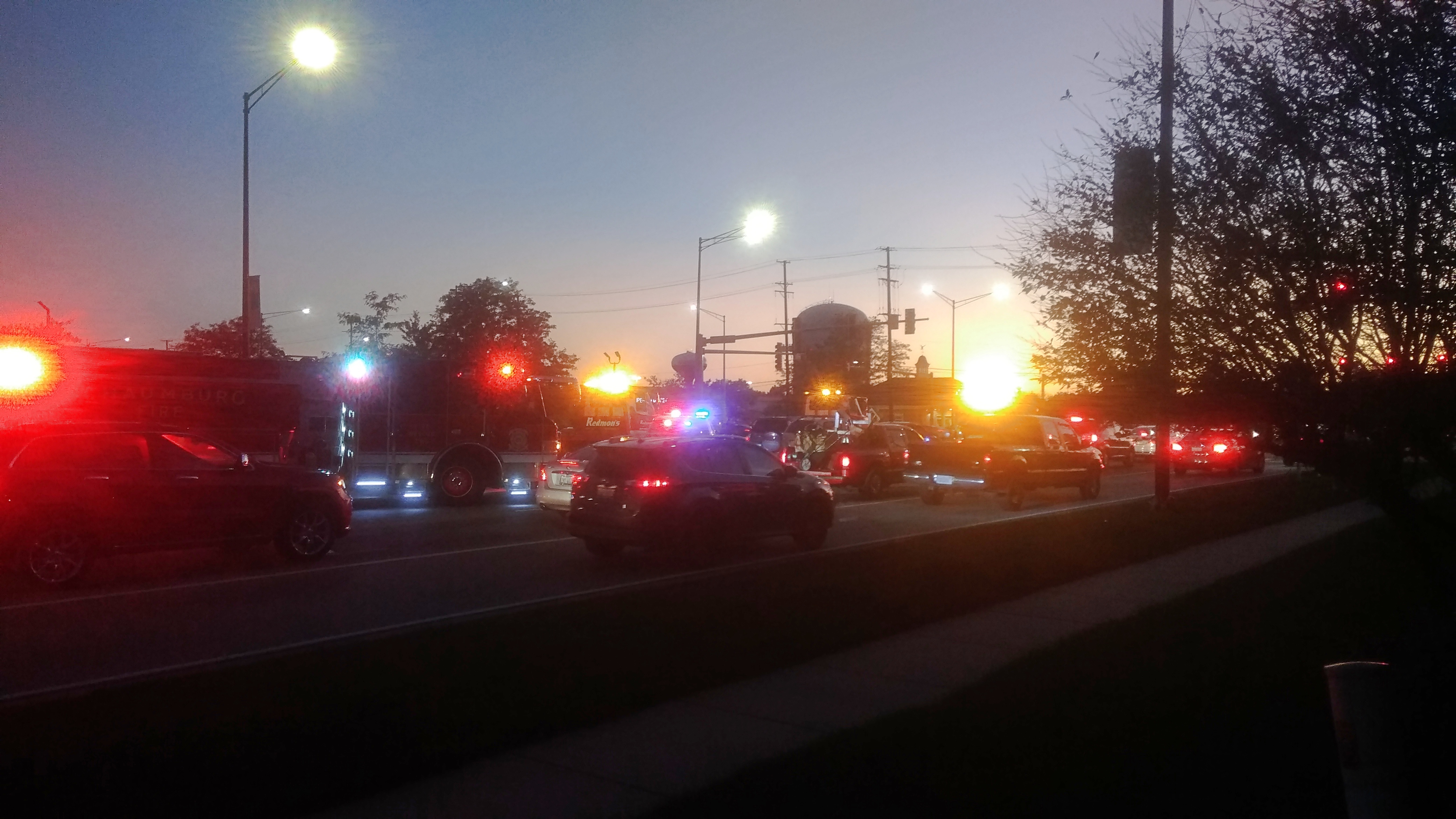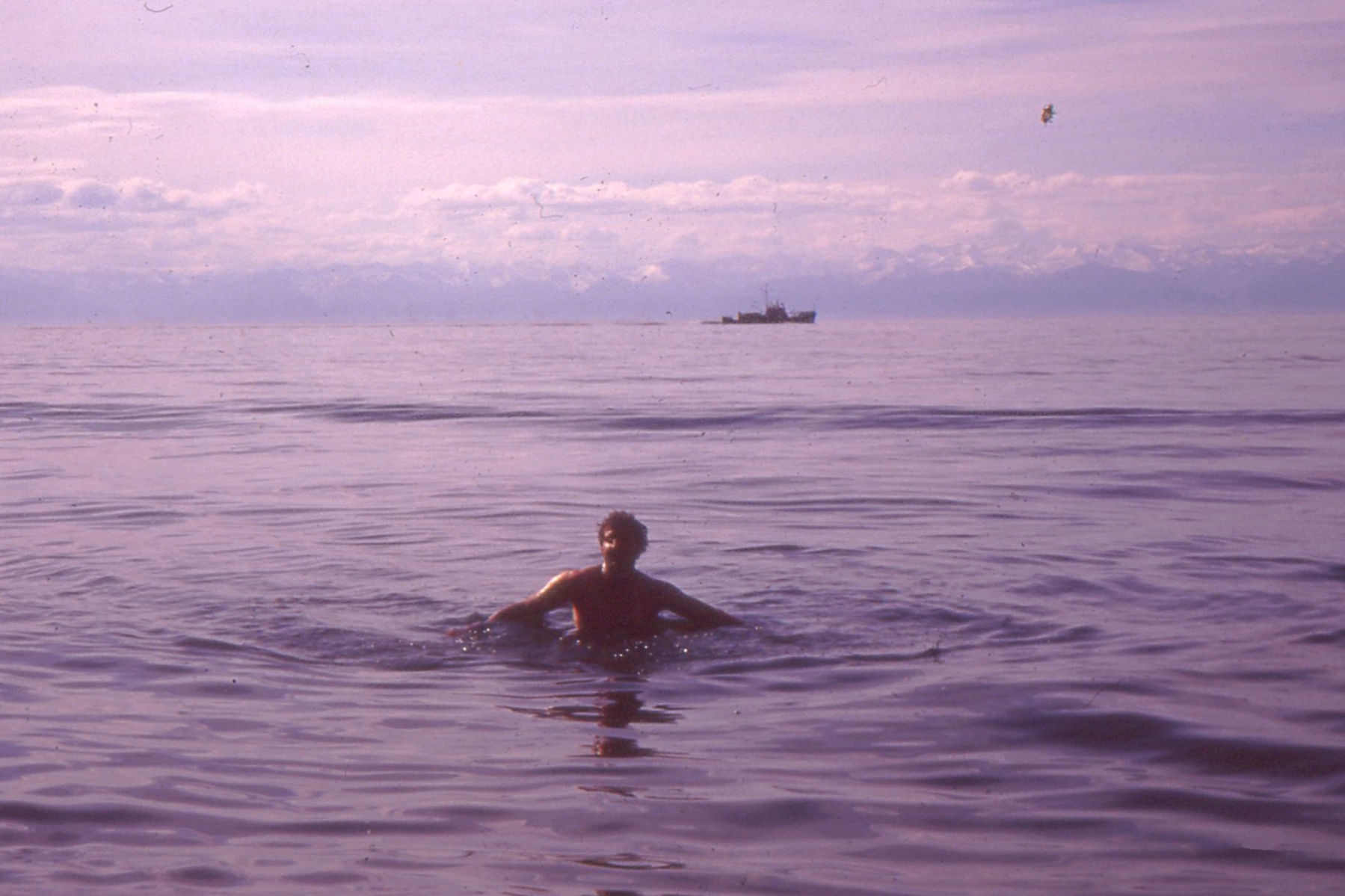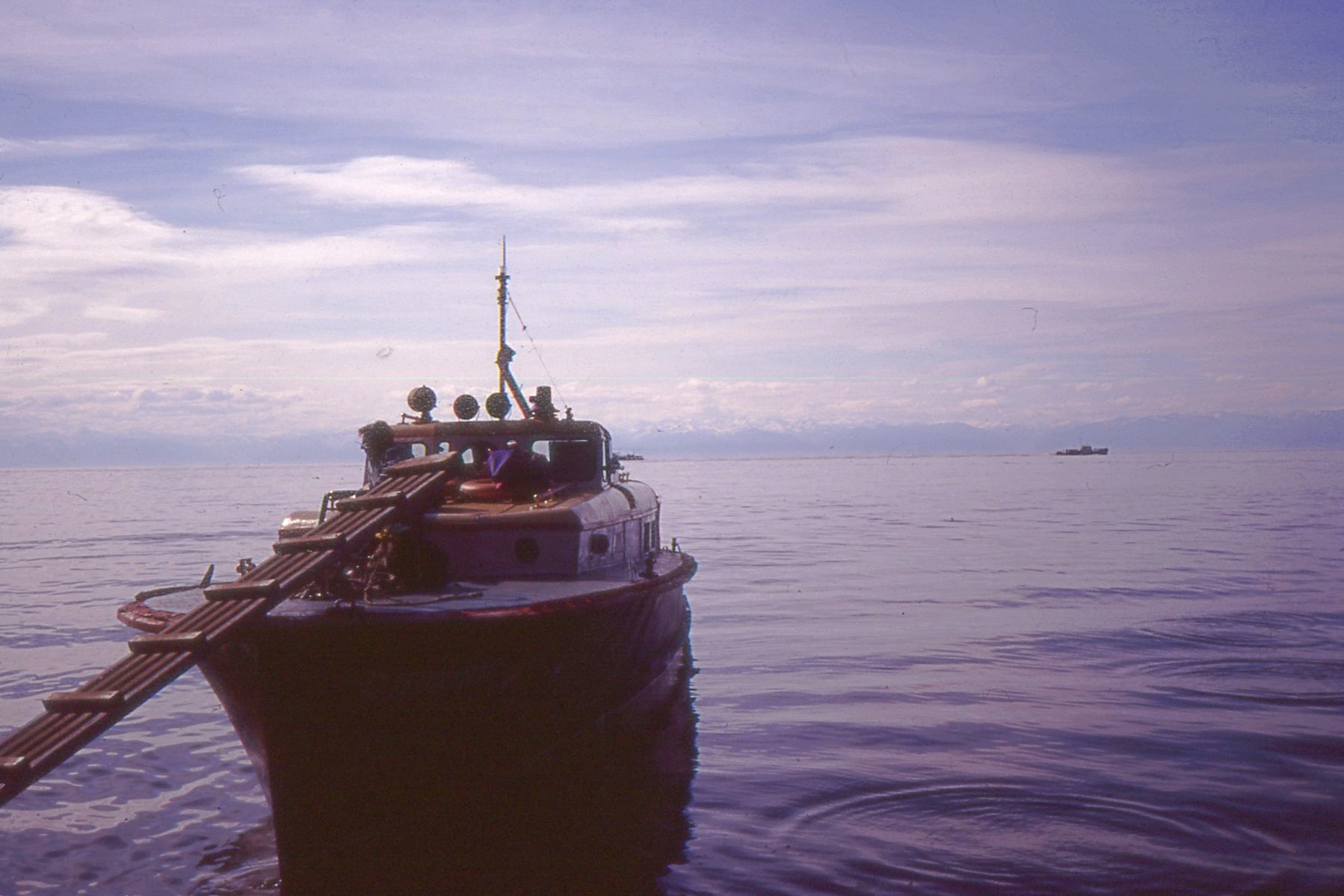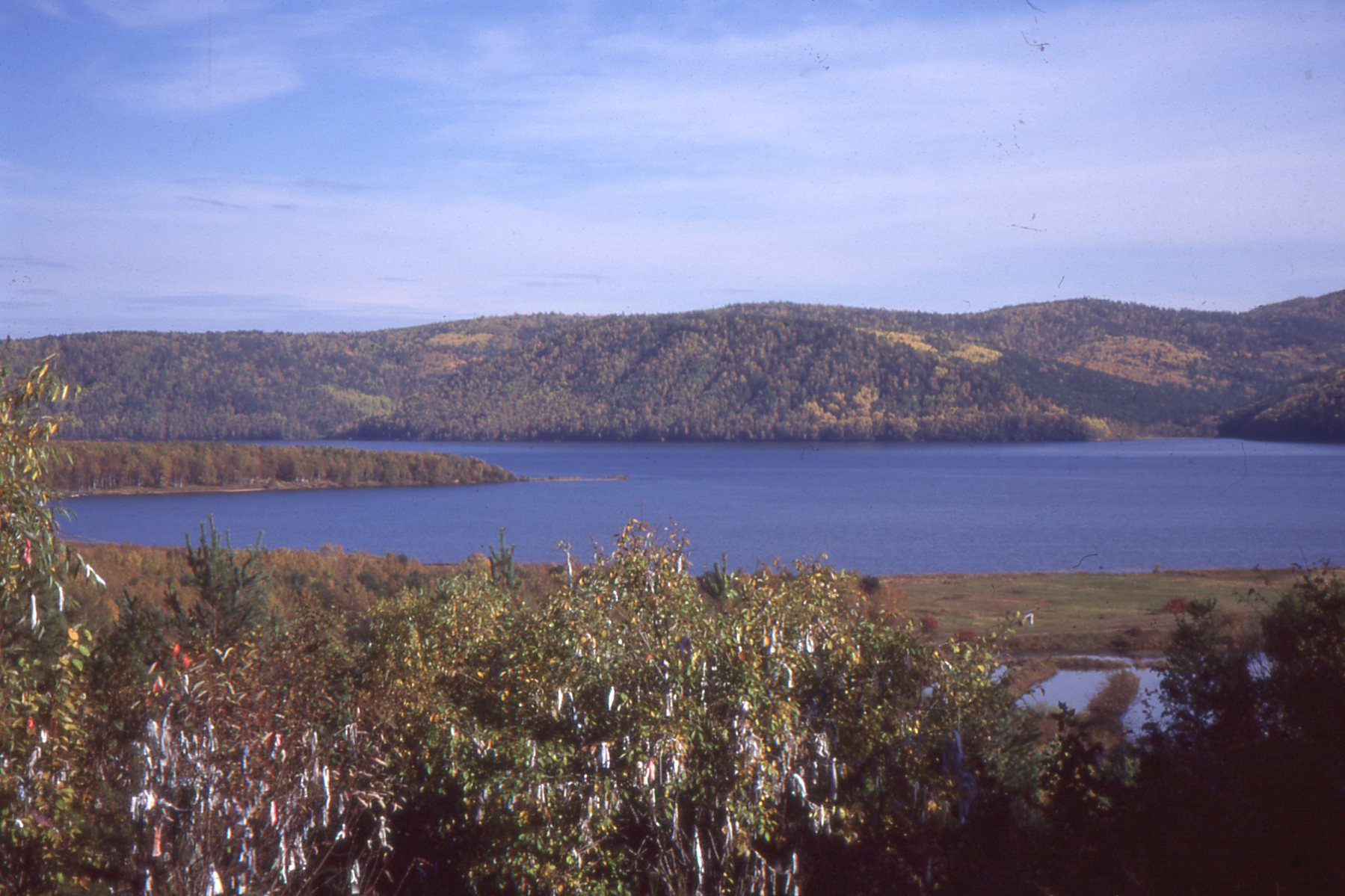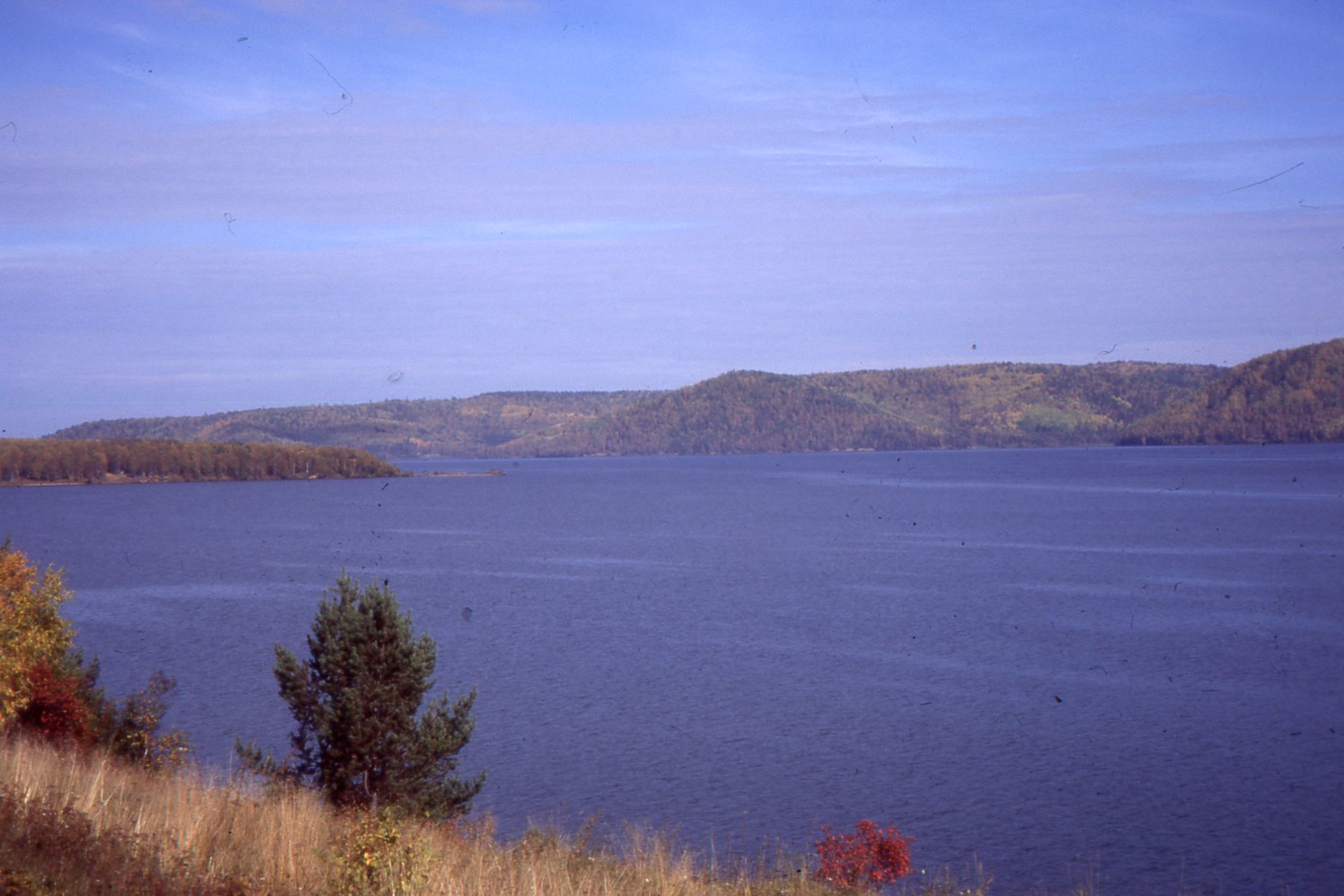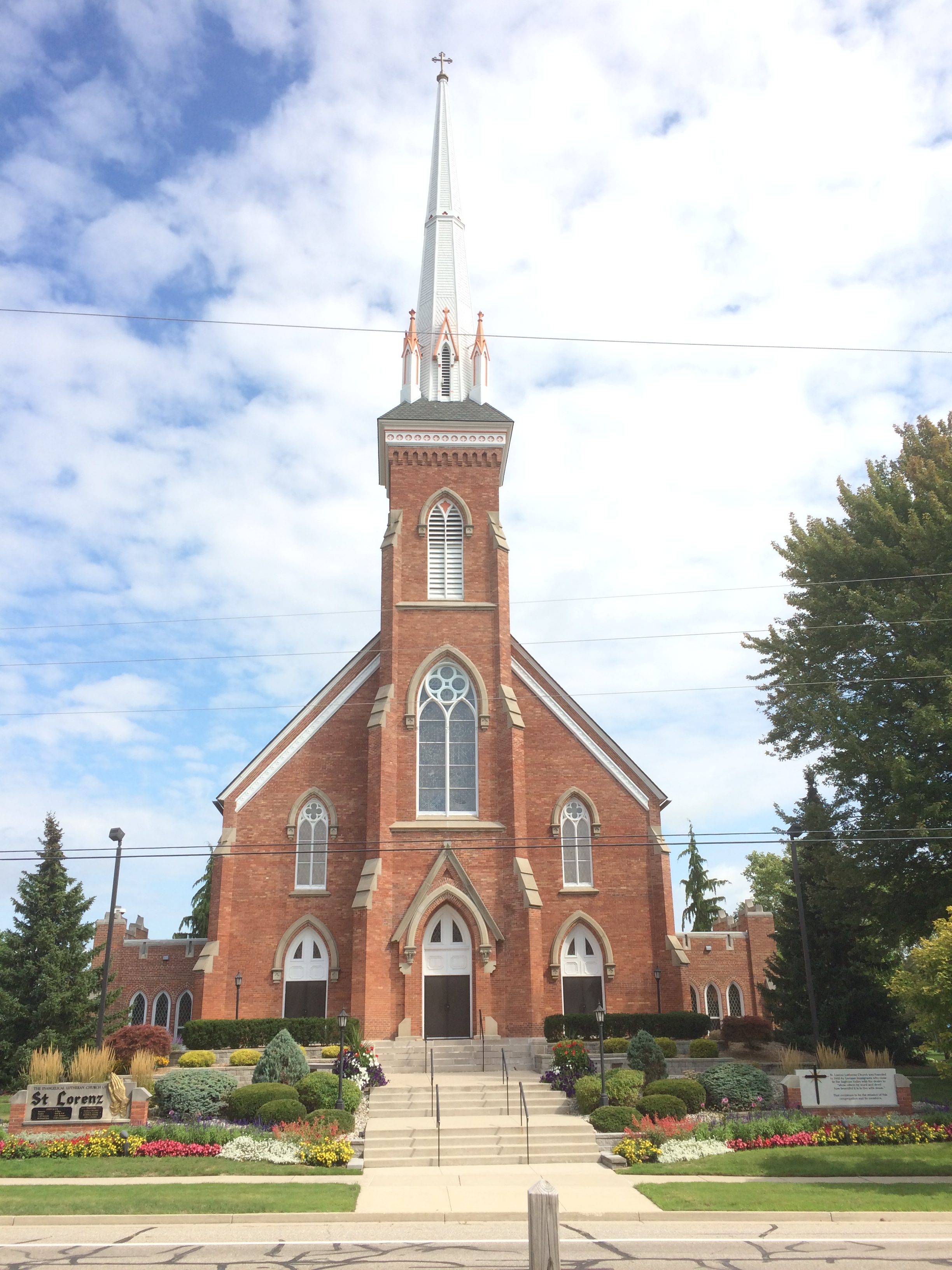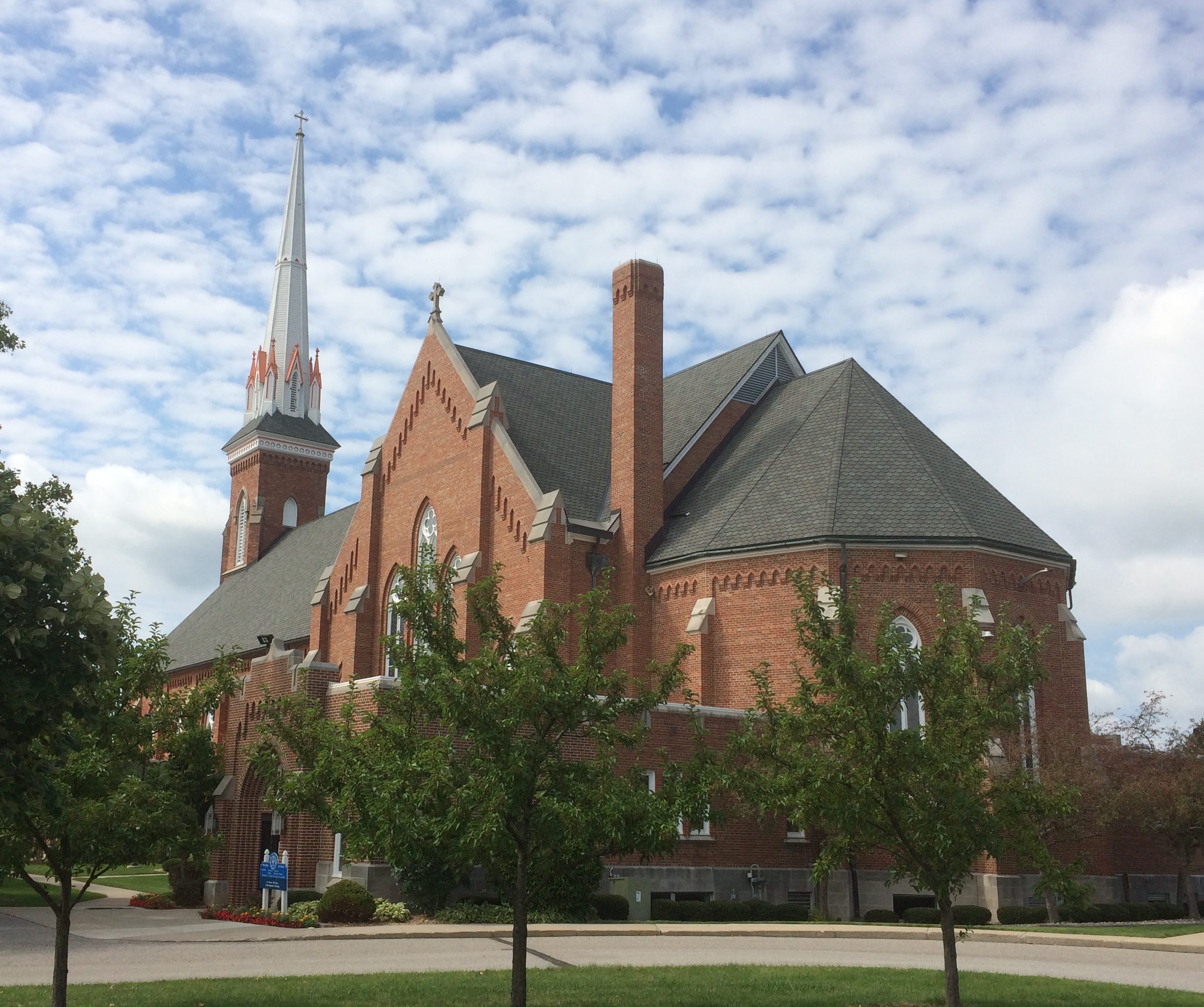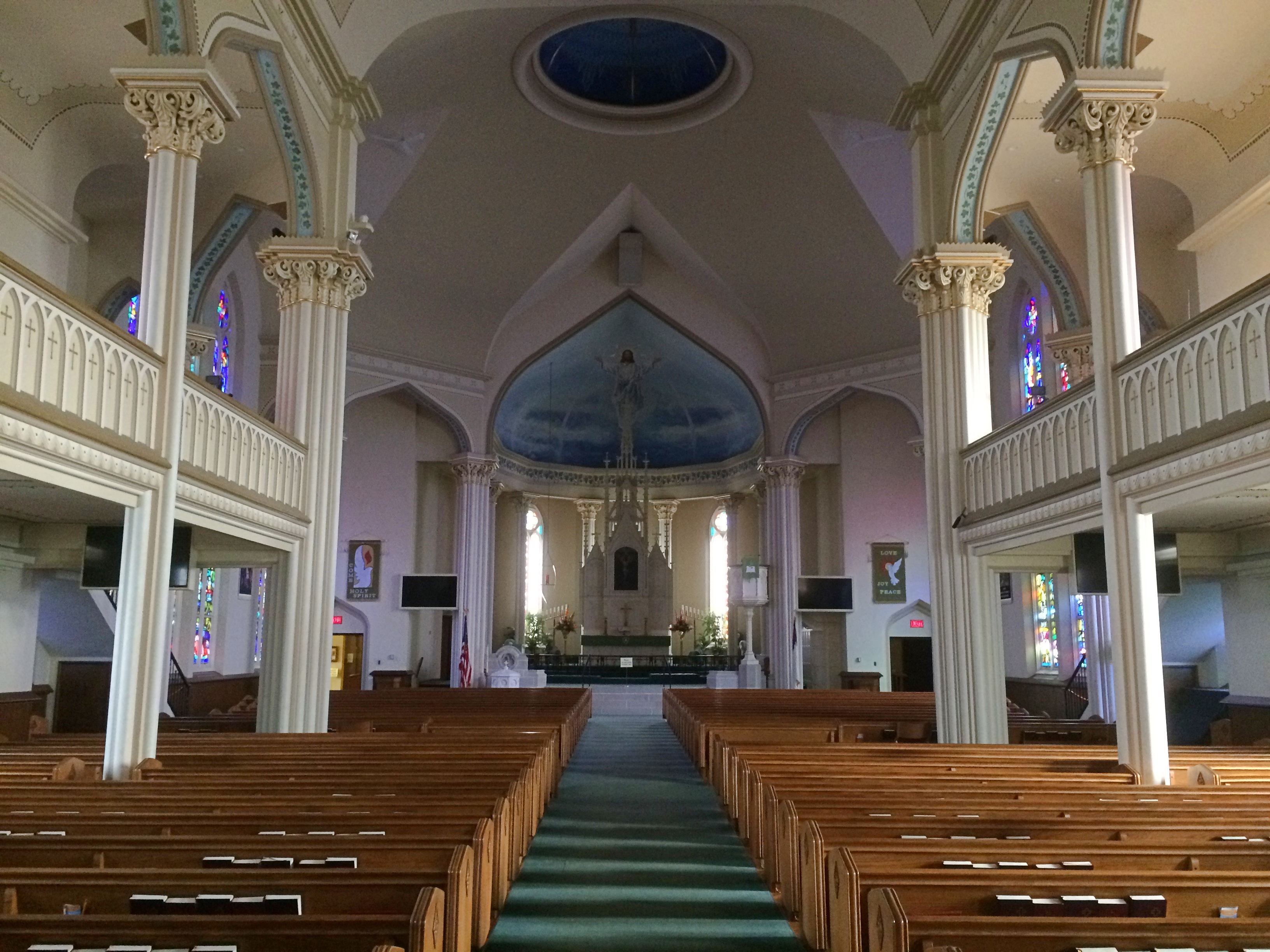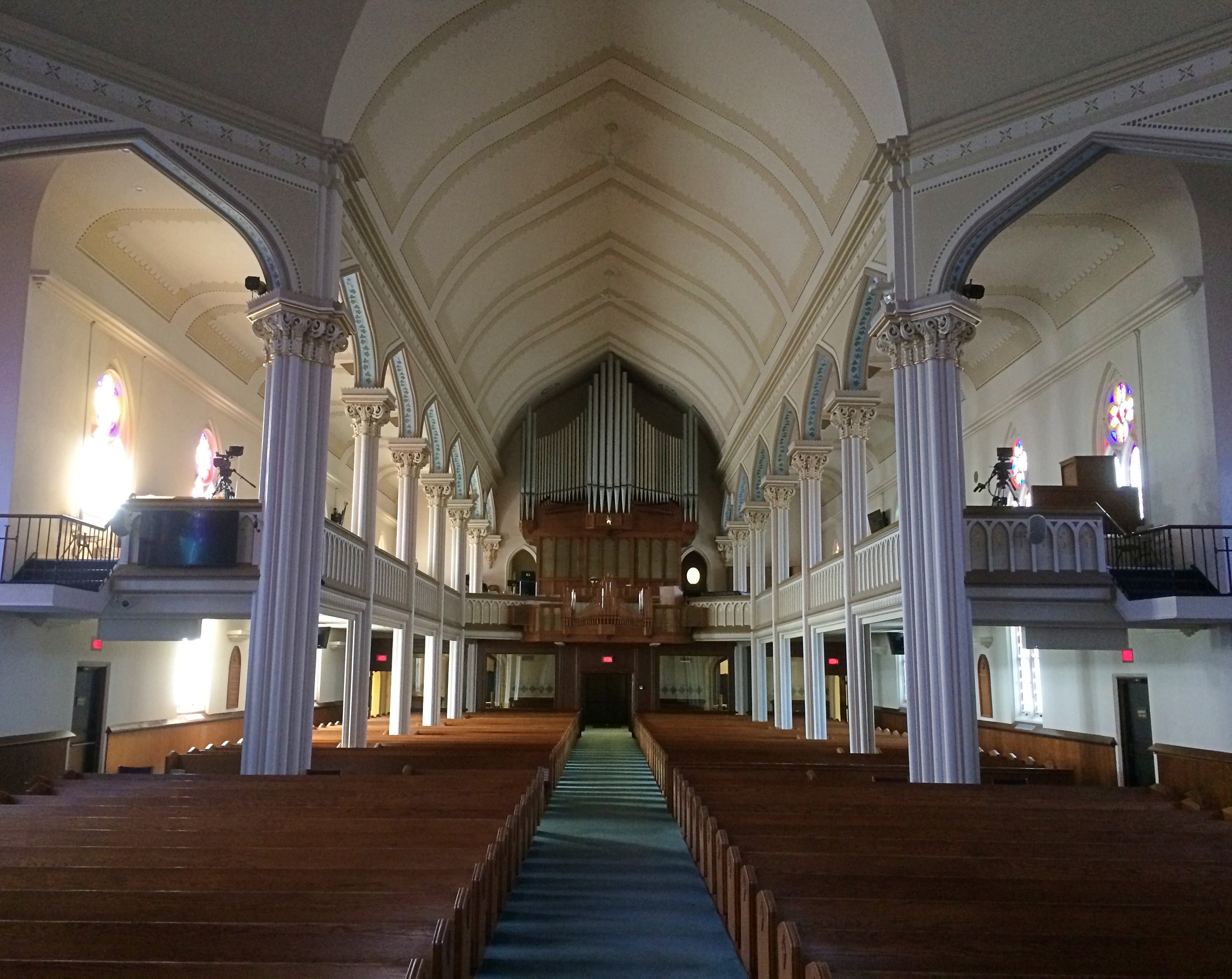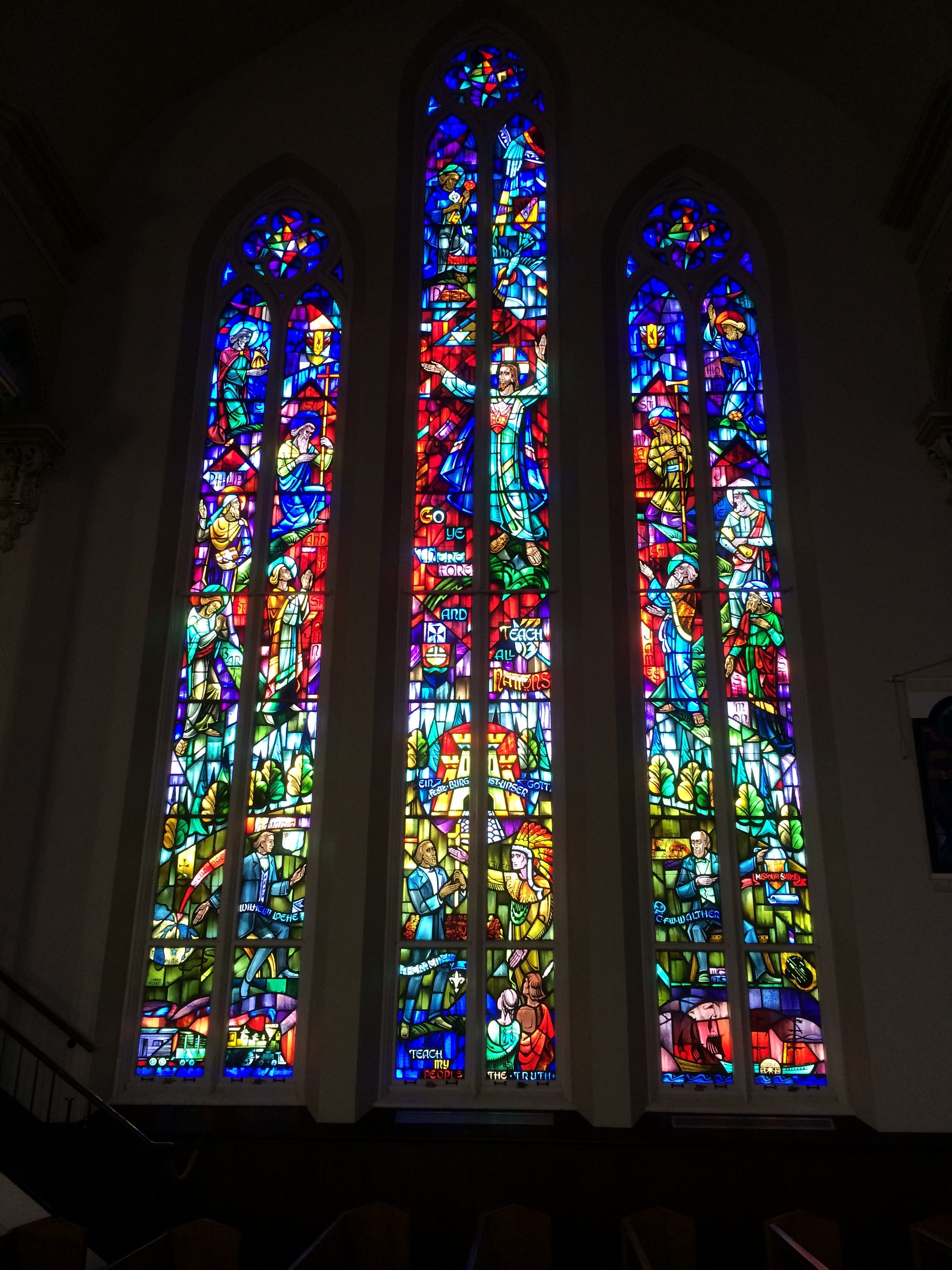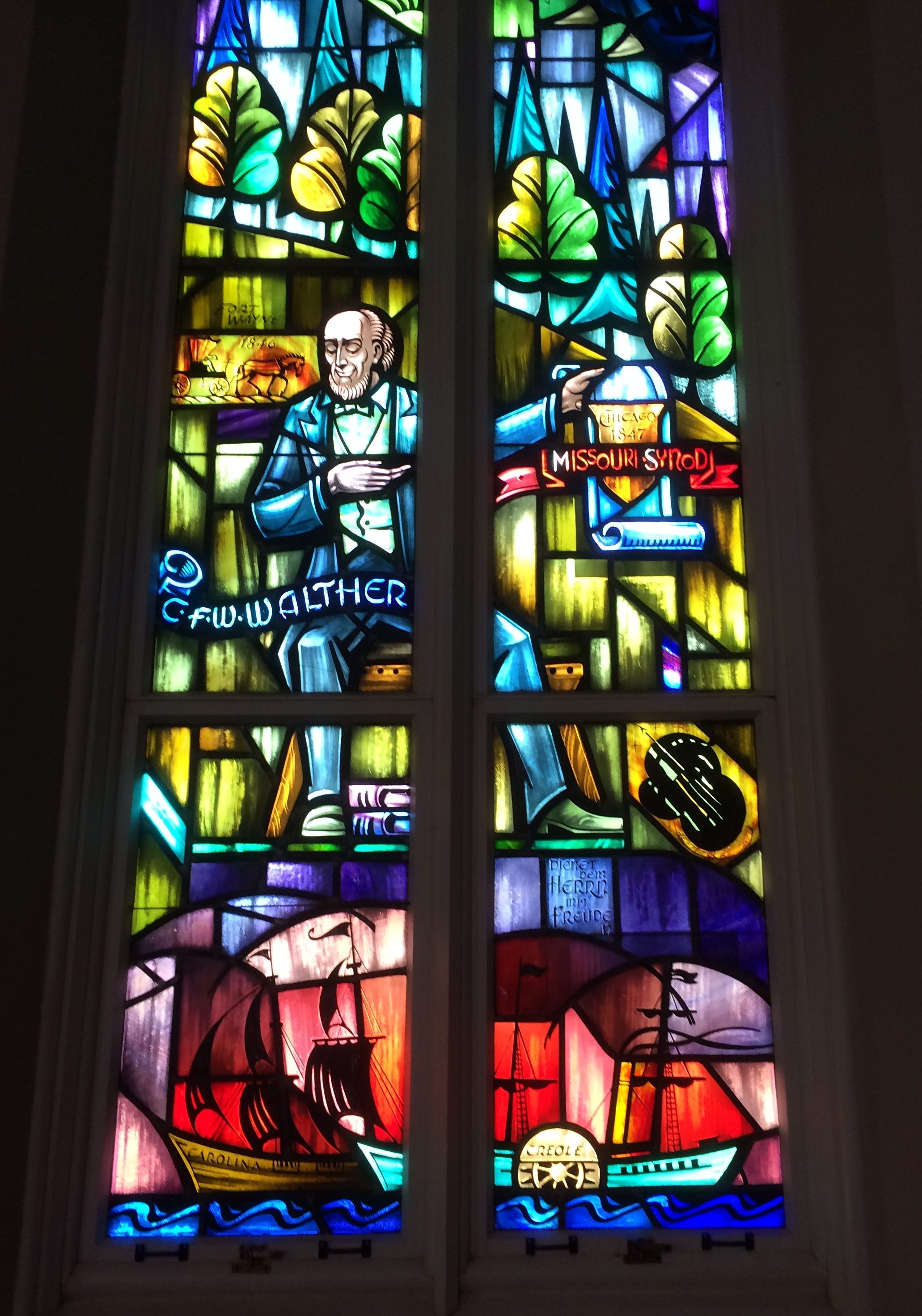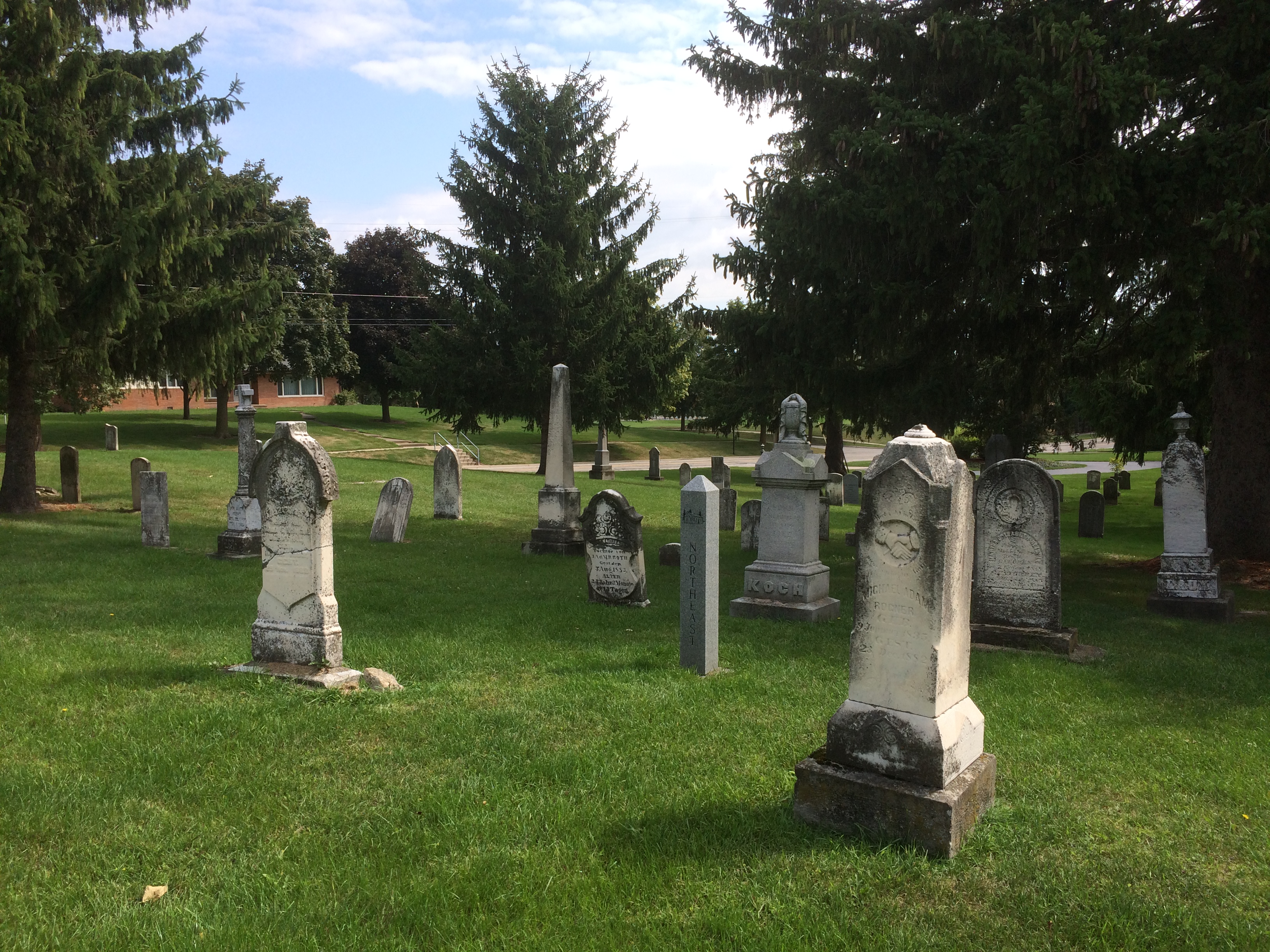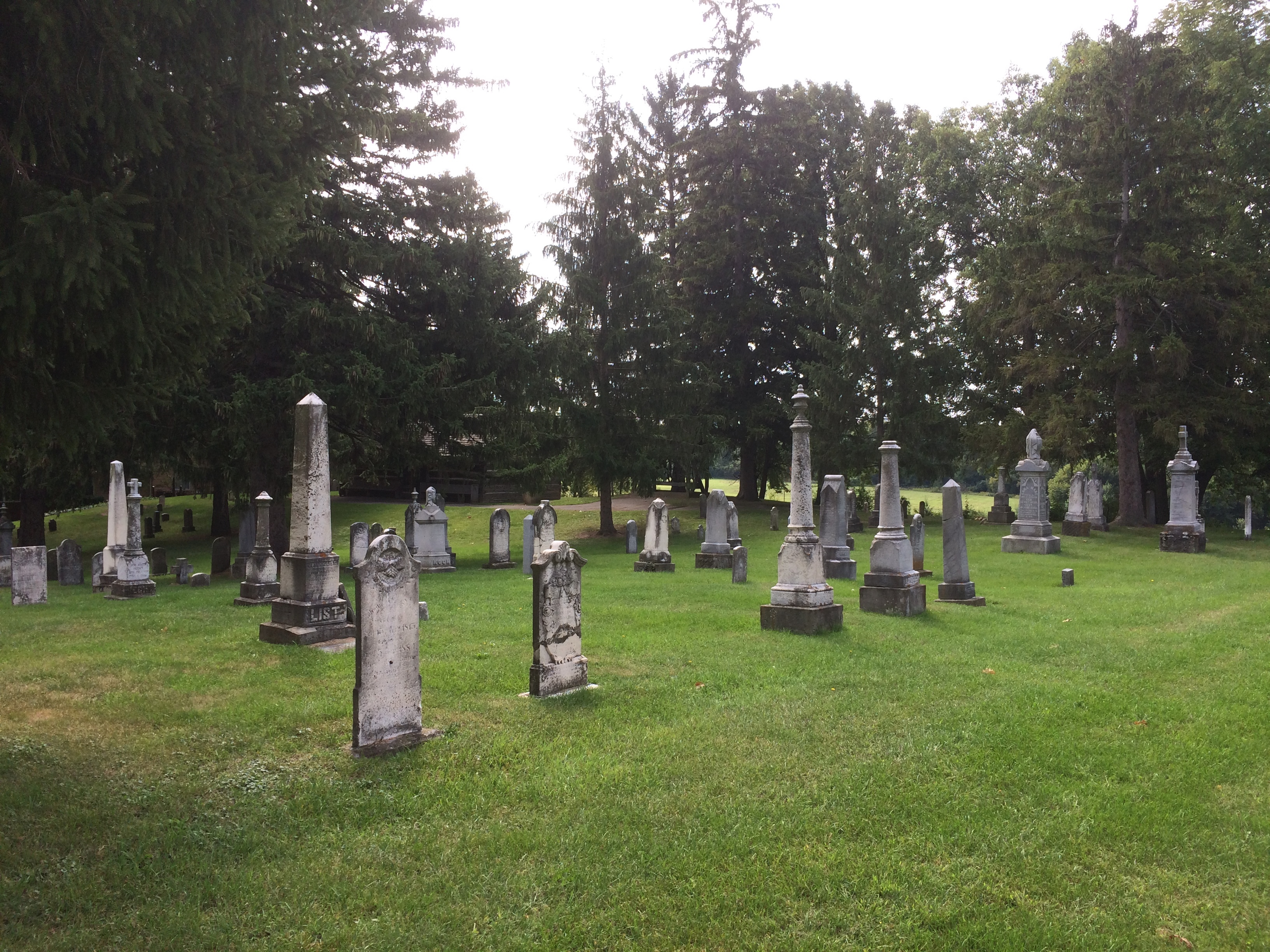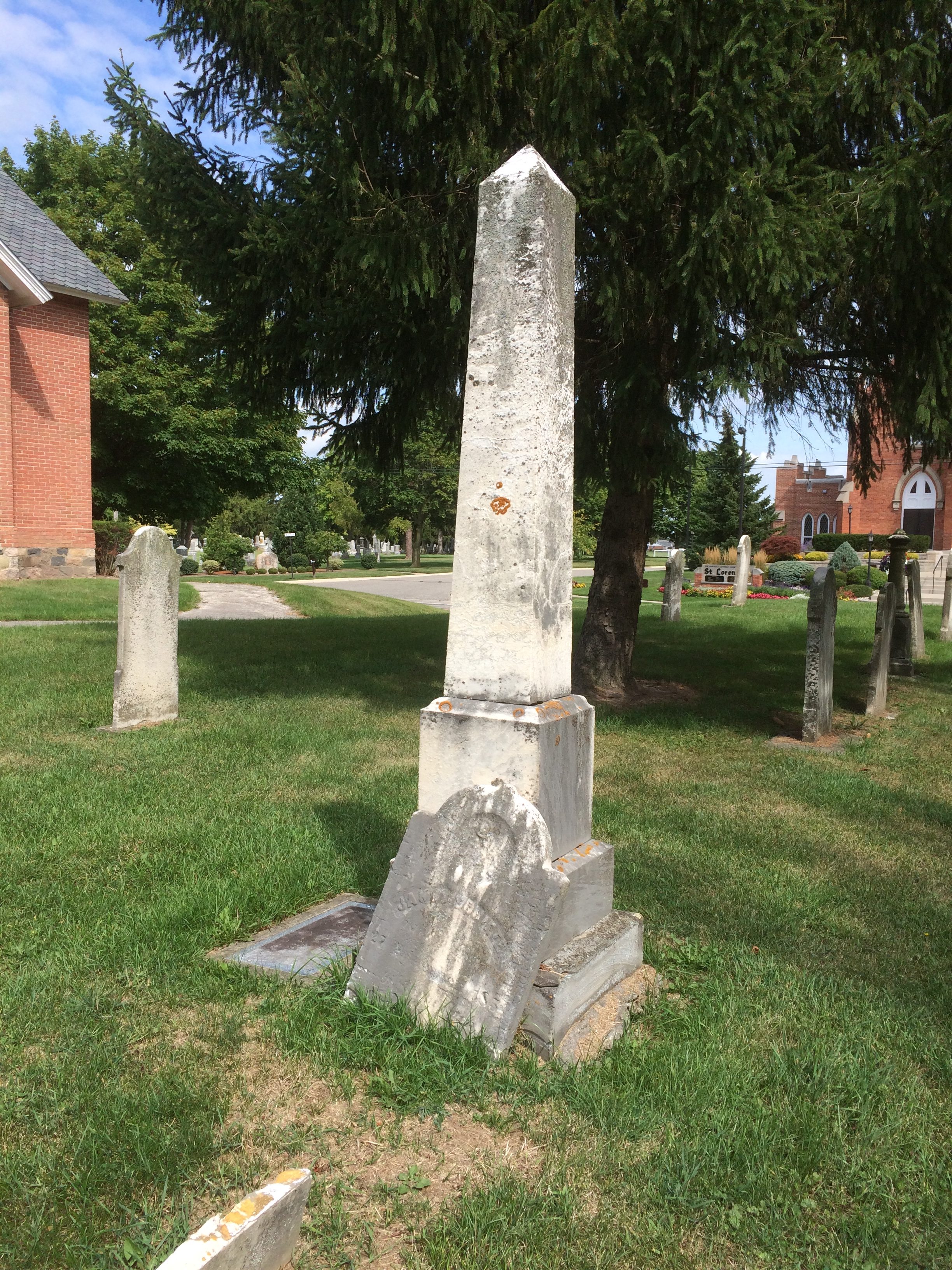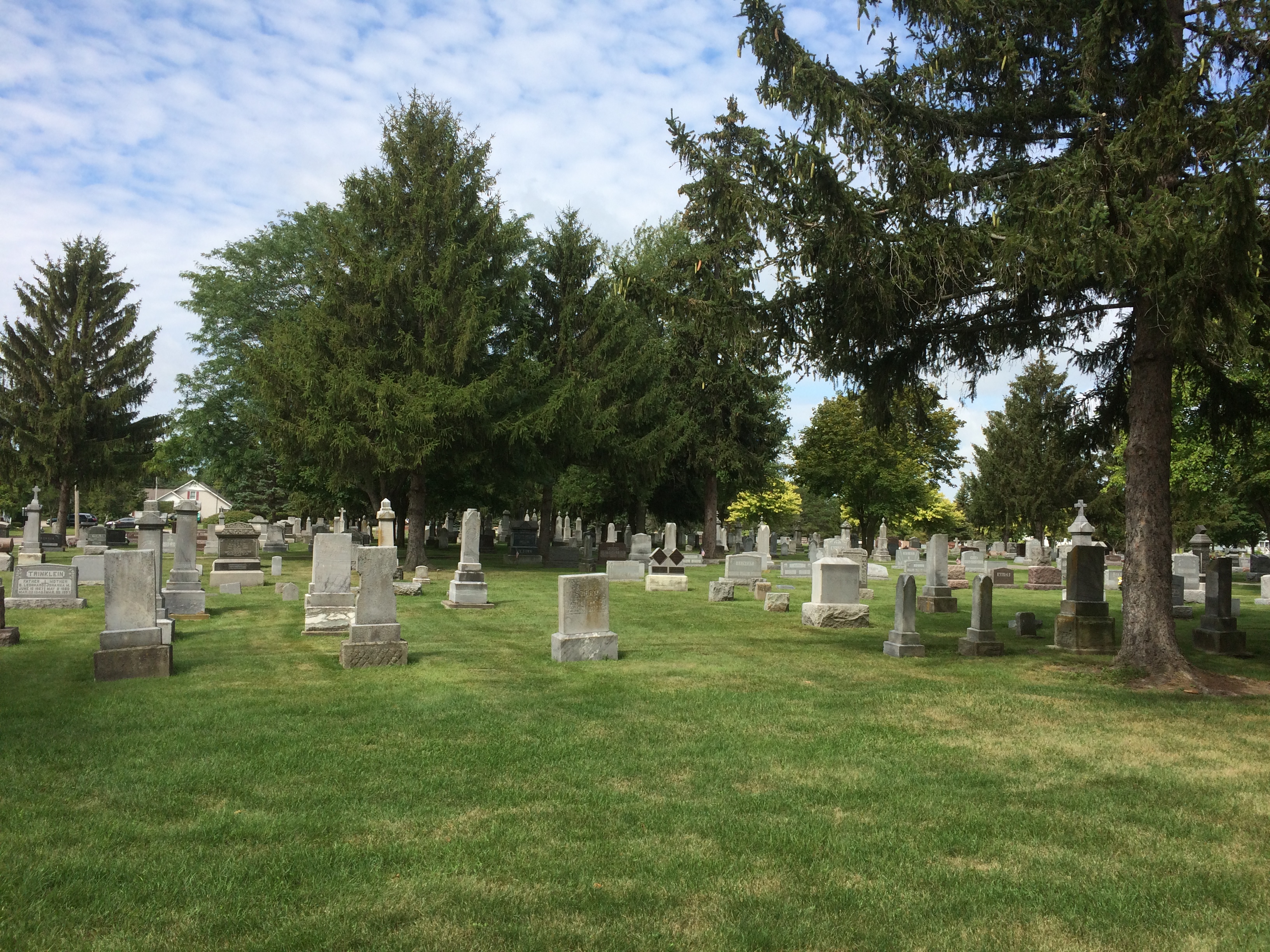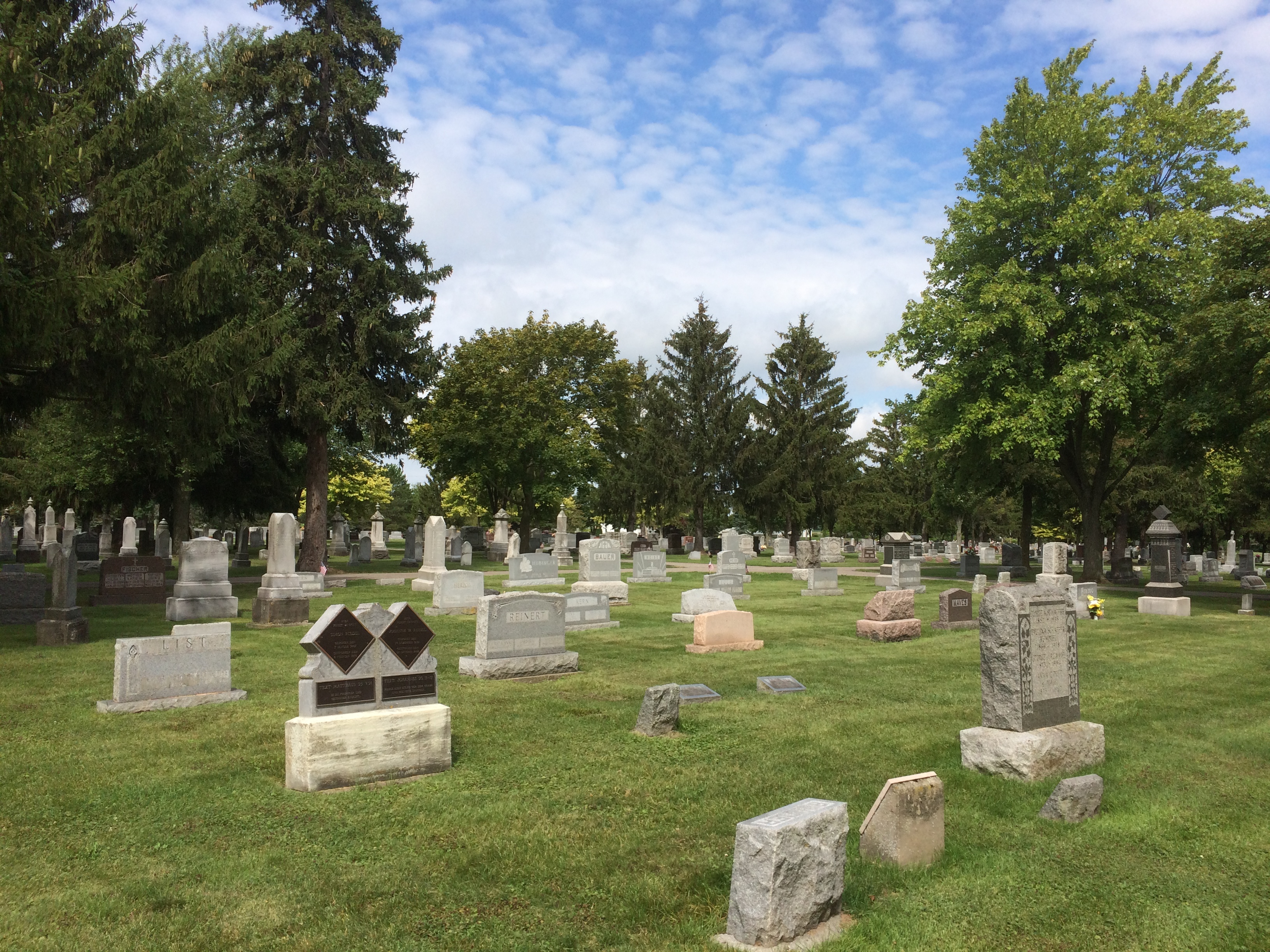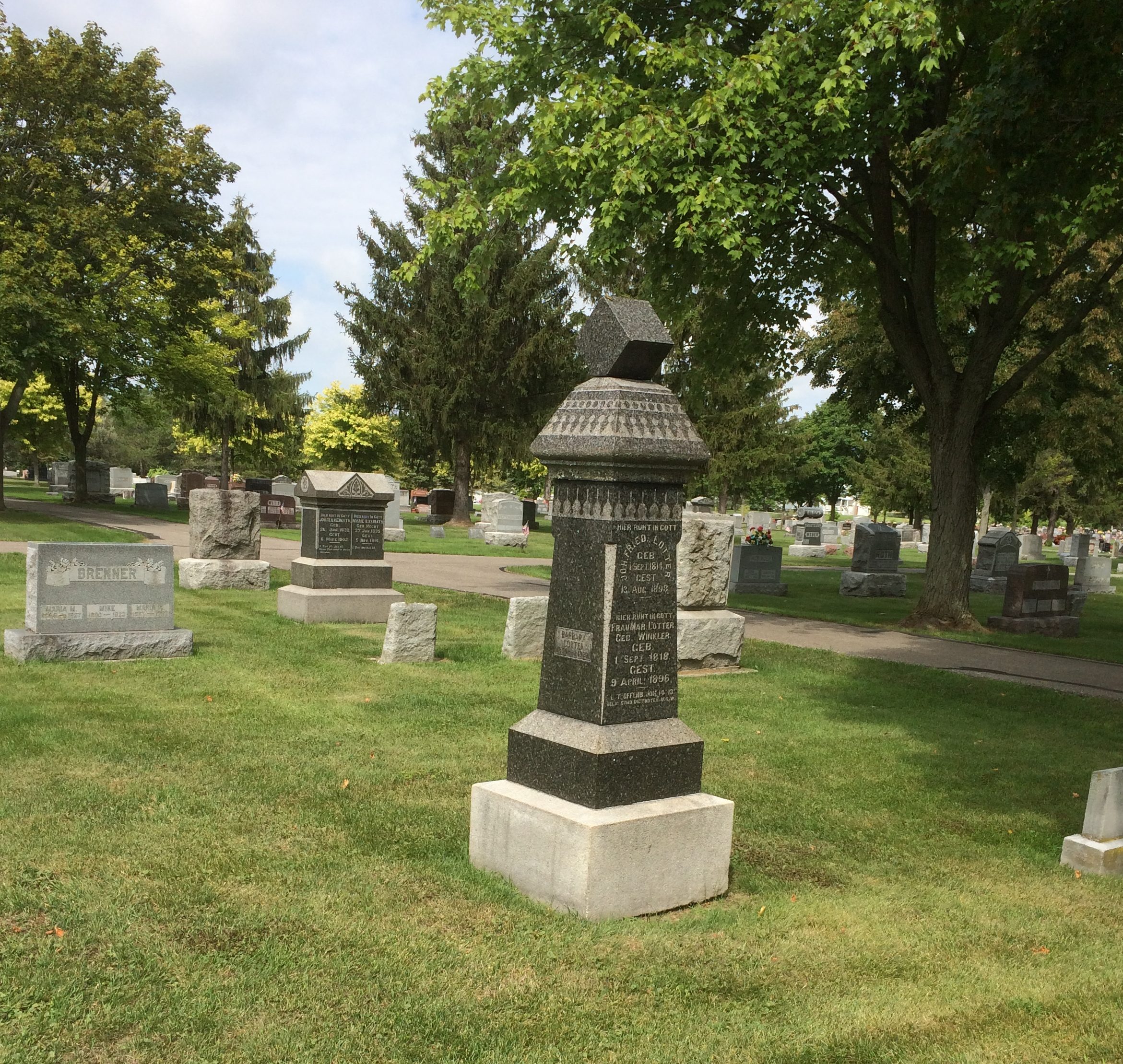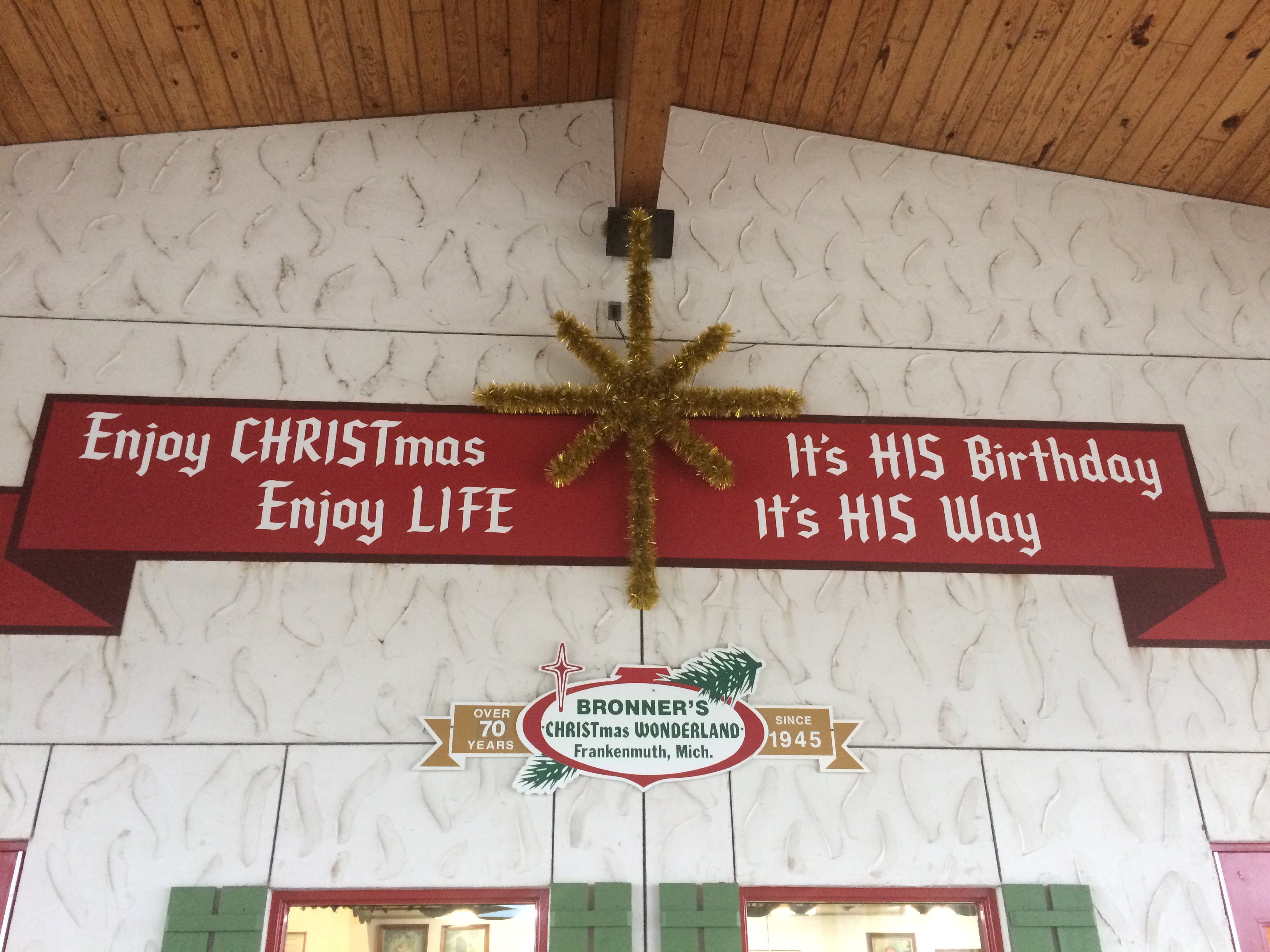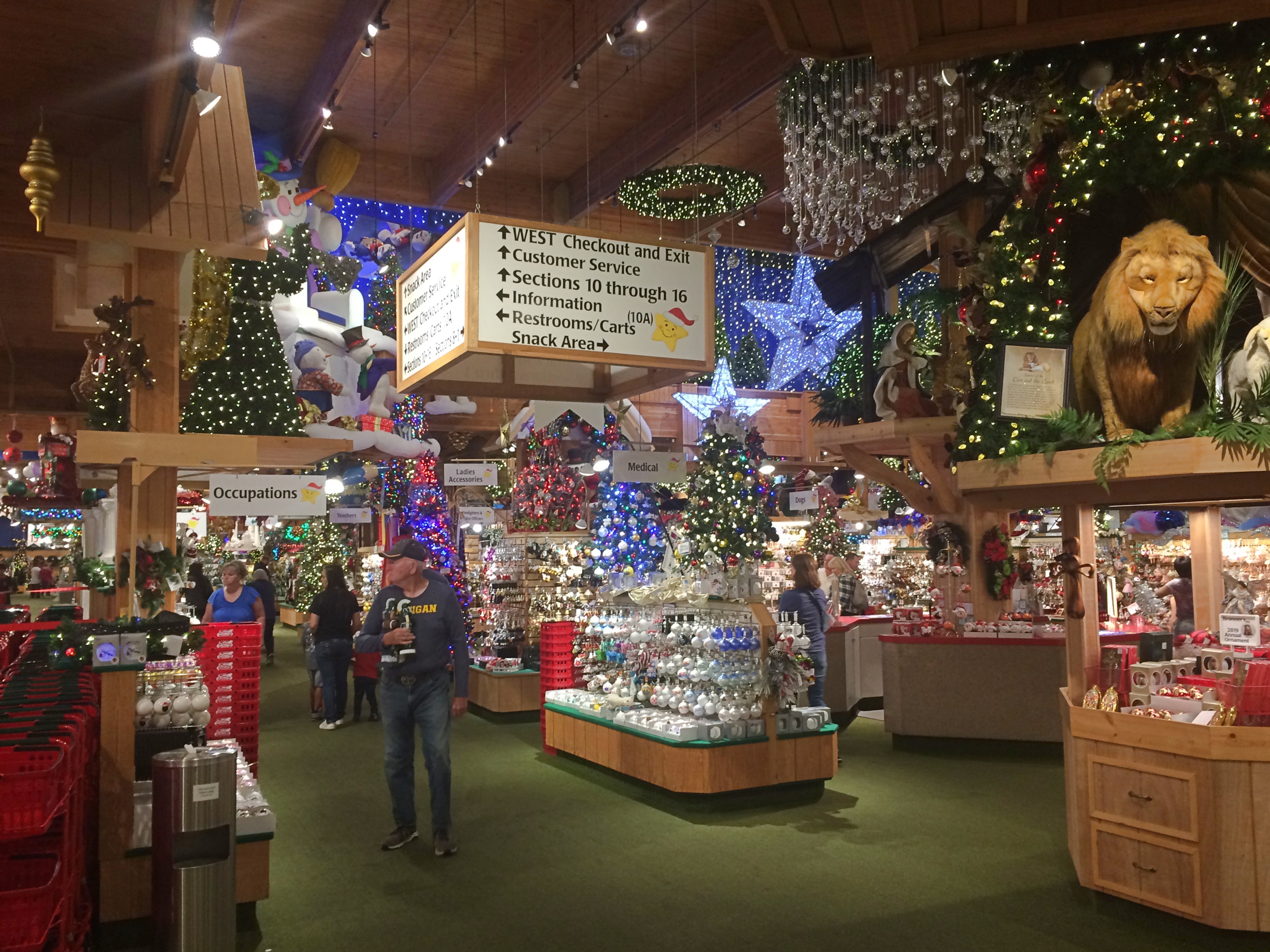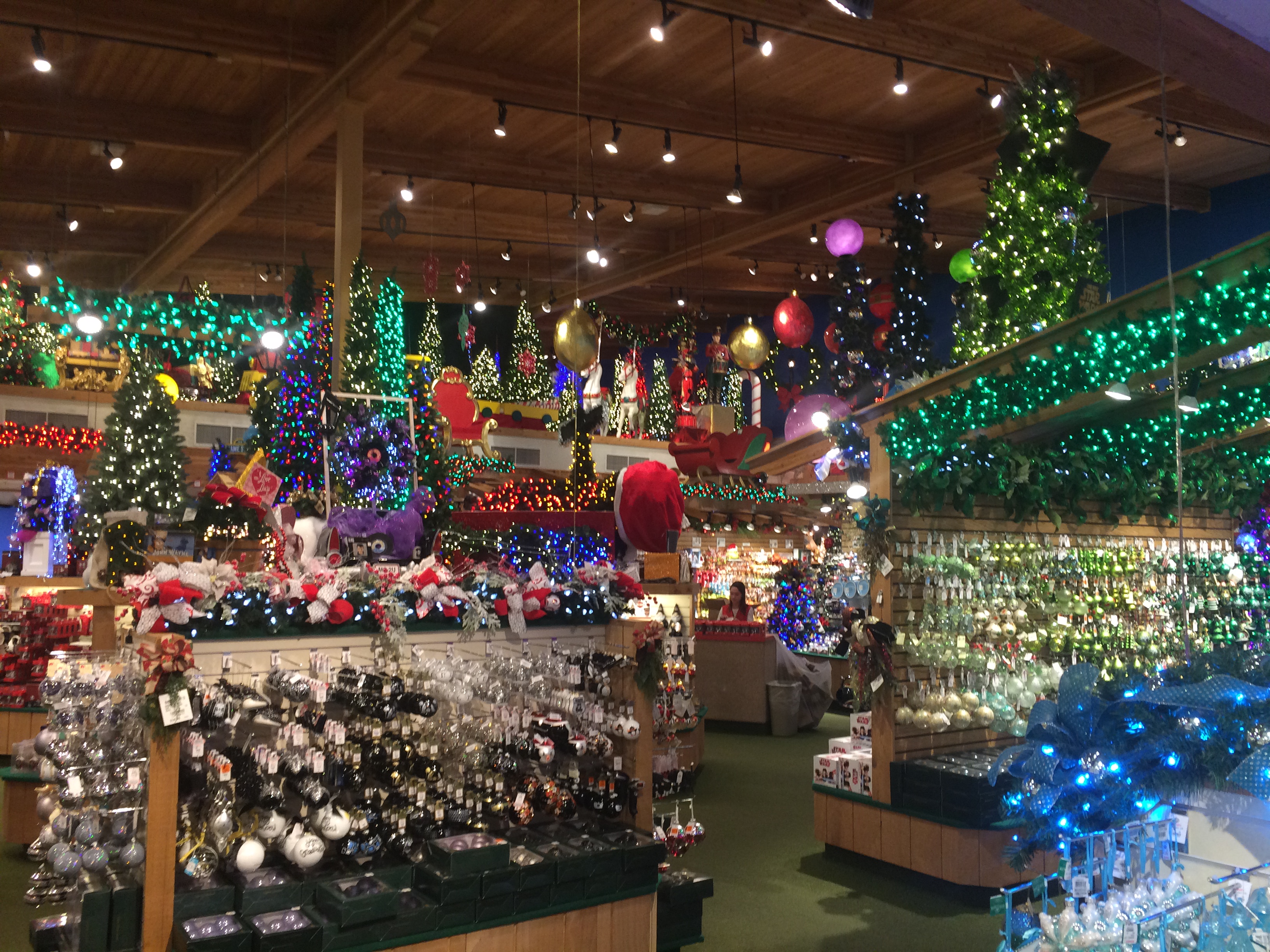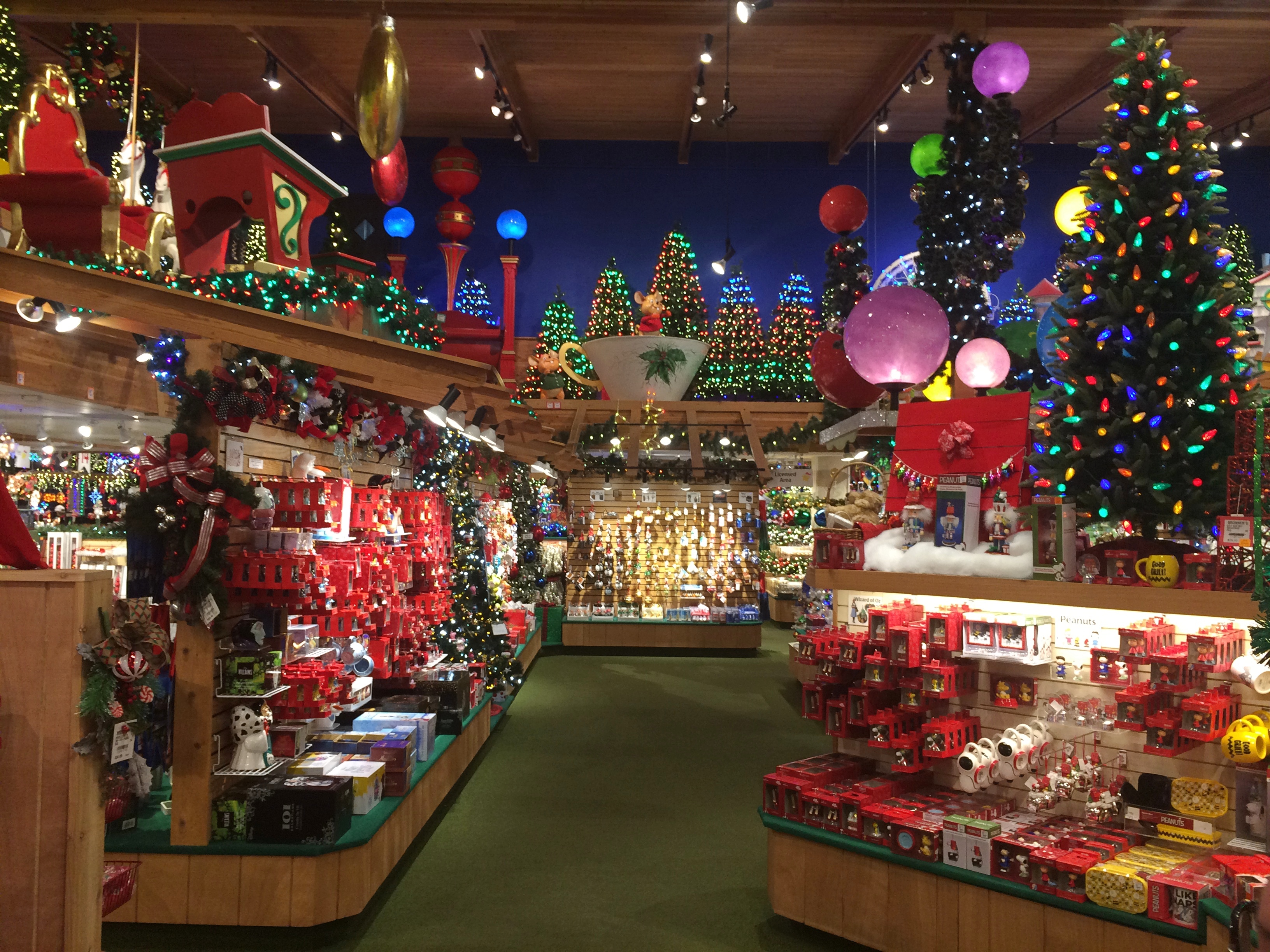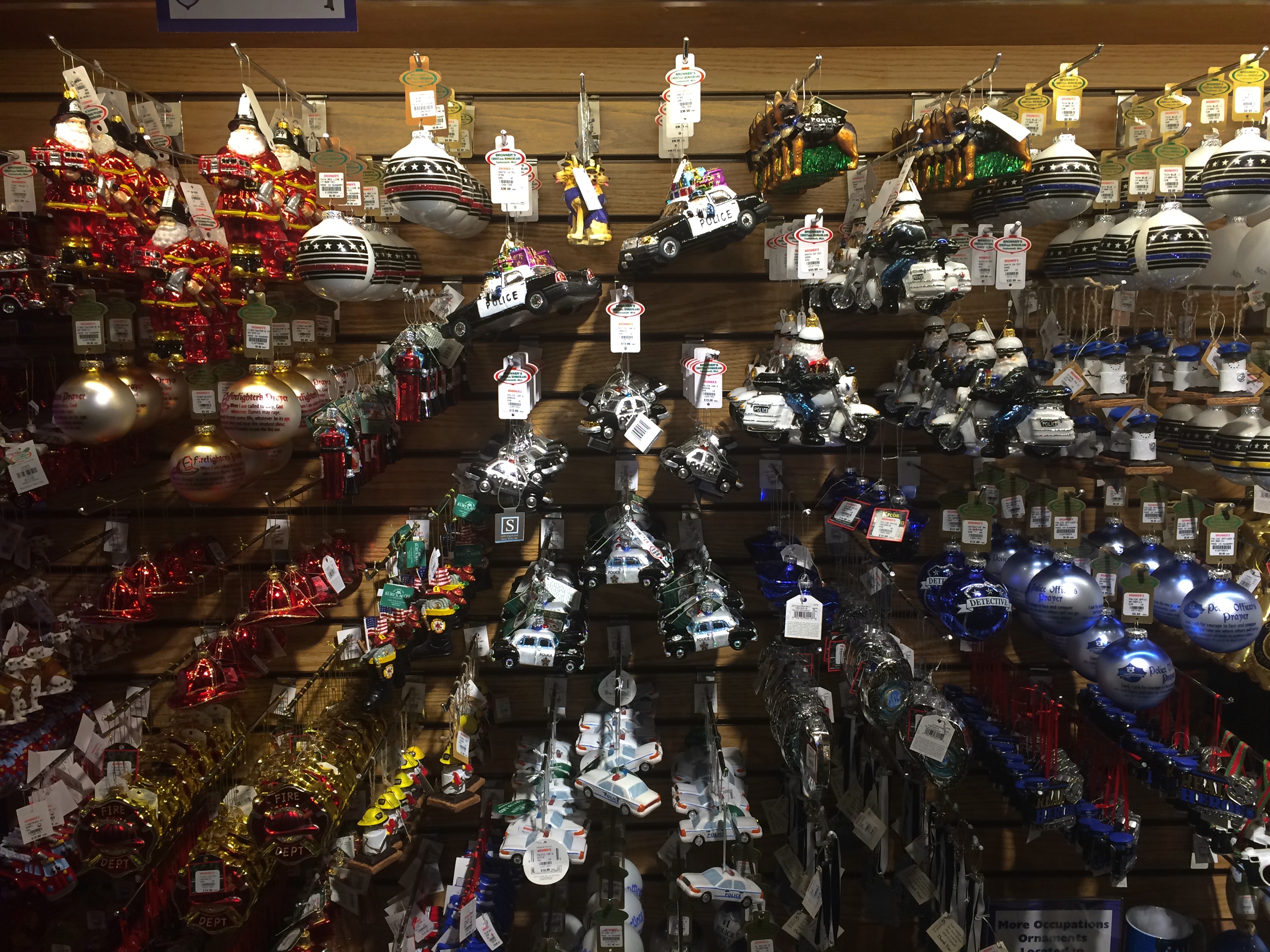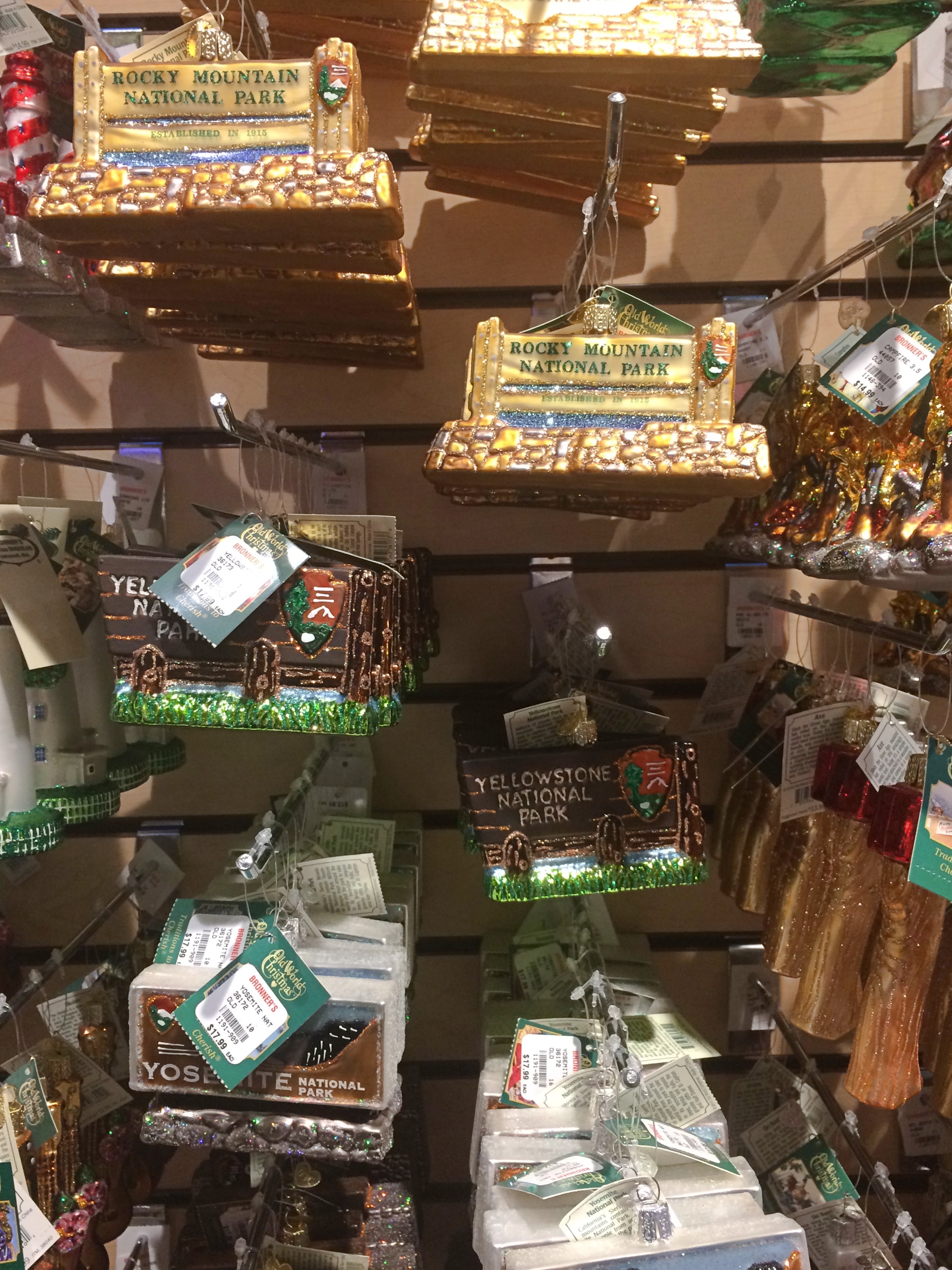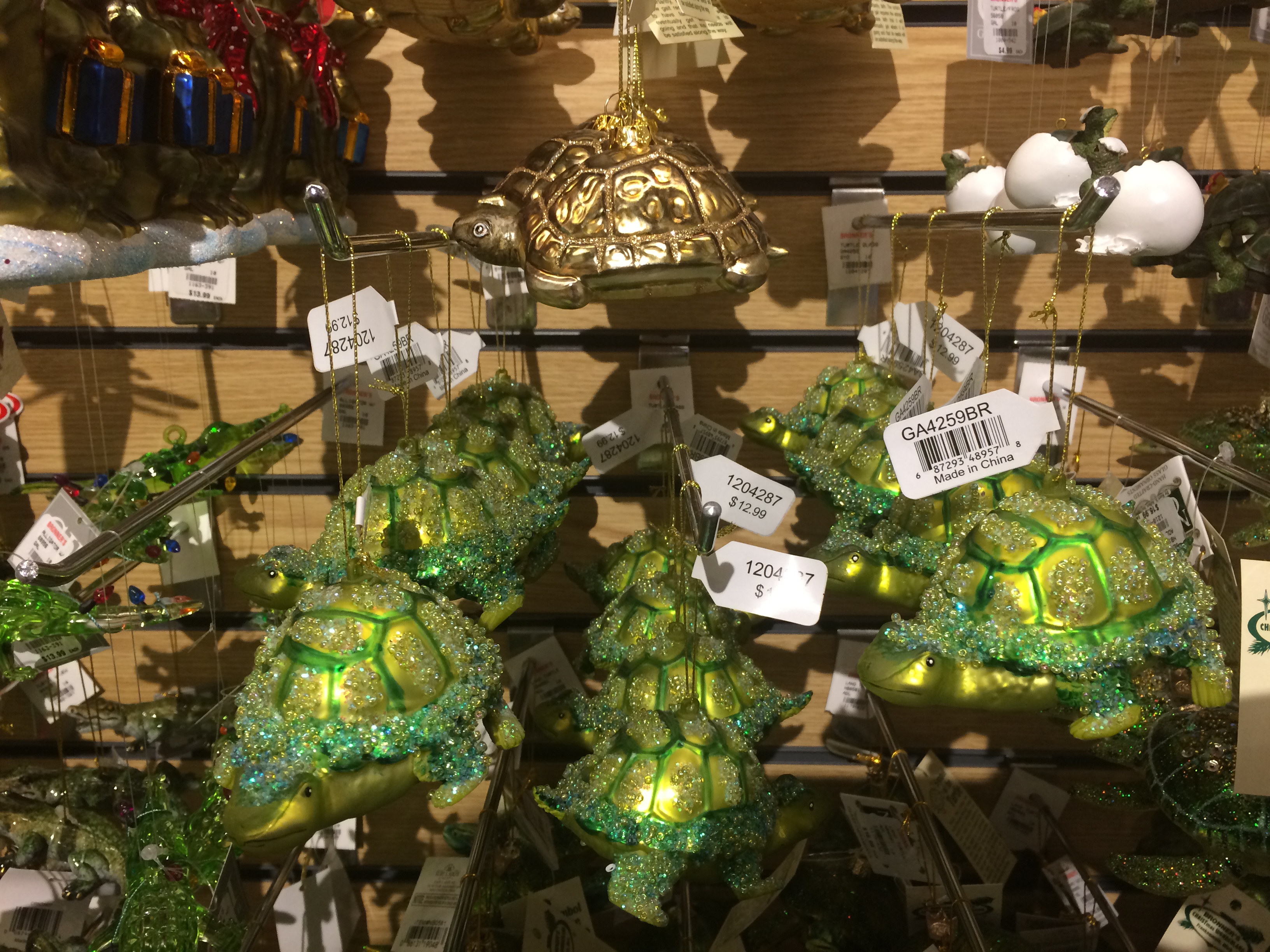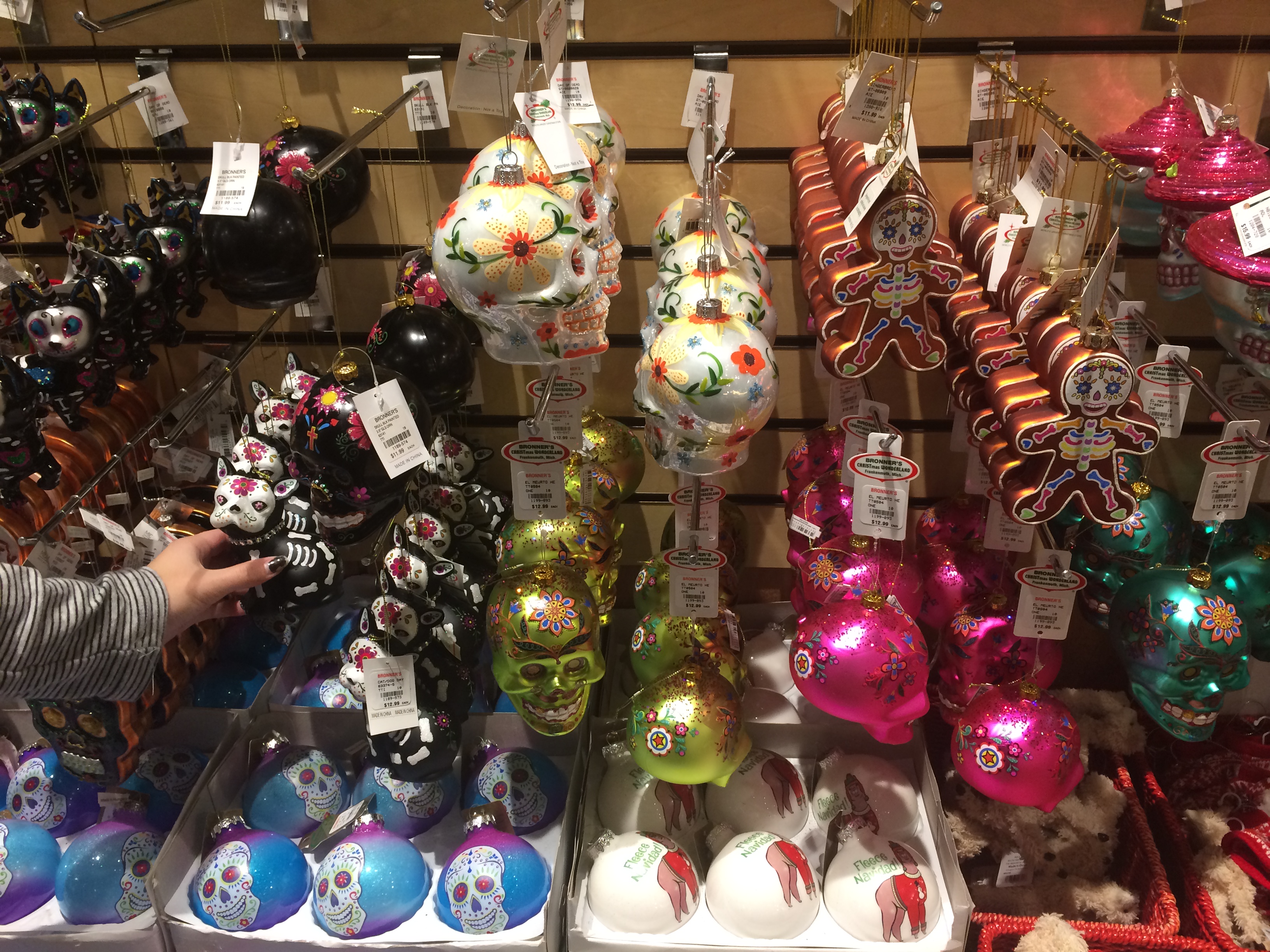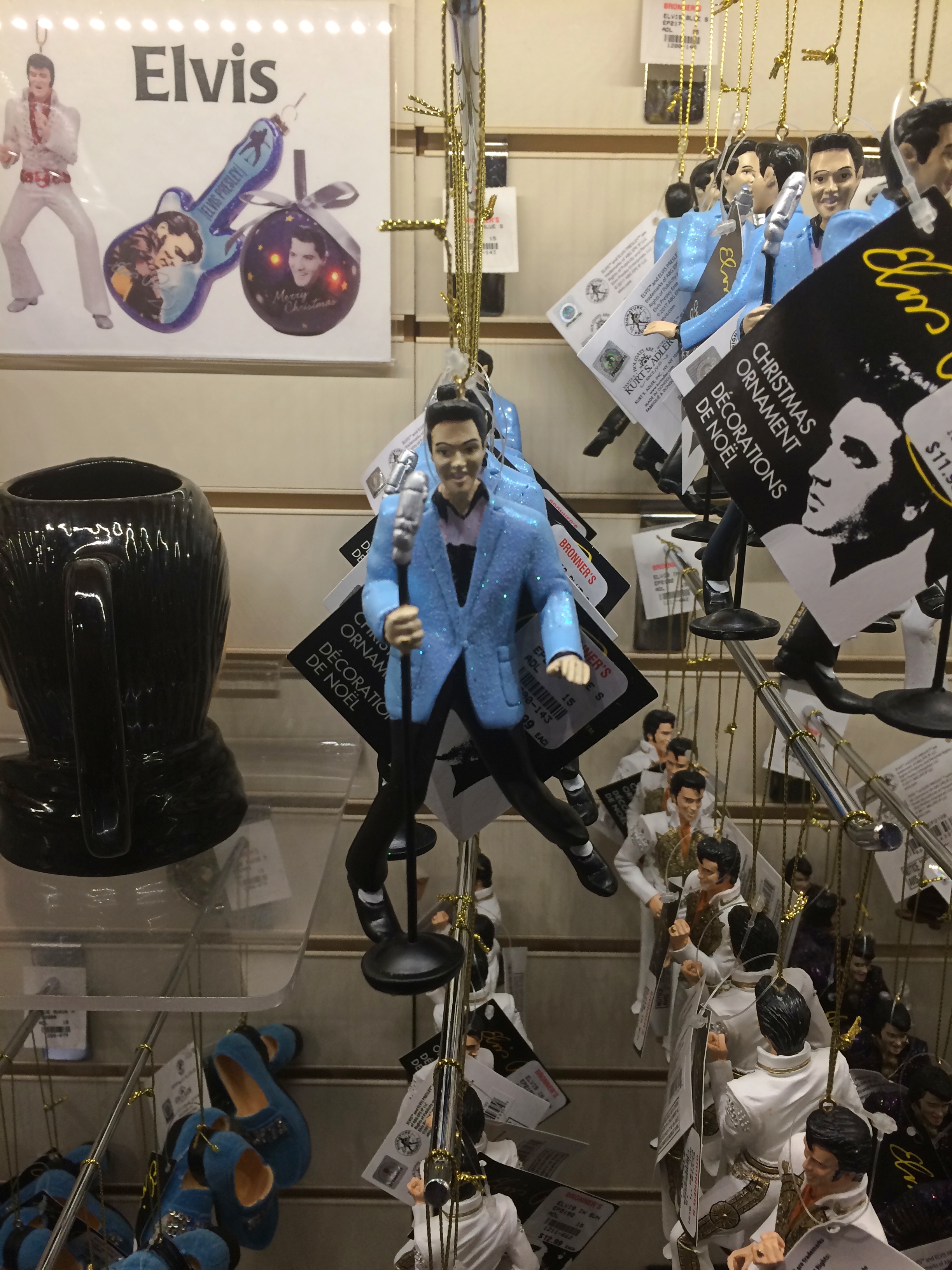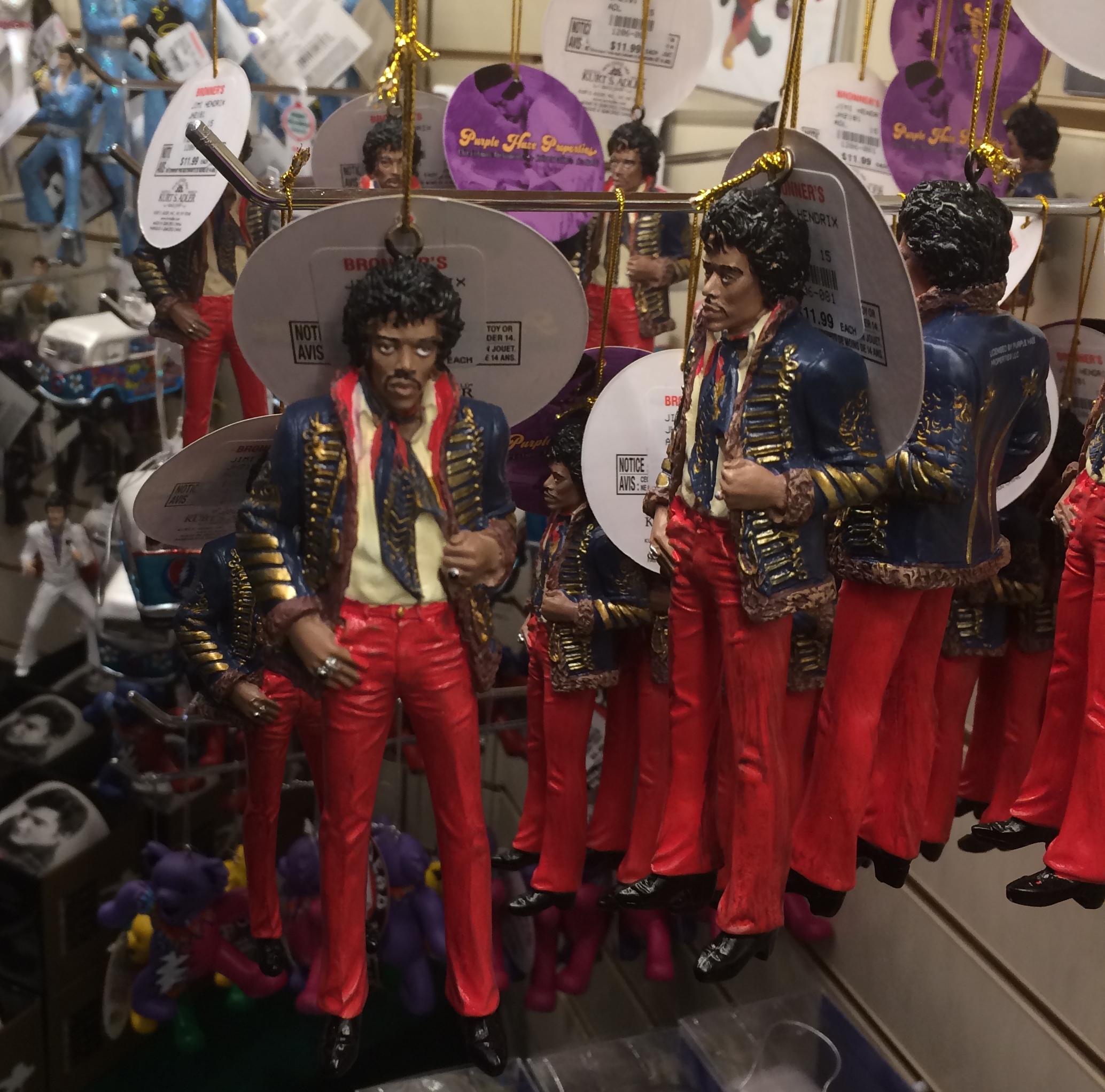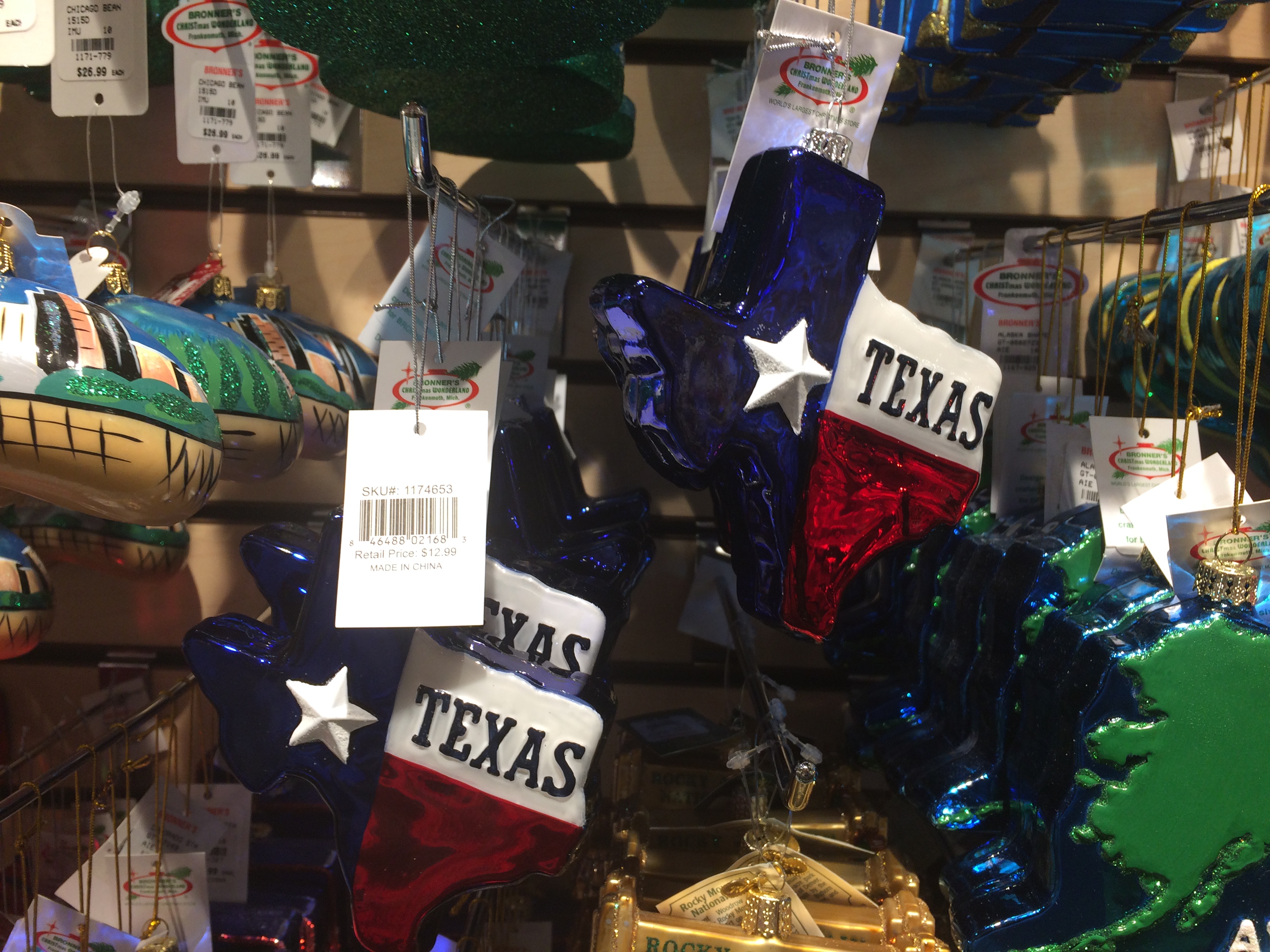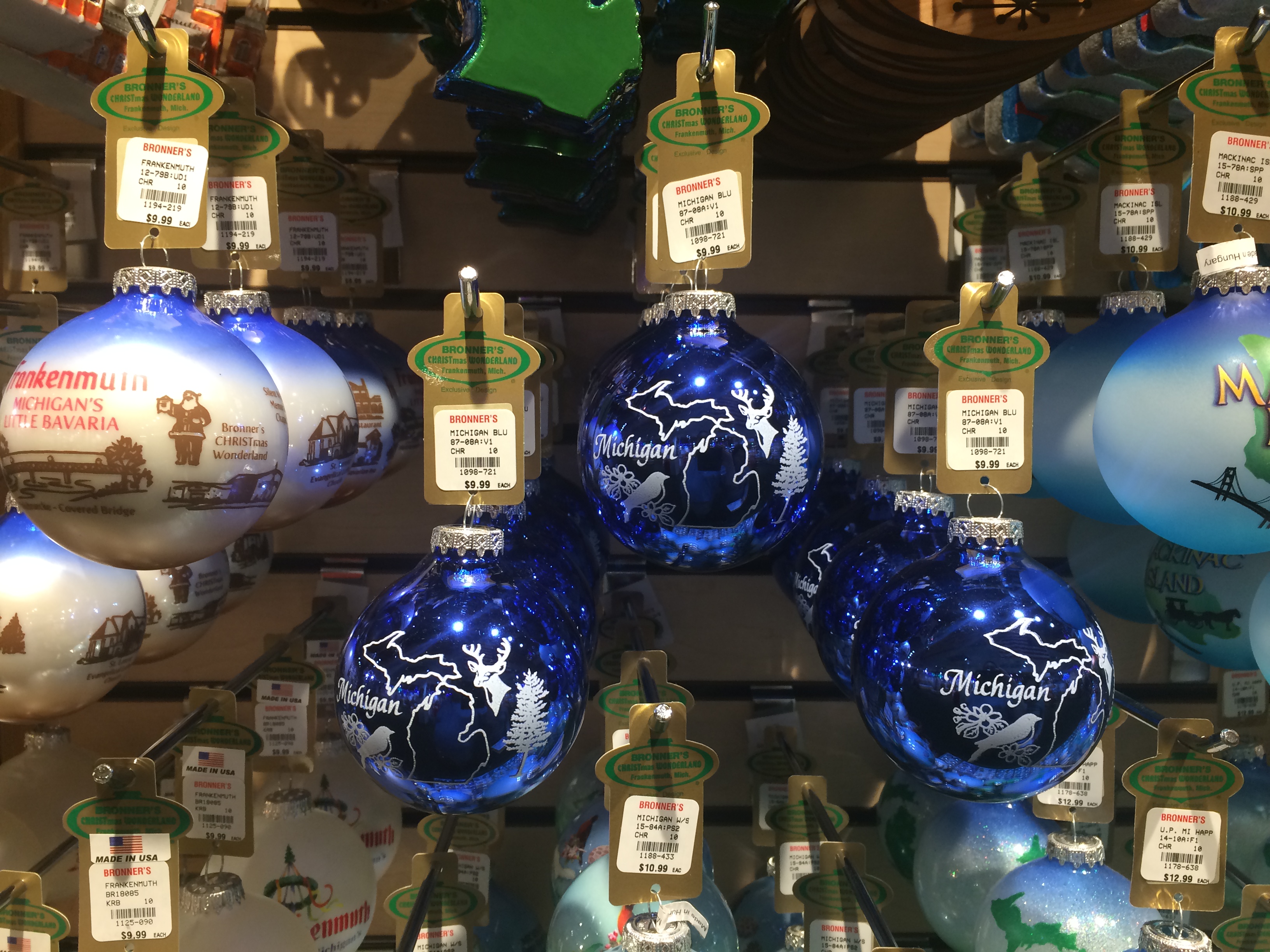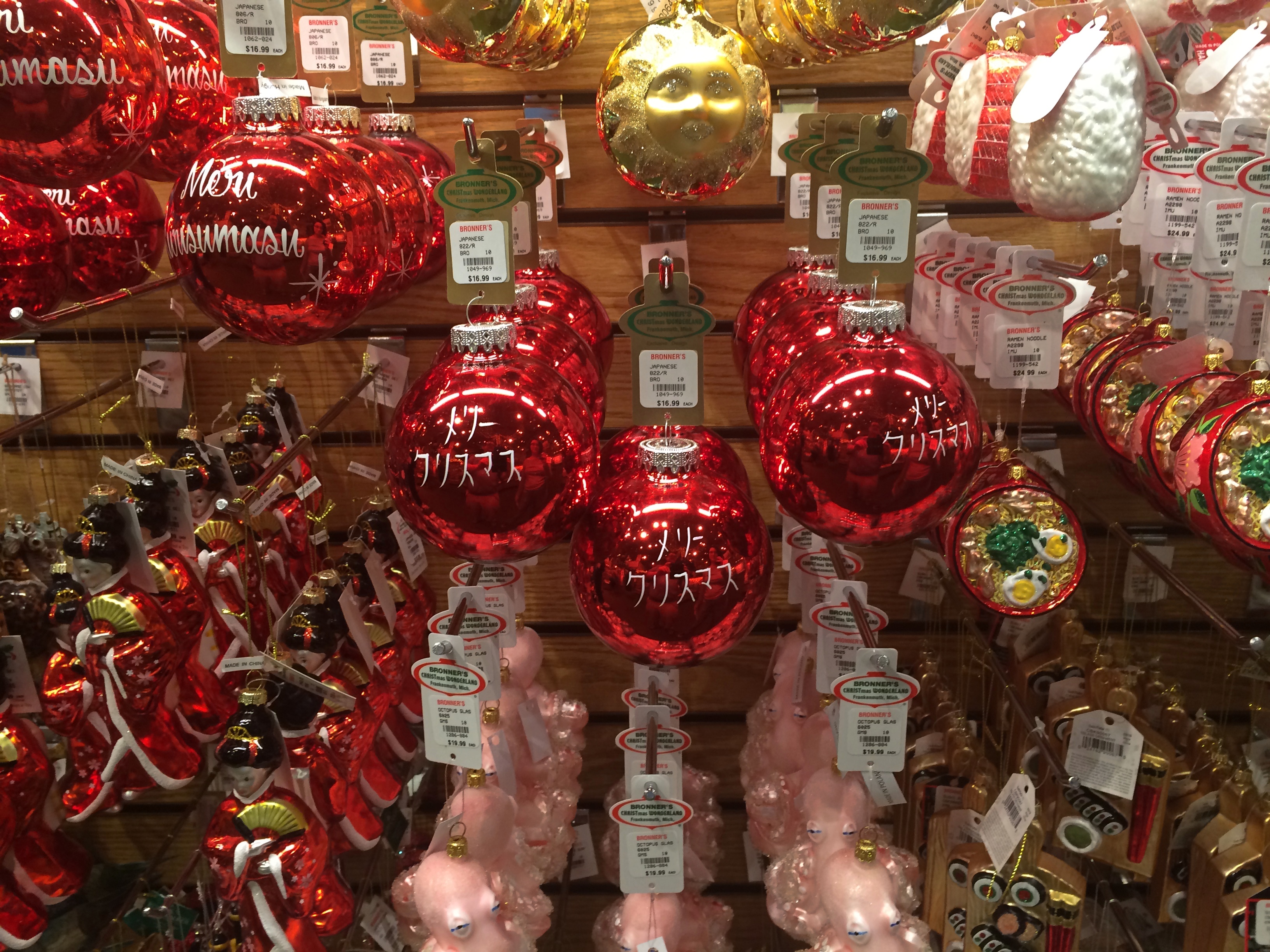Last year during Doors Open Milwaukee, we passed by the Milwaukee County Courthouse. I don’t think it was participating, but anyway we didn’t go in. Naturally, this year it’s still an imposing neo-classical edifice by McKim, Mead, and White, finished in 1931.
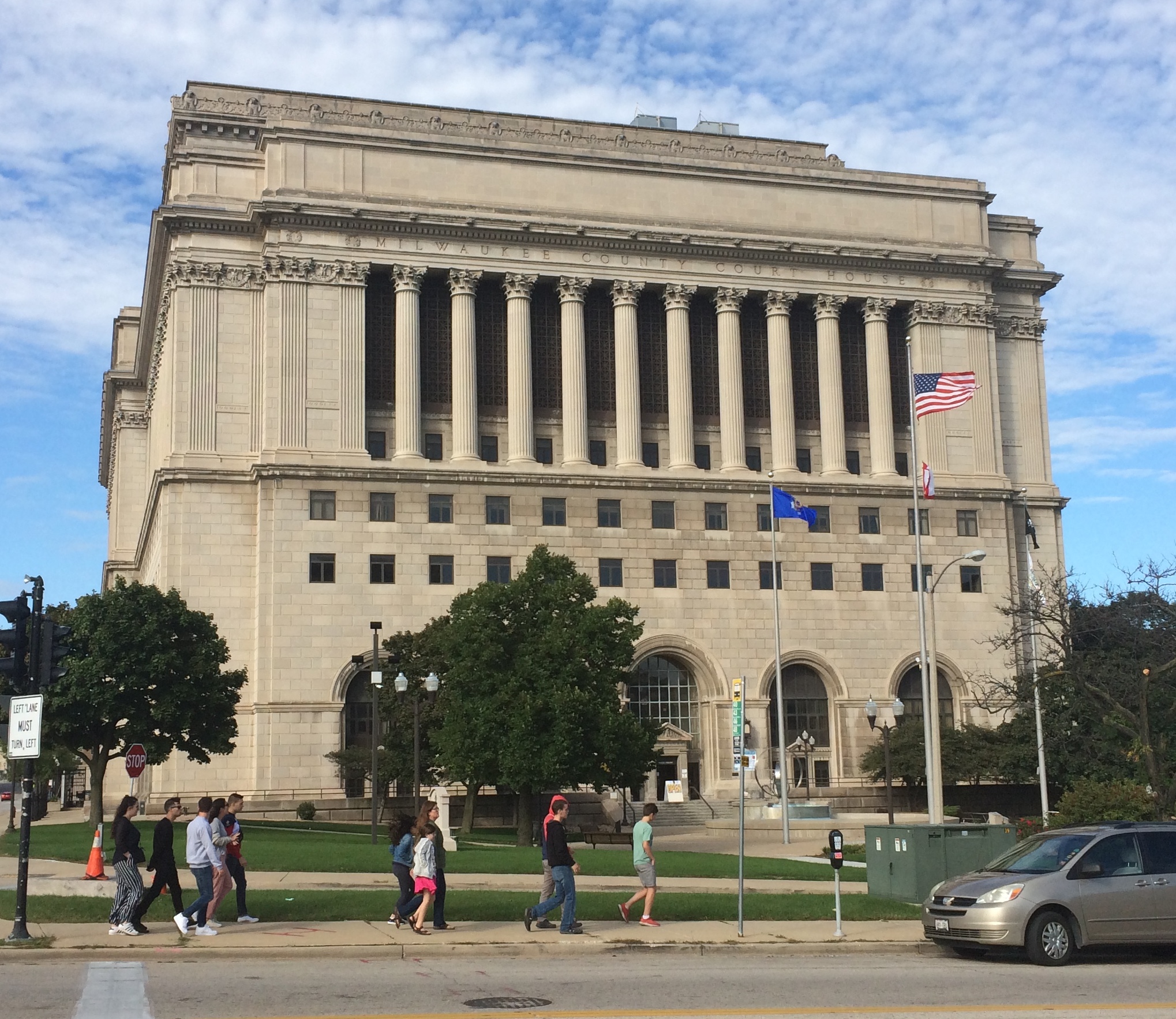 The building was open and we went in. But not at the owl entrance, whose single word Justice, if you’re in a cynical mood, might fall under the category of promises, promises.
The building was open and we went in. But not at the owl entrance, whose single word Justice, if you’re in a cynical mood, might fall under the category of promises, promises.
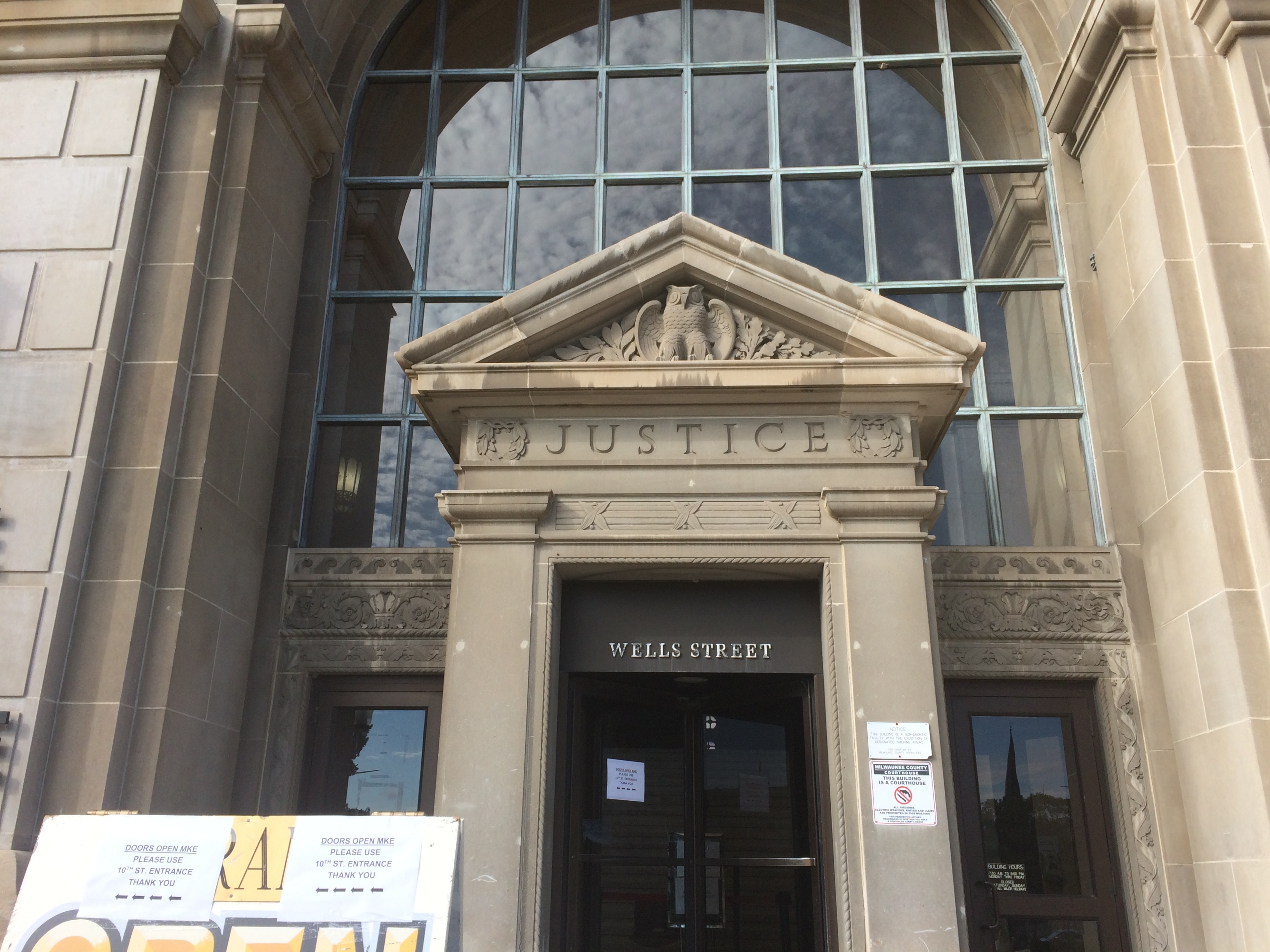 Some of the courthouse’s arched hallways were well lit.
Some of the courthouse’s arched hallways were well lit.
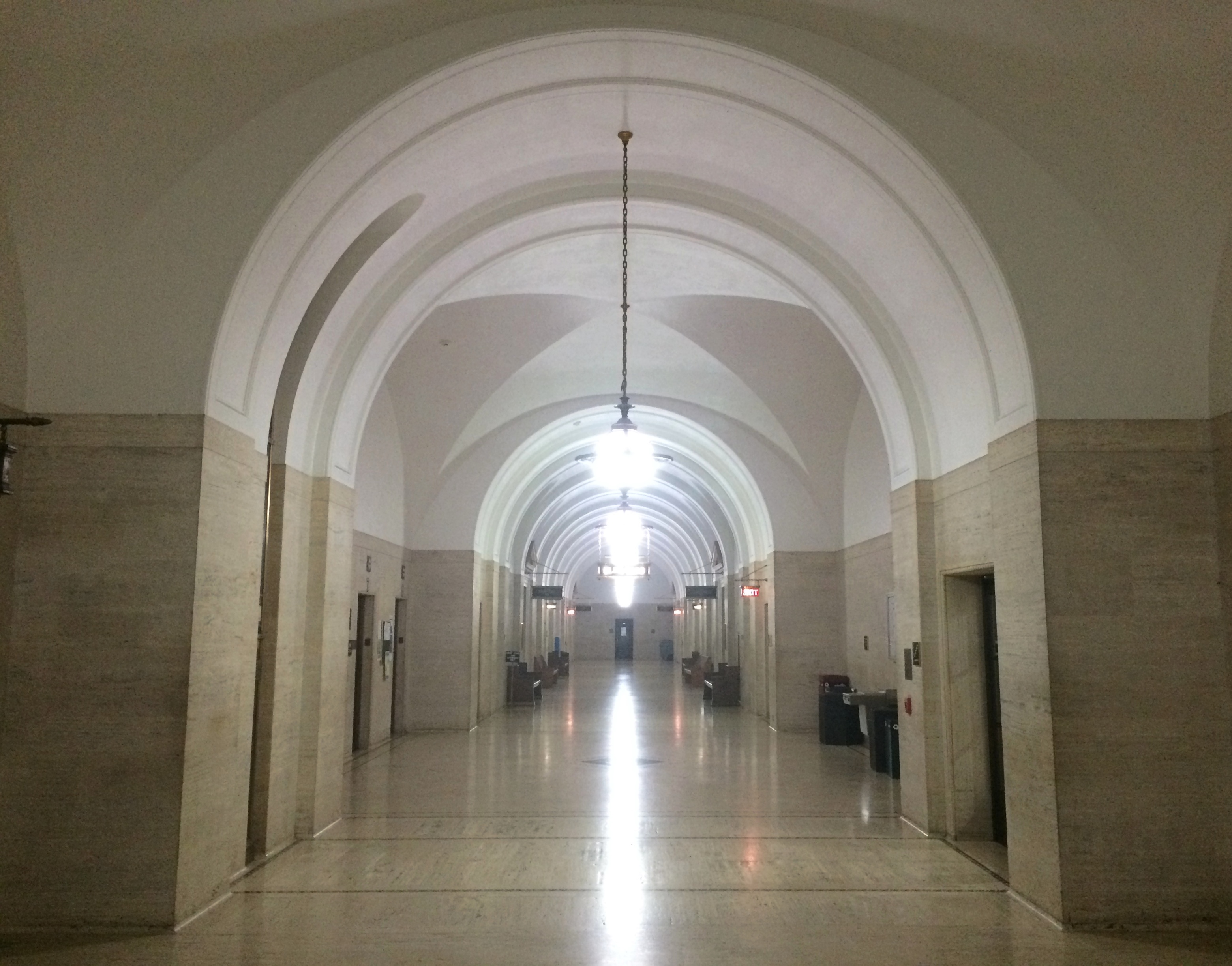 Others, not so much.
Others, not so much.
 One well-appointed courtroom, that of Judge Someone-or-Other, was open for inspection.
One well-appointed courtroom, that of Judge Someone-or-Other, was open for inspection.
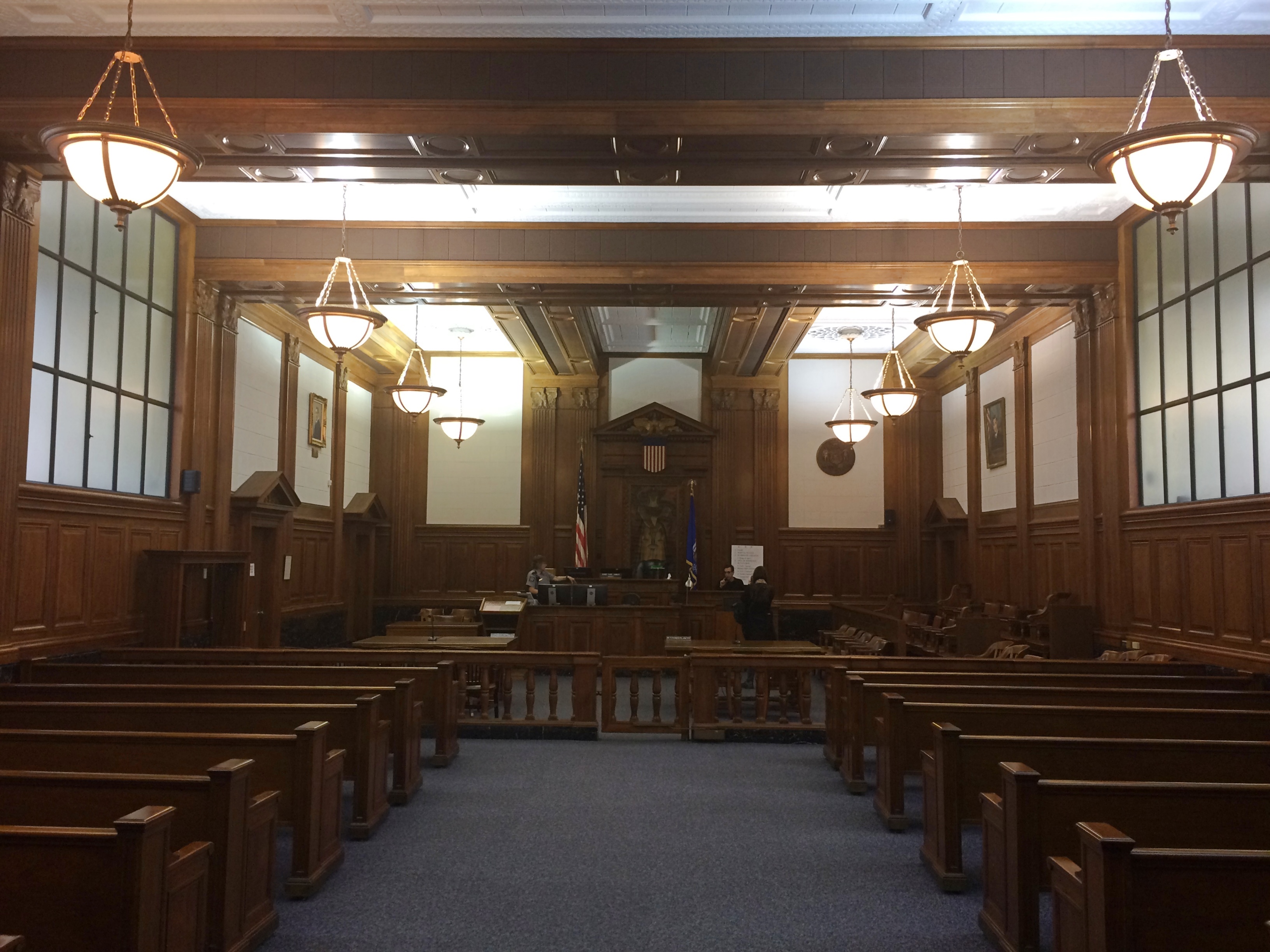 Mostly the halls and courtroom exuded a sense of serious business, which is appropriate. Don’t want any goofballs on the bench. But there was at least one oddity in the otherwise staid atmosphere of the courthouse halls: a weight and horoscope machine. What?
Mostly the halls and courtroom exuded a sense of serious business, which is appropriate. Don’t want any goofballs on the bench. But there was at least one oddity in the otherwise staid atmosphere of the courthouse halls: a weight and horoscope machine. What?
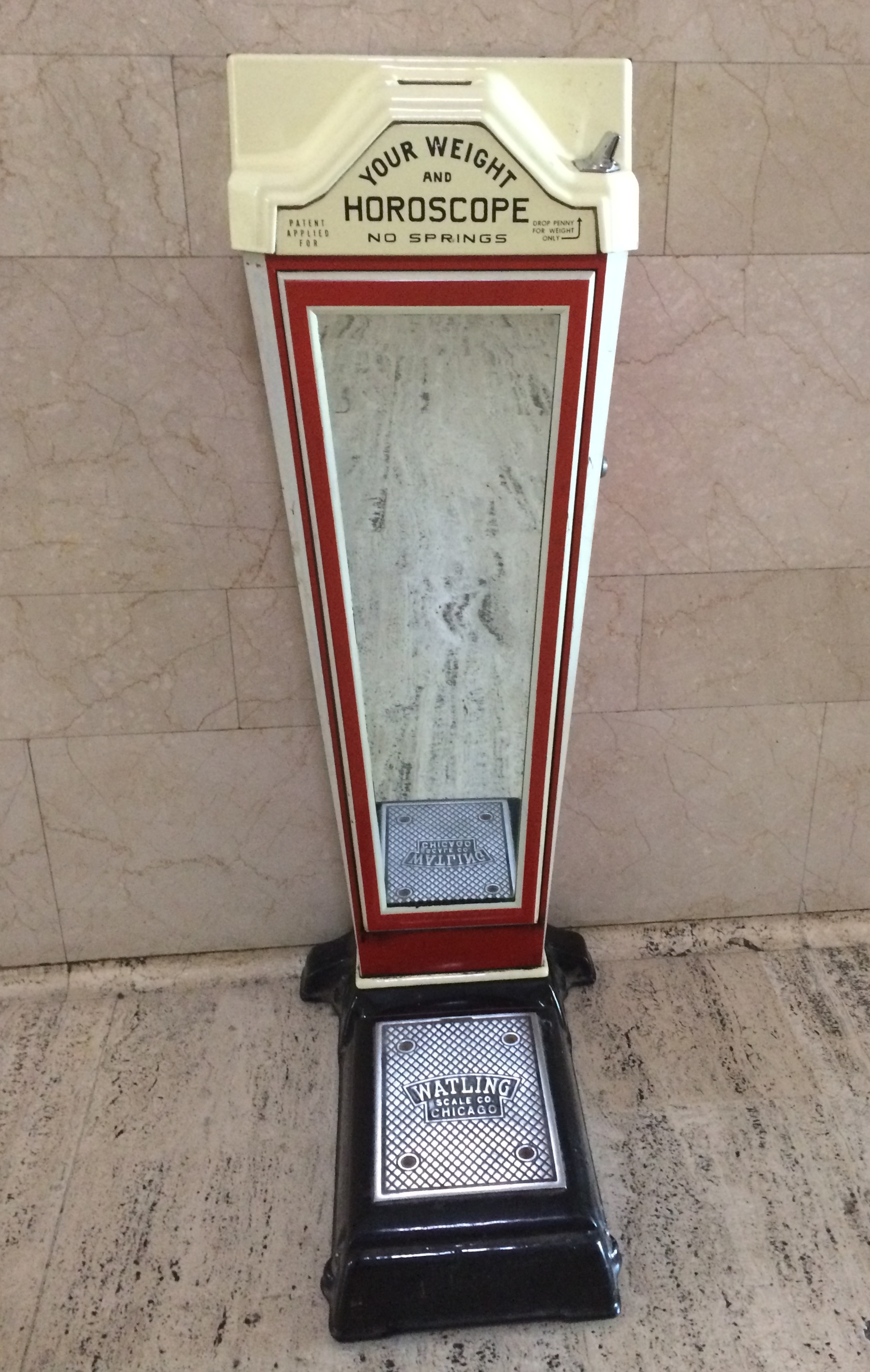 Further to the east on Wisconsin Ave. — there’s that street again — is the Federal Building & U.S. Courthouse for the Eastern District of Wisconsin. They say it’s a grand old edifice, completed in the 1890s to house not only federal courts, but also the main post office and the customs service. I’m sure it must be, but the exterior is a little hard to see in 2019 during restoration.
Further to the east on Wisconsin Ave. — there’s that street again — is the Federal Building & U.S. Courthouse for the Eastern District of Wisconsin. They say it’s a grand old edifice, completed in the 1890s to house not only federal courts, but also the main post office and the customs service. I’m sure it must be, but the exterior is a little hard to see in 2019 during restoration.
 Some of the granite facade is visible.
Some of the granite facade is visible.
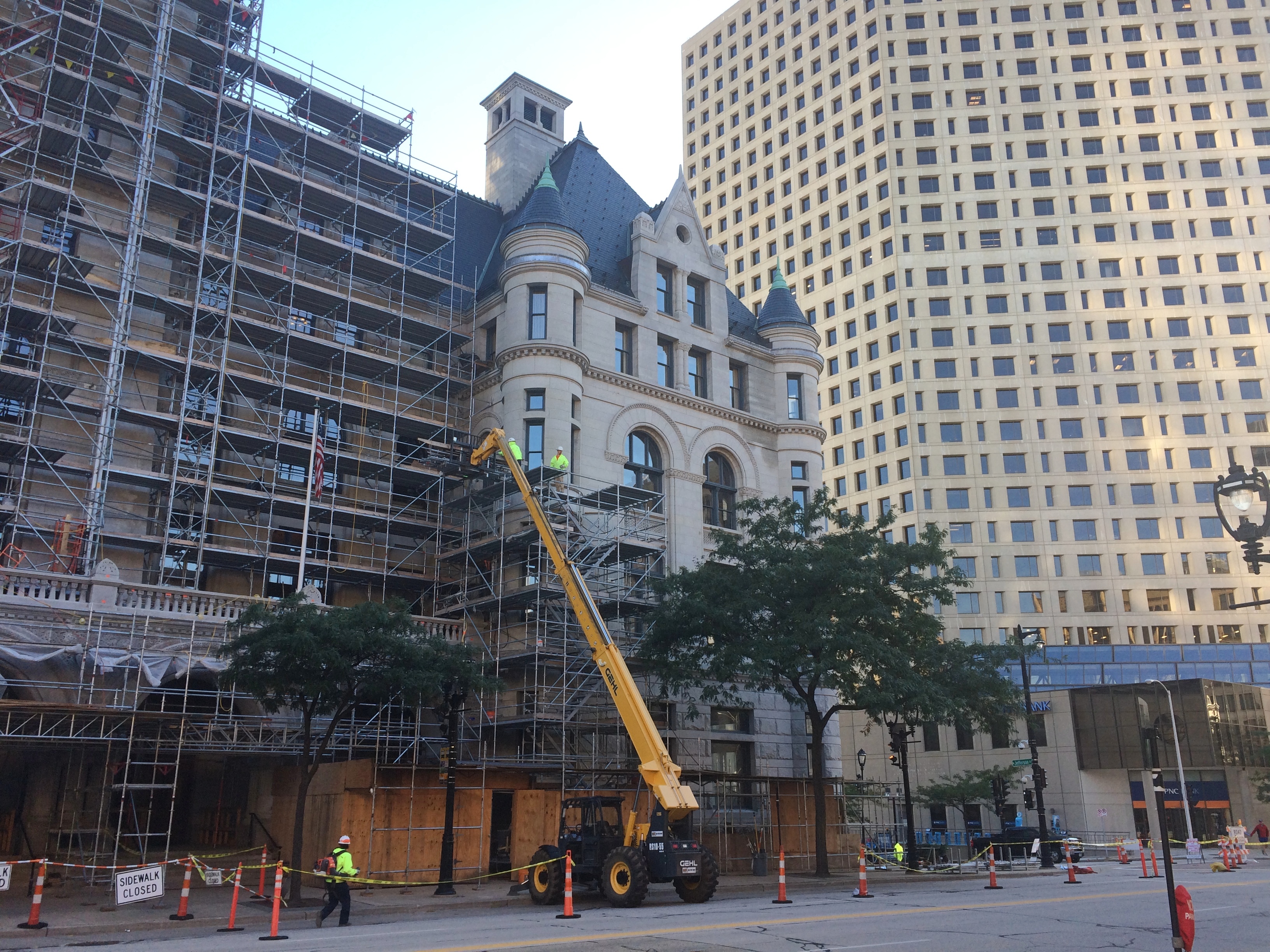 A design overseen by Willoughby J. Edbrooke, whose Wiki page tell us: “[He] remained faithful to a Richardsonian Romanesque style into the era of Beaux-Arts architecture in the United States.” A man who knew what he liked and stuck with it.
A design overseen by Willoughby J. Edbrooke, whose Wiki page tell us: “[He] remained faithful to a Richardsonian Romanesque style into the era of Beaux-Arts architecture in the United States.” A man who knew what he liked and stuck with it.
The vaulting atrium impresses mightily, but it’s hard to capture its image with a simple camera. Looking up, the view is through a steel structure which I assume is for support in some way.
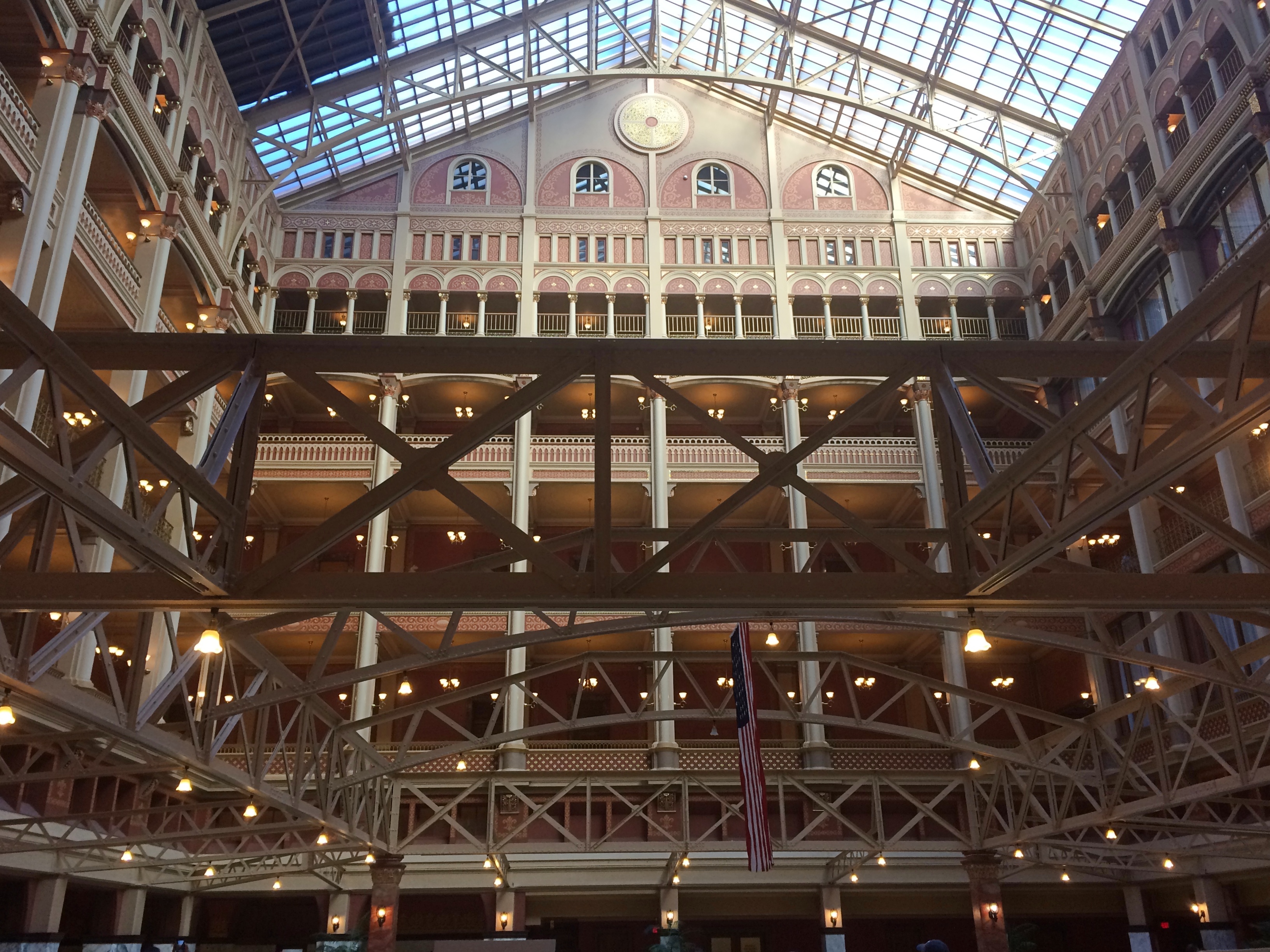 These are views from the fourth floor. Originally the atrium roof was open, in the way pre-air conditioning buildings often were.
These are views from the fourth floor. Originally the atrium roof was open, in the way pre-air conditioning buildings often were.
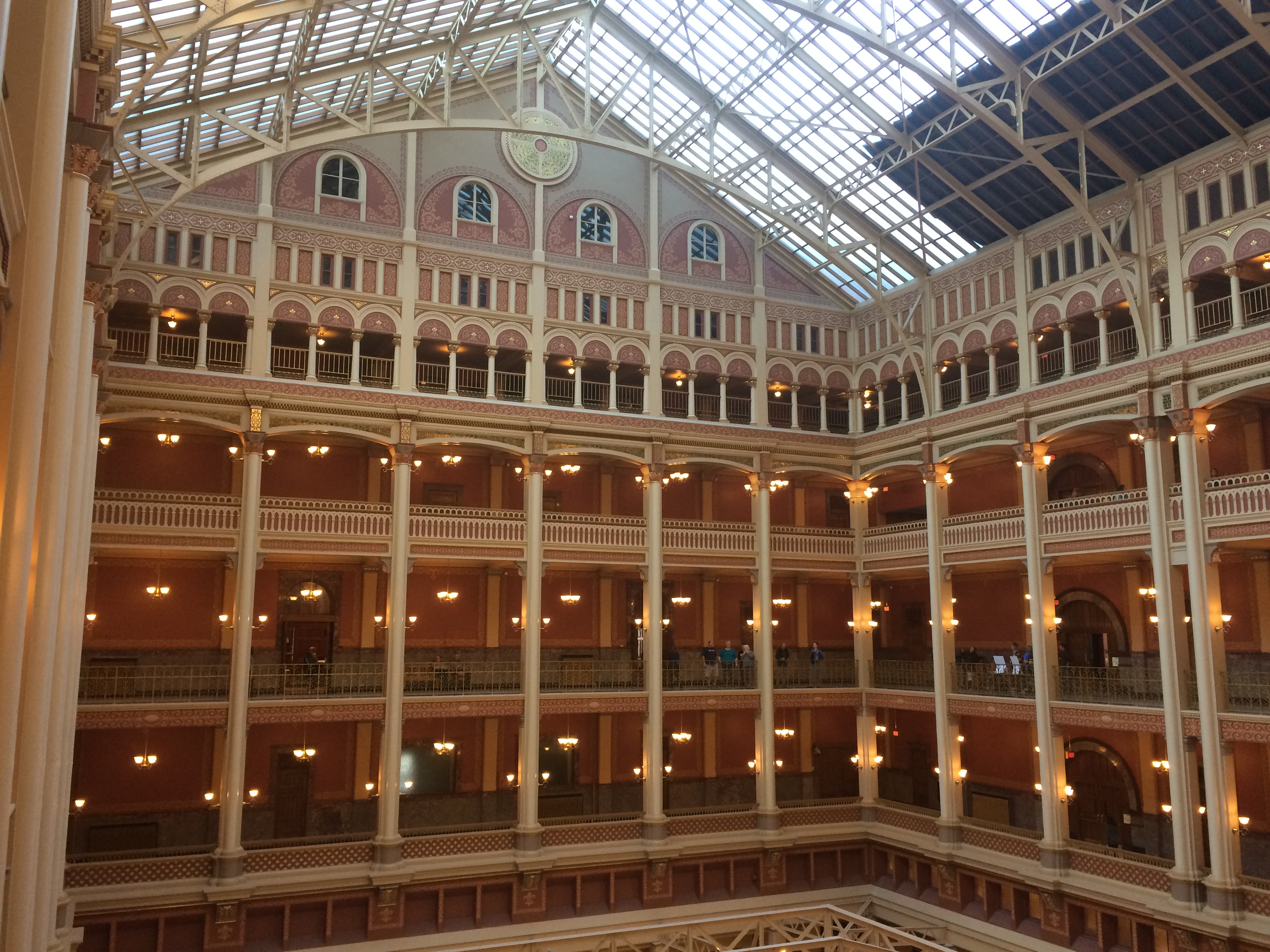
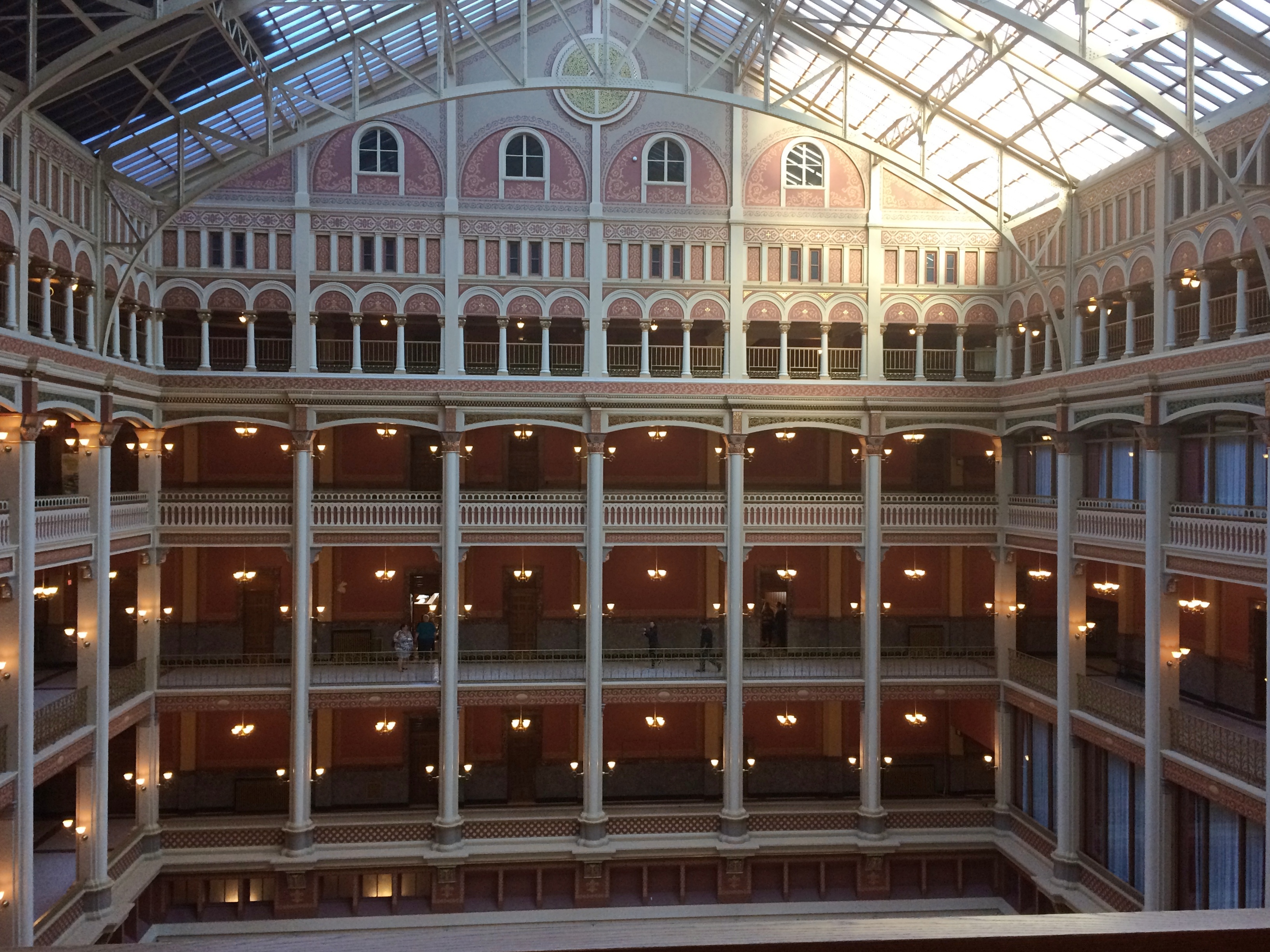 We saw two courtrooms, including the Ceremonial Courtroom and its exceptional woodwork.
We saw two courtrooms, including the Ceremonial Courtroom and its exceptional woodwork.
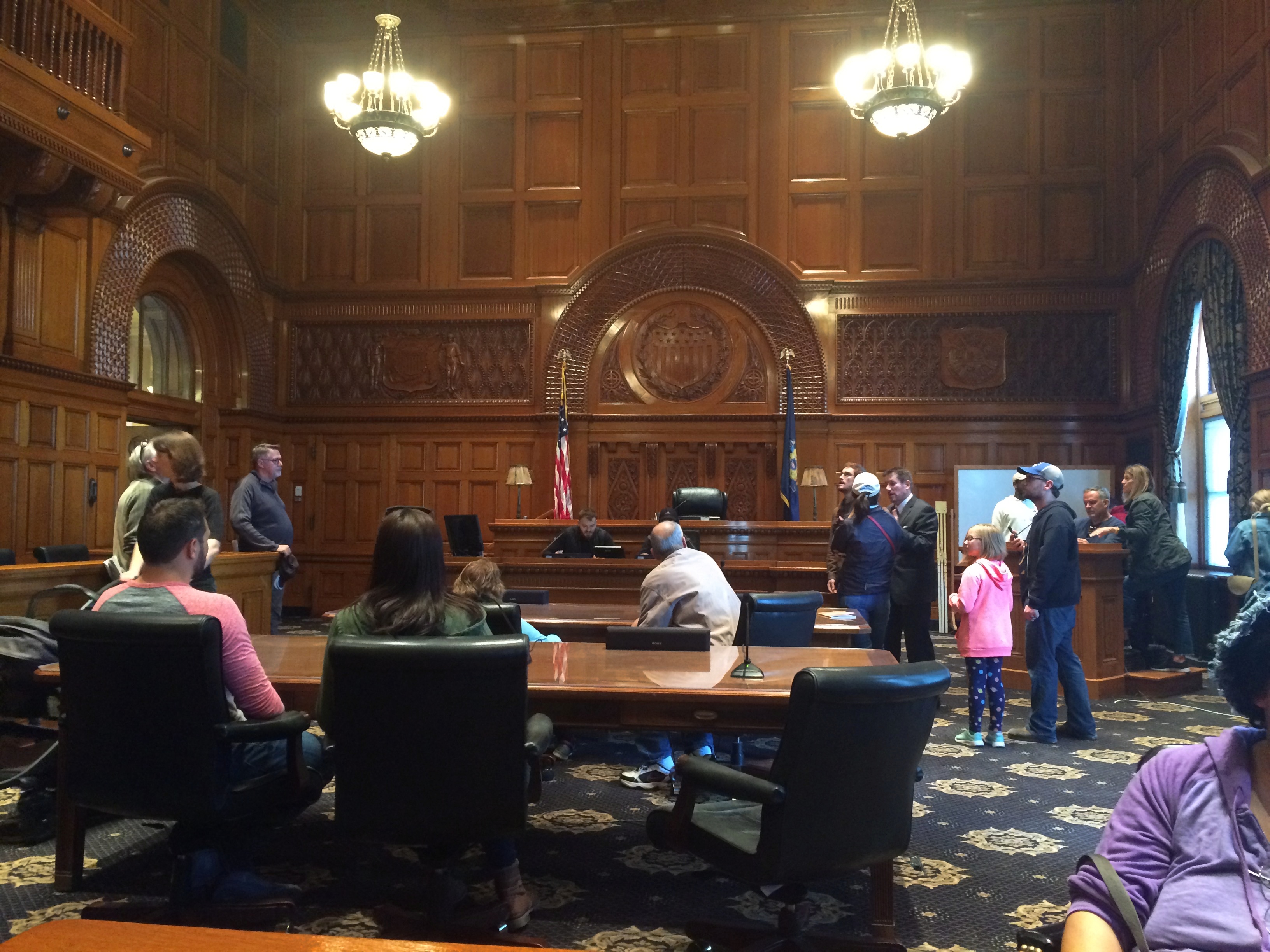
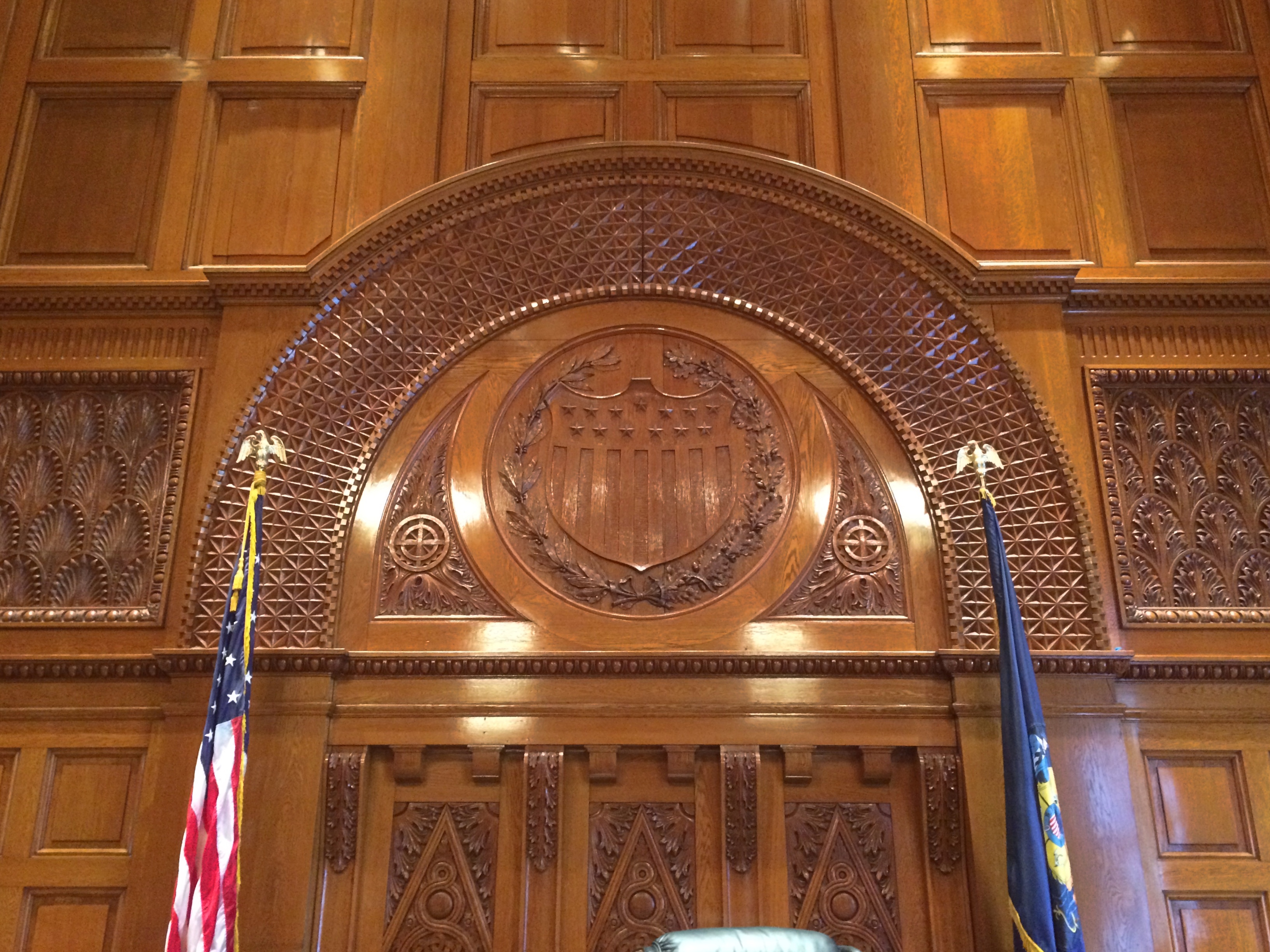
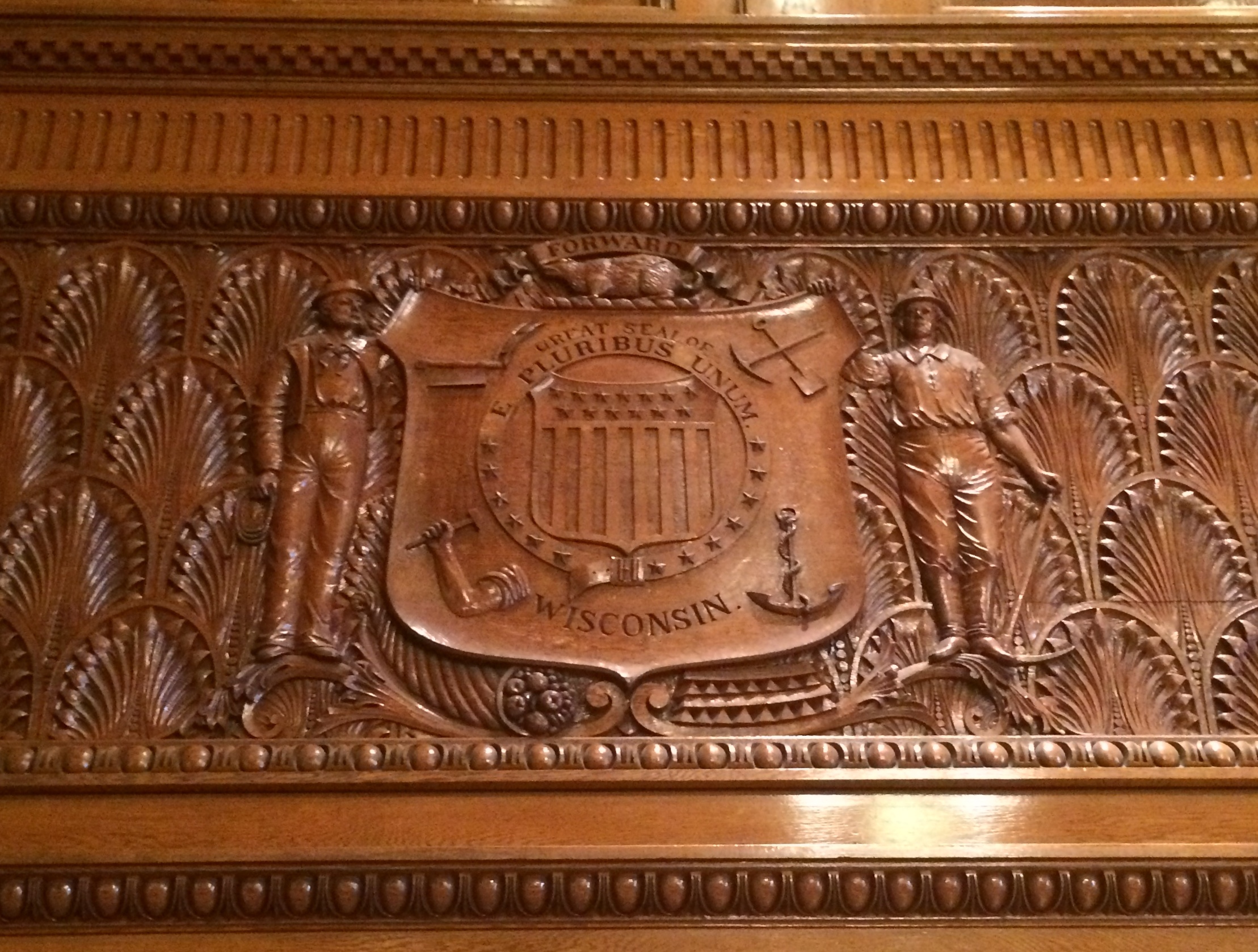 Called “ceremonial” because besides being a workaday federal courtroom, it’s also where new judges and new U.S. citizens tend to be sworn in.
Called “ceremonial” because besides being a workaday federal courtroom, it’s also where new judges and new U.S. citizens tend to be sworn in.
